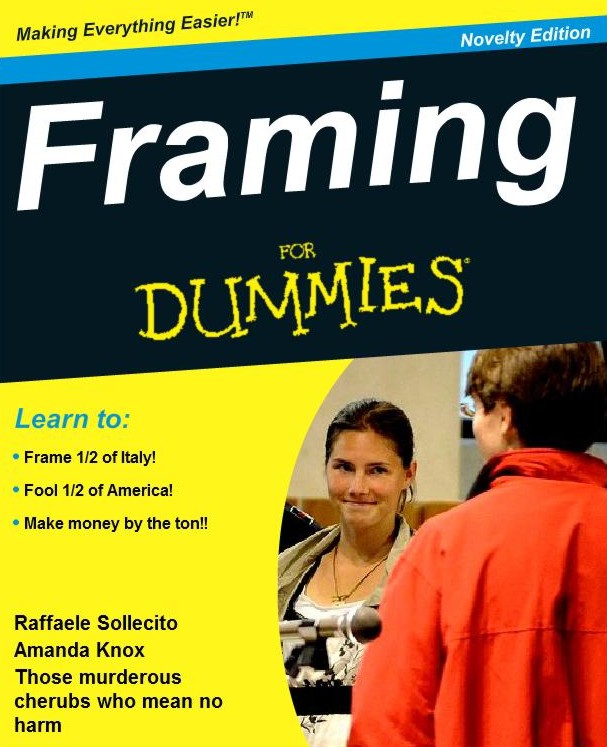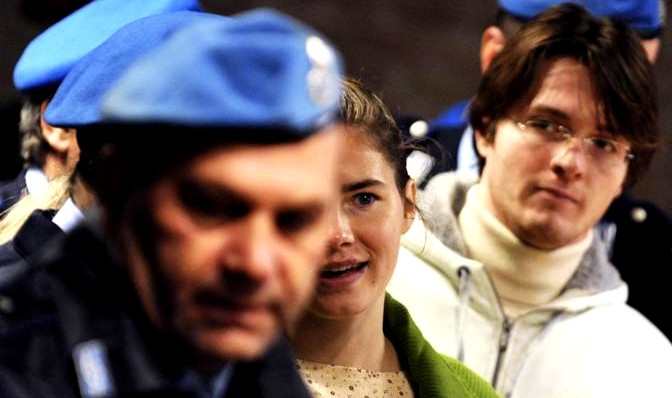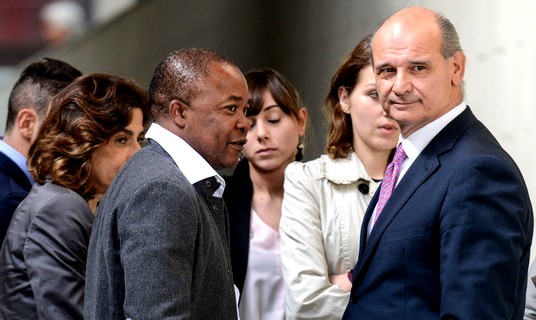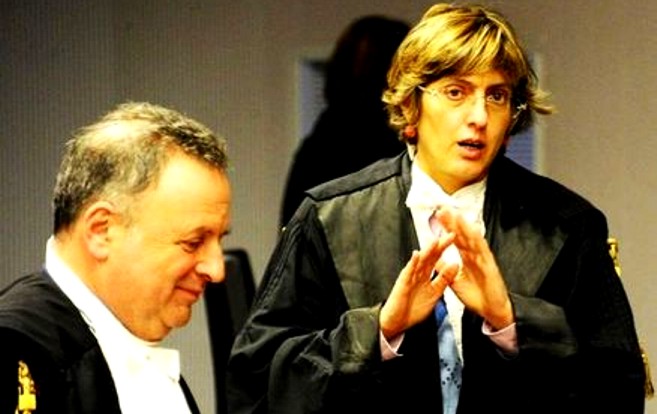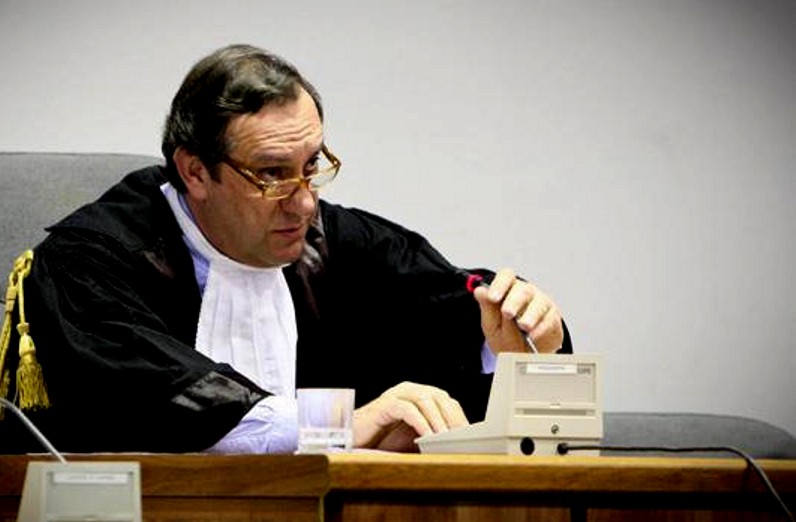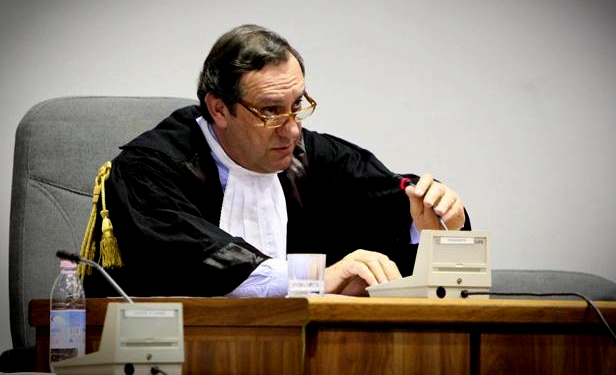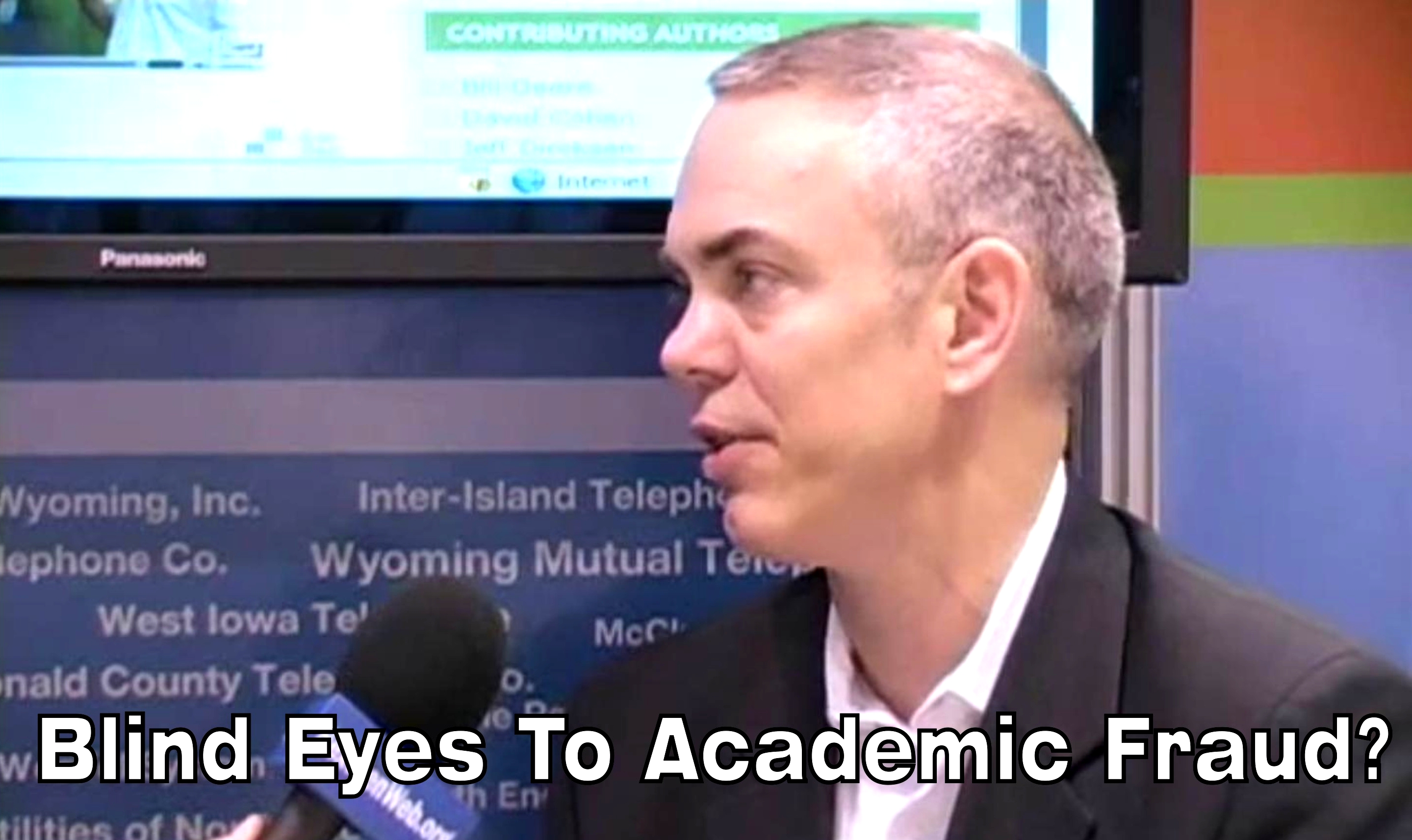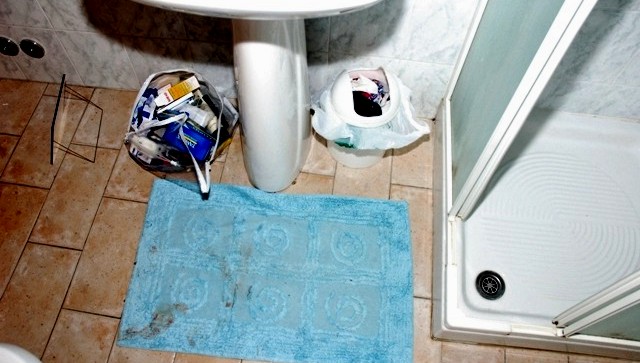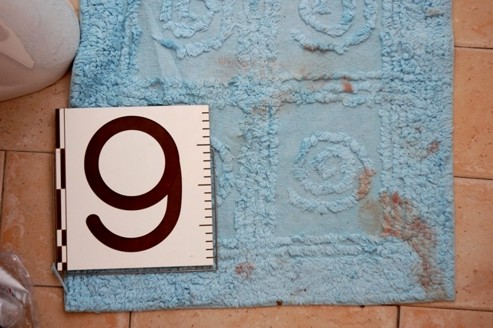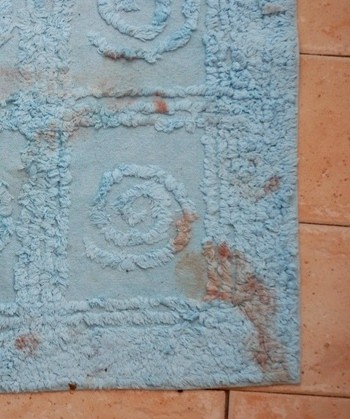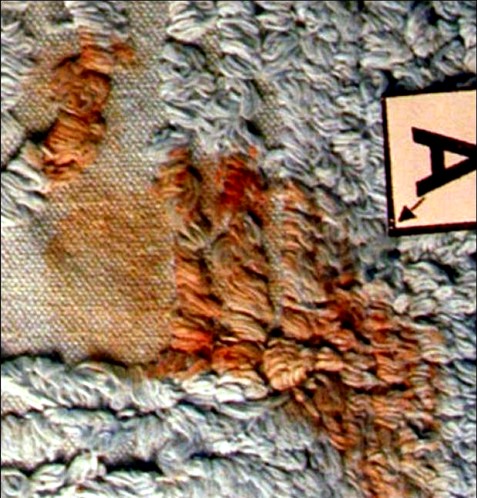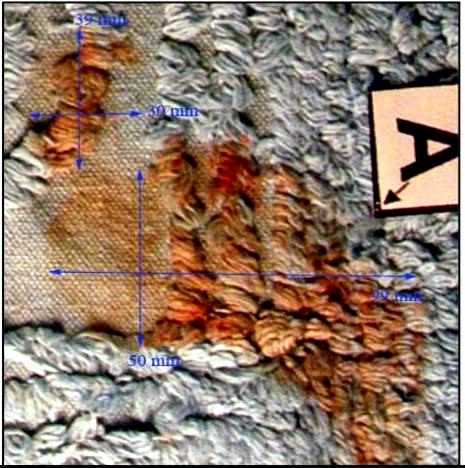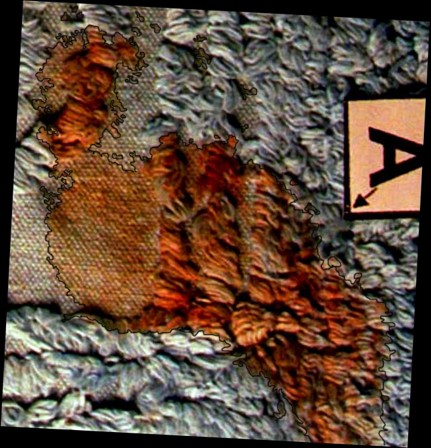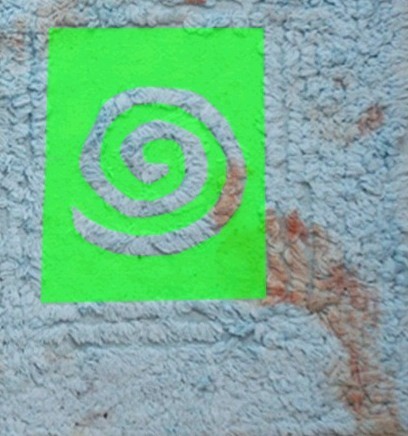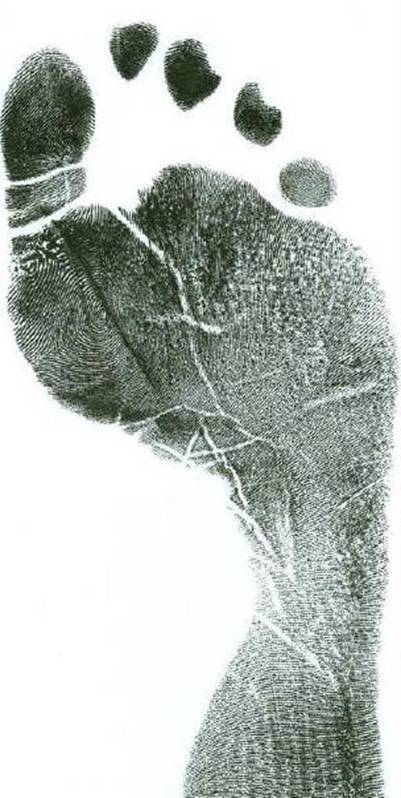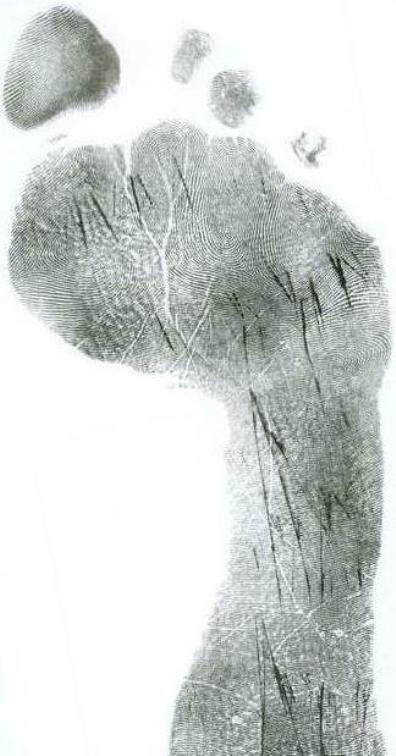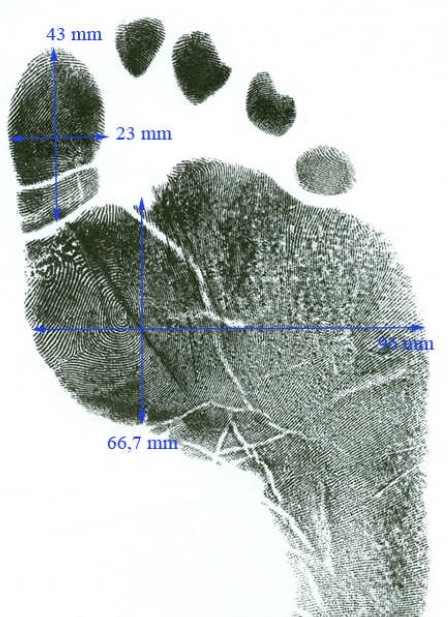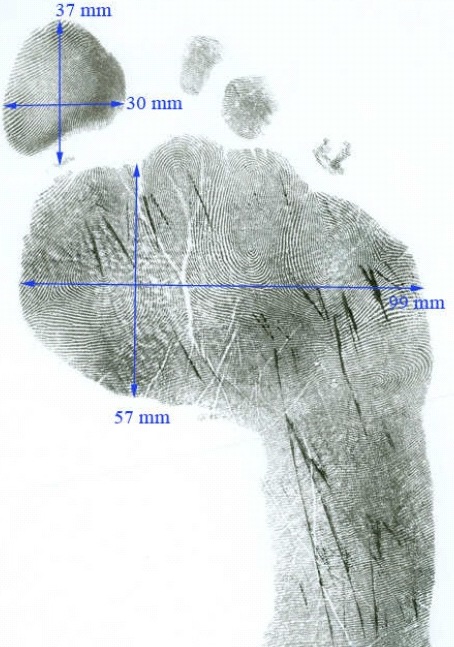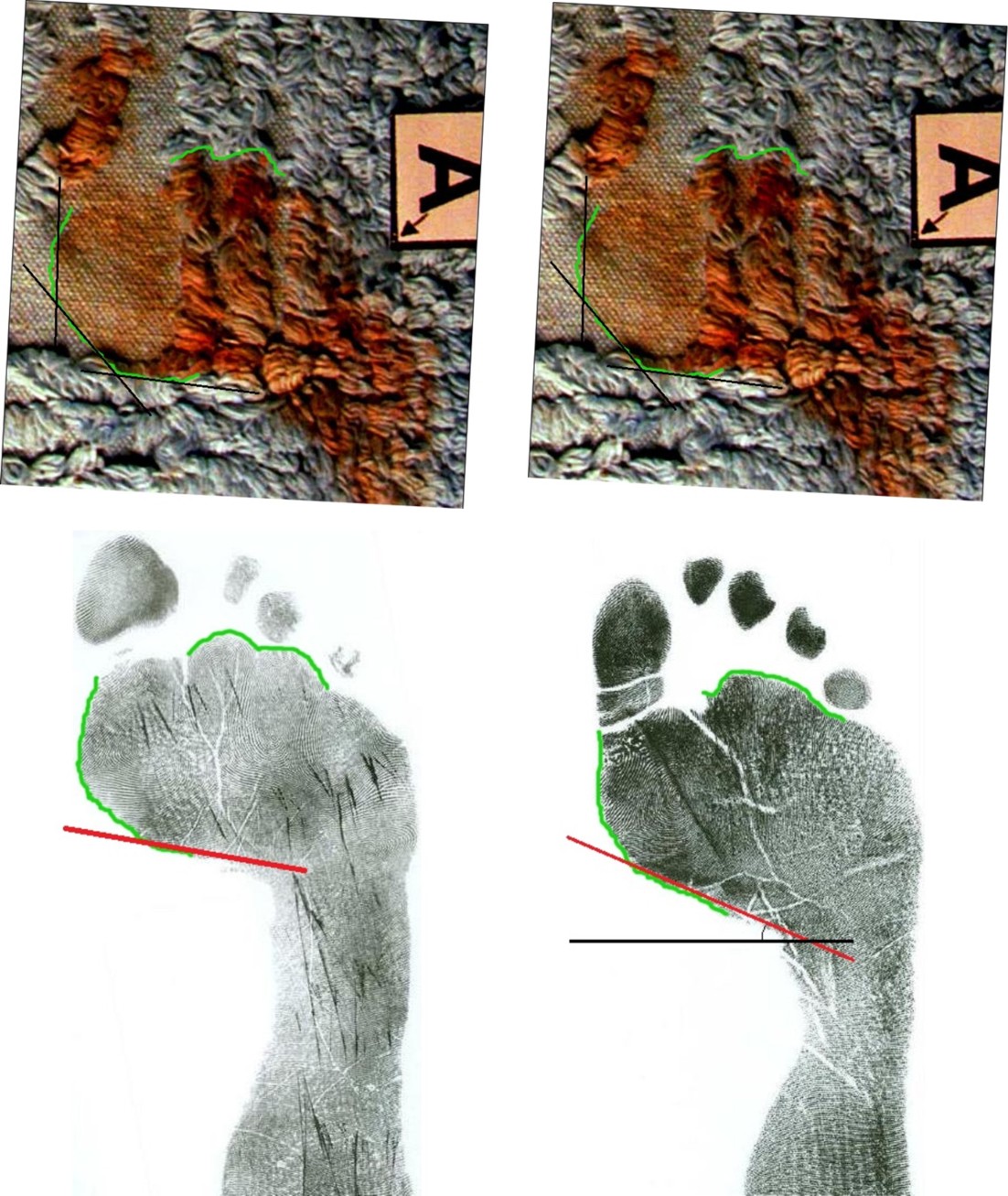
Political & economic headsup: US is demonstrating unsorted systems problems in spades. Do watch your investments. As Washington DC policy gets more & more off-target, big New York investors are betting very heavily that stocks will soon crash. Gross systems mismanagement 2017-20 tanked stocks several times.
Monday, June 23, 2014
Knox Interrogation Hoax #7: Testimony Of Witness Lorena Zugarini To Knox Conniption 5-6 Nov
Posted by Our Main Posters
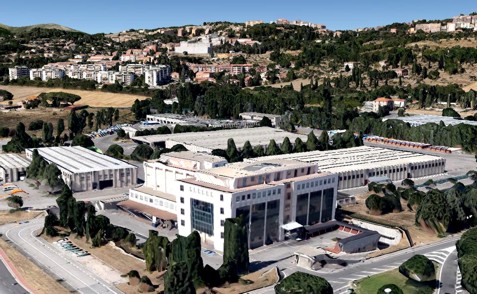
[Perugia cental police station: Meredith’s house is several miles away directly behind]
1. Place In Series Arc Of This Post
This translated transcript continues the testimony of Inspector Lorena Zugarini quoted in the post directly below.
It is a further description from the fourth of about eight police staff who testified to Knox agreeing to help out with a list of possible perps and then melting down at the central police station on 5-6 Nov.
We’ll have one more eyewitness post and after that what the oversight judges made of this in 2008. Thereafter, Knox’s disbelieved claims on the stand at her trial in 2009 when she tried to deny framing Patrick, and accused the police of crimes, and the reasons why all the trial and appeal judges from 2009 to 2014 concluded she had lied, and all the many witnesses had told the truth .
Then we enter an alternative universe, that of Amanda Knox herself (really) and the many Knox addicts mainly in the US who amazingly have shrugged off all of this rock-solid arc, and have pushed the interrogation hoax to its present ludicrous shape and size.
Those alternative-universe posts should put the shrill conspiracists on the put-up-or-shut-up spot and determine whether Knox continues on the same futile, damaging tack.
6. Testimony of Inspector Lorena Zugarini At Trial
To the co-prosecutor at trial Dr Mignini Inspector Zugarini describes her role in the summary/recap session in which Amanda Knox built her list of seven possible perps.
Yet again the main thrust is that Knox was being treated pretty nice, and that if anyone dropped her in it, it was Sollecito and Knox herself.
Inspector Lorena Zugarini was there along with with Rita Ficarra (see posts 1-4) and Anna Donnino (see posts 5 and 6) and Ivano Raffo from Rome who, Rita Ficarra testified, held Knox’s hand to calm her down.
This also is new translation by the professional translator ZiaK. “GCM” who often seeks clarifications is Judge Massei.
Prosecutor Dr Giuliano Mignini
Dr Mignini: Did you question Amanda by any chance?
Lorena Zugarini: Yes.
GM: Therefore? [sic: typo “quindi” instead of “quando” = “when”]
LZ: The 5th.
GM: Did you do anything particular from the 2nd to the 5th other than these routine investigations, crime-scene investigation, I don’t know ...
LZ: No. Granted, one couldn’t go inside the house because there was the Forensic Police, so we, as the Flying Squad, we are not supposed to enter until the Forensics have finished, always because of the question of contamination of evidence.
GM: The Forensics, when [did] they finish the initial operations?
LZ: Initial - if I’m not wrong - the 6th; either the 5th or the 6th.
GM: So on the 5th, you heard Amanda?
LZ: I was there, in the Questura [Police station] because very few hours of the night, not days, but very few hours of the night, and like me also other colleagues - especially those who were from the Section that was more or less, shall we say quote unquote, in charge of the murder issue - we almost stayed overnight in the Questura, except for two or three hours at night, when we’d go home.
GM: Do you recall when Amanda arrived?
LZ: So on Amanda, I remember that Raffaele Sollecito was called and invited to come and be heard/questioned. They told me that Raffaele was out to dinner, that he’d been given the possibility of finishing dinner, of eating, etc. etc., and to then come to the Questura. And I remember that along with Raffaele there was also Amanda, and honestly, I said to myself: “But how on earth is it that these two are always together?” Because we, on that evening ... that is to say, we, our staff, we had called only and exclusively Sollecito.
GM: So you were together with Rita Ficarra that evening?
LZ: I was there in the Questura - when Raffaele was called, Rita Ficarra wasn’t there [yet].
GM: So you were present when Amanda arrived?
LZ: Yes, I was present when Amanda arrived, and Raffaele Sollecito. Raffaele Sollecito was taken up to a room that was ..., he was to be heard/questioned by other colleagues if I’m not mistaken, also by Deputy Commissioner Napoleoni. After which, Amanda was made to leave the room, and I personally accompanied her to the outside of the Flying Squad [offices], to where there were seats, and she was made to sit [NdT: also “made comfortable”] there. Then after [doing] that thing, I instead returned back inside the Flying Squad [offices].
GM: And so you carried out, you heard/questioned various people that evening, no?
LZ: I heard/questioned more than one person. Raffaele Sollecito, I didn’t hear/question him, me, because there were already colleagues who were hearing/questioning him. I was there inside the Flying Squad [offices], [where] maybe I was reading the recaps/summary informations of the others, or else I was looking for a moment at the case files.
GM: Do you remember when… When Inspector Ficarra started to hear/question Amanda, you were - shall we say - in the Flying Squad [offices]?
LZ: I was there, in the offices of the Flying Squad. I was going out of the Flying Squad [offices], together with the Deputy Commissioner, in order to go down[stairs] to the little machine that we have; a drinks and snacks machine. We wanted to go down[stairs] to get something, and I saw that Amanda was talking with some colleagues from the SCO. What she was saying, I have no idea. And in the meantime, I saw Inspector Ficarra come out of the lift on the third floor, that gives access to the Flying Squad [offices].
GM: So you went down[stairs]. And then?
LZ: I went down[stairs]. In the meantime, however, I noted that Amanda, while she was there, was an extremely relaxed person, and I even felt very upset/ill because at a certain point she suddenly did the splits there in the corridor. She did the splits and did a cartwheel, saying “I’m doing a sport”. She said it in English, but in English I don’t know it, me. Translated into Italian, like I know it, it’s a sport that she climbs on rocks with bare hands and no ropes, without anything. In order to show what level of training/preparedness she had. Then I went down[stairs] and I went to get something to drink, in fact, and then we came back up and [Amanda was] together with Rita Ficarra, because Amanda was stating the [names of] people who probably would have visited the house on Via della Pergola, whom she and whom Meredith ... [in short, those] who might have known her…
GM: So, excuse me, let me understand; so you were coming and going in the various rooms?
LZ: Yes, I was coming and going because in that moment Raffaele Sollecito was inside one room with [some] colleagues, and I didn’t think it was expedient/advisable to enter.
GM: Did you stop [in] then, at a certain point, while Amanda was being heard/questioned?
LZ: I went down[stairs], as I’m coming back, to reconfirm, having got the drink, I went back up and I noticed that Amanda was talking with Inspector Ficarra outside [the offices], and that she was saying to her “I’ll tell you the people”. And right there and then, she wrote them down herself in a notebook, on a sheet [of paper] that she had with her. Afterwards, together with Rita, with Inspector Ficarra, then, when we saw the facts/information, we said “Ok”, we said [agreed we needed] an office where we [could] go to hear/question Amanda for a moment, and take her recap/summary information, since in any case she had to wait for Raffaele.
GM: Without telling us the content of the declarations, obviously, [can you] if checks were carried out on the cellphones?
LZ: Well, so, Amanda, she had her cellphone with her still, because there was no reason to need to take it from her, and Amanda handed over her cellphone to a colleague from the SCO, after Amanda said “I’ll write down the names with the telephone [numbers] of the people who probably could have known Meredith too”.
GM: So she handed over the cellphone to the individual from the SCO. Who was that [individual]? Do you remember?
LZ: I don’t remember because there were various colleagues [around] from the SCO.
GM: So this [individual] belonging to the SCO, what did he do?
LZ: He took the cellphone and went out for a moment. I don’t know where he went because I remained inside the room. Shortly afterwards, he came back, and together with Amanda they started to scroll ““ Inspector Rita Ficarra and the colleague from SCO ““ they started to scroll through the messages and they asked her “This one, who is it? This other one, who is it?” and Amanda was answering.
GM: [And] then?
LZ: After, at a certain point, this [officer was] still taking [down] the report/minutes, since the message was reached that, if I’m not mistaken, was from Patrick, that there was written Patrick above it, she was asked who is Patrick, and there [at that point] Amanda “¦
GM: If I can just show [her] the “¦ [shows cellphone screen image].
LZ: Yes, that one there.
GCM: She was shown the copy of the message taken from the cellphone.
GM: SMS.
LZ: [The] SMS on Amanda’s cellphone.
GM: And then?
LZ: Yes, she was asked for explanations regarding [the] “Certainly, see you later, good evening” [“Certo, ci vediamo più tardi, buona serata”]. We asked her who Patrick is, and in that moment Amanda shed tears ““ whether she was crying sincerely [in earnest] I don’t know ““ however she shed tears.
GM: Did she make any gestures/movements?
LZ: Yes. She put, I remember that she hiked up/drew up her legs, she crouched on her chair, put her hands around her head, on her ears, and started to say “He’s bad/mean, he’s bad/mean”, to shake her head, she said: “I remember hearing Meredith who was screaming, and Patrick who was hurting her”.
GCM: One cannot report on the declarations made unless”¦ Please.
LZ: I beg your pardon.
GM: What thing…
GCM: So she had this behaviour?
LZ: Yes.
GM: You saw this behaviour?
LZ: Yes.
GM: So then what happened? What did you [all] do?
LZ: At that point, Inspector Rita Ficarra decided to suspend the minutes/written record because the position had changed a bit, because she said to us “I was “¦” ““ Ah! I cannot”¦
GCM: Yes, you cannot. So she was changed, and you suspended the minutes/written record, and “¦
LZ: Yes, we interrupt [sic] the “¦
GM: They were in accordance with Article 63.
LZ: We interrupt [sic] the minutes/written record. I personally said to her if she wanted ...
GM: Because indications of guilt had emerged?
LZ: Yes, exactly. I said [sic] to her if she wanted the presence of a Lawyer, [to] which she said “No, I don’t need one”.
GM: Can you describe for us what you did after, that is to say, what happened afterwards? Did she continue to cry? What did she do?
LZ: I repeat, I can’t say whether [she was] crying: she was shedding tears: a behaviour that was still strange. She had a moment of, if I may say this, of crisis, seeing this type of message and [us] asking who this person was, after which I left the room “¦
GM: Bu you, excuse me, did you ask “But why does he frighten you? Why are you crying?” Did you ask her that?
LZ: Yes, certainly that was asked of her. She, [in answer to] such a question, said to me: “I remember that inside, that I was inside the kitchen”.
GCM: Enough. On this, obviously, you cannot report, unless it is necessary/helpful. So you asked explanations about the behaviour”¦
LZ: Yes, for me it is helpful/necessary because I didn’t understand such a type of behaviour on [NdT: i.e. “in response to”] a completely normal message.
GCM: And you asked for an explanation.
LZ: Yes. I said to her: “What on earth? What is happening? Who is [NdT: my emphasis] this person?”
GCM: In the scope of the interrogation?
LZ: Yes. Because until 5 minutes earlier, she was a completely normal person.
GCM: So you asked for explanations of this behaviour. Ok.
LZ: [Until] 5 minutes earlier she was completely normal, [and] then when she saw this message, and at the question “Who is this Patrick” she flew off the handle [NdT: “escandescenza” is actually a fit of rage, with violent words and menacing gestures”, I don’t know if the witness used the word in the sense of “fit of rage”, but this is the meaning of the word she chose.]
GCM: These fits of rage, what did they consist of? [Did] she shed tears and shake her head?
LZ: Yes. She drew her legs up, [and] put her hands on her head.
GCM: Hands on the ears?
LZ: She put her hands on her head, [and] started to do like this.
GCM: She was shaking her head.
LZ: She was shaking her head, and said to me “To me, this person “¦”
GCM: You cannot. That is to say, you can report the declarations made only if they were useful, and to give us an indication about the subsequent investigative activity.
LZ: For me, personally, I repeat, it was a moment in which I see this message, that is I ask [what] the presence of this message [means], and I see a reaction of this type, I ask myself “What on earth What has just happened?” [sic: NdT: Zugarini also speaks often in the present tense.]
GCM: And she gave the answer that she [NdT: also “you”] gave.
GM: Had you Did you, in the investigations that you carried out, had you conjectured [the occurrence] of a sexual assault?
LZ: I personally, yes, because she [NdT: i.e. Meredith] was naked.
GM: Because she was naked. But what are the elements that made you think of sexual assault? On what basis did you carry out investigations”¦? You said that one element was the fact that the young woman was naked.
LZ: Yes.
GM: What other elements? I mean, these declarations, shall we say, were they the cause for carrying out investigations on a sexual assault?
LZ: I’ll go back to reassert that, from the moment when she was shown a message and a reaction of a person to the question “But for what reason are you doing these things? Why are you reacting in this way to this message?, she says to me “I see this person who is doing evil, and I hear my friend Meredith who’s screaming”; in all honesty, we also had a doubt, in short.
Maria Del Grosso [Knox lawyer]: President, I am trying to reiterate the objection, because here there’s a continuous”¦ it’s a continuous violation.
GM: However it is impossible”¦
GCM: Because the Prosecutor’s question concerned at a certain point [whether] the investigations also turned towards a hypothesis of sexual assault, and she gave him a positive answer saying that yes, because the body was naked, [so] there are other elements too”¦
LZ: Other elements of people who knew ““ especially Meredith’s English friends, who Meredith visited in a regular way, who said to us that Meredith, from what they told us, was a very serious person, who did not give absolute familiarity/intimacy, that is to say, she did not give much familiarity/intimacy”¦ naturally being a girl, and being also a [burdened/serious] type of girl, the young men who gave recaps/summary information said that”¦ that they also, if one can say this, tried it on with her, to which she absolutely never gave them any encouragement”¦
GCM: So on the basis of these [pieces of] information the investigations were directed towards “¦
LZ: Yes, also the recaps/summary information of people, of people who were heard for recaps/summary information.
GM: After this, to when the minutes/written record was interrupted, between the interruption of the minutes/written record and the presentation”¦ to the spontaneous declarations: how much time passed?
LZ: I didn’t understand [you], excuse me.
GM: Between the moment when the minutes/written record was halted by Inspector Ficarra to the moment when I heard her [give her] spontaneous declarations, how much time passed?
LZ: That, honestly, I can’t tell you, because from the moment when Patrick Lumumba’s name came out, and we knew that he was in fact the owner of a pub located on Via Alessi, etc. etc., I personally went together with other colleagues “¦
GM: So you left “¦
LZ: I left Amanda. Also because, to be honest, I didn’t really discuss it earlier, but I had, shall we say, a bit of an exchange of ideas with Inspector Rita Ficarra, because Inspector Rita Ficarra went down[stairs] several times with Amanda to get drinks from down there, from that same little [drinks-and-snacks] machine in the Questura.
GM: Listen: can you recall for me whether she was subjected to aggressions, to pressure, to blows?
LZ: Absolutely not! Even if I remember perfectly that, still with Inspector Rita Ficarra, I said to her “We’re talking about a girl [who’s had her] throat slit”, and the owner [NdT: in the feminine] of the actual/current bar that is located within the Questura [premises] was made to come up with a hot drink and little baked goods that were brought to Amanda, and I made a joke that not even in 20 years of [being in the] Police had any colleagues ever brought me these kinds of things like that, in the [same] way as Amanda was being treated.
GM: So therefore you were present then for the [written] spontaneous declarations?
LZ: Of Amanda?
GM: Of Amanda.
LZ: No. The minutes/written record was interrupted…
GM: Was there an interpreter?
LZ: Yes, the interpreter. In fact, Amanda’s recaps/summary information were even taken with a bit of delay because, if I’m not mistaken, Inspector Rita Ficarra came back to the Questura, or at any rate she came out of the lift of the Questura, at around about 23:00 hours, and if I’m not mistaken the minutes/written record began around 01:00 a.m.: around about 01:00 the minutes/written record was taken in the waiting for an interpreter of the local Questura, Anna Donnino, to come from her house to the Questura to be able to take Amanda[”˜s declaration], even though she [Amanda] spoke in a fairly passable Italian.
GM: So you, in effect, lose contact with Amanda, and you deal with ...
LZ: From the moment when the minutes/written record was interrupted”¦
GM: [So when] the minutes/written record is suspended, you begin, you participate in the search for Patrick.
LZ: I participate in the search for Patrick.
GM: And then what other activity did you carry out?”¦ [continues on other subjects]
Patrick Lumumba Attorney Pacelli
CP: Just a few clarifications on the questioning by the Public Prosecutor, to follow up on a question that Dr Mignini made a short while ago, with regard to how your investigations turned to the, shall we say, sexual aspect, or as if to the sexual backdrop of the crime, because in fact, in answering the Prosecutor, you said “I had formed my own personal opinion of a sexual backdrop, seeing the body of the poor victim semi-naked, or at any rate, naked.
Inspector Lorena Zugarini: Naked.
CP: So, to follow up in what was perhaps the Prosecutor’s intentions, I wanted to understand: was it also because of the content of the declarations made by Knox on the night of 5 November that your investigations turned towards the sexual backdrop? That is, was it also because of what Knox said to you that night?
LZ: I’ll return to reconfirm, Attorney, that from the moment when Amanda ““ who previously had been [one of the] most calm people in the world, because after we had given her hot drinks, water, she had kept her cellphone with her, and all that ““ from the moment in which a colleague, together with Inspector Rita Ficarra, showed her the message and from the tone of the message ““ it is a very normal message as far as I’m concerned, it’s an extremely normal message ““ [so], not understanding Amanda’s reaction, if until three minutes before she was [one of the] most calm people in this world, not understanding Amanda’s reaction in relation to the message, logically questions were asked of her: “but why do you have this behaviour as soon as you read this message?”
CP: So after her answers, also because of her answers, you turned towards “¦
LZ: When a person says to you: I see, I hear Meredith’s screams”¦
CP: Yes, but you were perfectly clear. A final clarification: at a certain point, you go away. However, before leaving, [did] you witness/were you present at Amanda’s declarations of accusation, what Amanda declared with respect to Patrick Lumumba?
LZ: Absolutely, yes, because I turn again to reassert that if you read the message”¦
GCM: Yes, absolutely, yes. Please, Attorney. The question?
CP: In making these affirmations, before making these affirmations, or while she was making these affirmations, was Amanda struck with kicks or punches or slaps?
LZ: In the most absolute way [No].
CP: Was she in any way, by any one of you, forced to make declarations, or “¦ the declarations that she made, some of the declarations, or all of the declarations that she made in that moment?
LZ: Attorney, I tell you again that what we are doing, it is not an interrogation, [but] what we are asking “¦
GCM: Yes, yes. Excuse me, but it’s enough to simply say no.
LZ: When we ask things of a person, we ask them [sic], it’s logical. Maybe tiredness might take over”¦
CP: Were any of the subjects that Amanda made declarations about suggested to her in any way, or were they all carried out on her own completely spontaneous will? There was no suggestion of names, of ways, of circumstances?
LZ: Me, I never saw Amanda before, before 2 November.
CP: No, but I’m saying 5 November. Was something of what she had [NdT: “had” as in “posssessed” not as in “was made to”. I.e. it is the Past Simple of the verb “to have] to declare that evening suggested to her?
LZ: Absolutely not.
CP: So you can confirm to us that, at any rate, even in those circumstances and for the whole period from 2 to 5, until all her declarations, even until the arrest, she was always treated with respect, with humanity, and with absolute”¦
LZ: I repeat again, I made that joke with Inspector Rita Ficarra, even the current owner at that time of the bar inside the Questura, brought her I don’t remember if it was a camomile tea or a black tea, with little pastries and a croissant.
CP: I have no further questions.
Sollecito Defence Attorney Bongiorno
GB: You participated in the preliminary hearing, you were present?
LZ: Yes.
GB: All the preliminary hearings, some?
LZ: Almost all.
GB: Even the one when Stefanoni was heard/questioned?
LZ: No.
GB: In the one when Kocomani was heard/questioned?
LZ: No.
GB: When we did the pleadings/summation and the prosecutor’s final statement?
LZ: Some, yes.
Knox Defense Attorney Luciano Ghirga
LG: ... Listen, now let’s turn to the evening of the 6th when you participated with Inspector Ficarra in the recaps/summary information of Amanda Knox.
LZ: Of the 5th.
LG: No, of the 6th, because it is after midnight, [it is] one-forty-five. The night between 5 and 6, that is the beginning of the minutes/written record, and 01:45 hours, so we understand each other, and they are called summary informations/recaps.
LZ: Thank you.
LG: No, I didn’t mean anything. You said the 5th, for me it is the 6th, that’s all: it’s not contentious/a contradiction.
GCM: Please Attorney.
LG: And then, it’s not actually necessary.
LZ: No, no.
LG: Do you recall whether, having begun these interrogation activities, one or other of your colleagues who was participating in Sollecito’s interrogation came in to inform you in some way of the progress of Sollecito’s interrogation?
LZ: Yes, there was Deputy Commissioner Napoleoni who every so often came there to see how it was going, and the thing that she then told us that Sollecito was not longer giving the big [sic] alibi as far as Amanda was concerned.
LG: And the operation regarding the SMS message of which you spoke, [that] came about after this information, shall we say, let’s call it information, communication.
LZ: I believe so, yes.
GCM: Excuse me on this; did you communicate this immediately to Amanda Knox? This is what the Attorney was asking.
LG: I have said, this quote-unquote interrogation began “¦
LZ: Yes. I beg your pardon, Attorney.
LG: And a colleague comes, you say that a colleague comes, I don’t know whether it’s Napoleoni, at any rate someone comes “¦
LZ: No.
GCM: Please. Continue, Attorney.
LG: I am referring to this thing that you precisely reported: Sollecito returned [sic] the alibi to Amanda.
LZ: Yes.
LG: Something of the sort. He no longer gives a big [sic] alibi; he removes the alibi, I don’t know: the operations concerning the little message found in Amanda’s telephone, did these occur after this communication?
LZ: Anyhow I tell you that when the Deputy Commissioner, or whoever entered inside that room on her behalf, it’s not that they spoke in front of Amanda, so Amanda could not hear the content of our discussions. After which, I honestly, I believe that the message was shown to Amanda after the presence of Deputy Commissioner Napoleoni or someone on her behalf.
LG: Last question, Mr President: these courtesy activities ““ a hot drink, a croissant, or whatever ““ did they happen after the conclusion of the two interrogations of Amanda, shall we say?
LZ: Absolutely not.
LG: So when did they take place then?
LZ: Well, they took place either before taking [sic] Amanda for the first time, also because we had to wait for the interpreter, if I’m not mistaken, Anna Donnino, who had to come from home because they had called her from the Questura to bring herself [sic] to our offices because we had, in fact, to hear a girl, in the English language, even though she spoke Italian fairly well: for reasons of our own peace [of mind] and for reasons of Amanda’s ease/peace of mind, the interpreter was called. So during the wait for Anna Donnino to arrive, Amanda was provided with both hot drinks and water, and whatnot.
LG: And later you don’t recall whether there was another”¦ You said it first, yourself.
LZ: No, also later.
LG: Also later?
LZ: Also later.
LG: That’s what it seemed to us. Thank you.
LZ: No no, I have said [that] the lady from the bar ““ the bar is closed at night in our place; if I’m not mistaken [it closes] around 5, 5-thirty ““ the bar must have been open already, I already said that the owner of the bar came to bring her chamomile or tea, in short.
LG: Thank you.
Judge Massei
GCM: And a last thing: when the circumstance about the alibi came to light, that Raffaele Sollecito thus did not seem, no longer confirmed the alibi, [when] this fact came to light, did you bring it to the knowledge of Amanda Knox, this fact?
LZ: No, no, absolutely no. Absolutely, not, because ...
GCM: How was it brought to [your] awareness.
LZ: I remember that the Deputy Commissioner came there and said to us: “Listen carefully to/Question carefully Amanda, because there are discrepancies on what Raffaele has said, even during the previous days”.
GCM: As far as you know, [this] was not brought to Amanda Knox’s awareness?
LZ: As far as I am concerned, no.
GCM: Very well.
Friday, June 20, 2014
Knox Interrogation Hoax #6: Sollecito Transcript & Actions Further Damage Knox Version
Posted by Our Main Posters
1. Breaking News From The Sollecito Appeal
It is in effect being reported (see below) that the Sollecto team have asked Cassation to concede that back in 2008 they - Cassation - maybe made a mistake in the law.
That, the Sollecito team said, directly caused a disadvantage to their guy. And they may very well be right. If Cassation agrees, it may leave Knox with no further effective fight.
2. What Happened When Knox Was “Interrogated”
To fully understand this, it will pay you to have read this series which includes major new translations by the professional translator ZiaK. And especially Part 2 of the previous post.
You will see repeatedly confirmed by those who were there these key facts:
(1) Amanda Knox turned up at the Perugia central police station late at night, unwanted and grumpy, and was advised to go home and get some sleep.
(2) Inspector Ficarra later said if she really wanted, she could help, she could build a list of possible perps, in a recap/summary session (not an interrogation).
(3) For maybe 45 minutes, starting at 12:30 am (when the interpreter arrived), Knox quite calmly listed seven names along with maps drawn.
(4) Knox was then quietly told Sollecito had contradicted her alibi (see his newly translated statement below). Knox had no immediate reaction.
(5) Soon after, Knox had a wailing conniption, which really startled the four others present, when Knox saw an outgoing text to her boss she had just said wasnt there.
(6) Police did what they could to calm her down, and she insisted on writing out three statements (see below) in supposed elaboration in less than 12 hours.
(7) She was warned she should have a lawyer each time, the second warning by Dr Mignini, but each time she shrugged off this advice and pressed on.
(8) In the noon statement Knox said this, with no mention of having been coerced: “The questions that need answering, at least for how I’m thinking are… 2. Why did I think of Patrik?”
3. More About Knox’s Three Statements
Cassation ruled in April 2008 that the first two statements could not be used to indict Knox at the murder trial, but all three could be used to argue her framing of Patrick.
All three of Knox’s voluntary statements of 5-6 November say she was at her house with Patrick; the main thrust of the third statement (handwritten when she knew Patrick was being held nearby and may have proved her a liar at any minute) was to spread the accusations around a bit more, and drop Sollecito also in the soup
But the voluntary 1:45 and 5:45 statements also include these damning claims:
Statement 1:45: “I responded to the message [from Patrick] by telling him that we would see each other at once; I then left the house, telling my boyfriend that I had to go to work.
Statement 5:45: “I wish to relate spontaneously what happened because these events have deeply bothered me and I am really afraid of Patrick, the African boy who owns the pub called “Le Chic” located in Via Alessi where I work periodically. I met him in the evening of November 1st 2007, after sending him a reply message saying “I will see you”. We met soon after at about 21.00 at the basketball court of Piazza Grimana. “
See the possible opportunity for Sollecito’s team via the new appeal here? That’s one supposed “proof” that he wasn’t there (or at most came late, to explain his footprints and DNA).
And see the really big problem for Knox? She says she went out from Sollecito’s place on the night - and quite specifically says he did not come along.
4. Dr Mignini’s View On Cassation Ruling
Dr Mignini has several times observed that Cassation misunderstood that Knox herself had insisted on all three statements, ignoring advice he and investigators gave her.
But he did not think it was a make-or-break issue, and to him Cassation is almost invariable respectful and benign. And many Italian legal precedents say yes, in those circumstances those statements really should have been permitted exhibits at the main trial.
5. Now Sollecito Team Agrees With Mignini
1) Read the excellent new report by Andrea Vogt here (her Update of 19 June 2014) which in part quotes the Sollecito appeal saying this:
“The trials lacked an adequate review of the “individual” role of Sollecito, generating instead a sense of his guilt due to… a “confession” made by her, which never mentioned him at the scene of the crime. 1a) That declaration should be used as a favourable element showing Sollecito was not at the scene of the crime, not as a piece of evidence that confirms his guilt.
2) Also read the new report by Barbie Nadeau here [with the caution by Popper in Comments below] which in part says this.
Now, for the first time in this seven-year long, painfully epic case, Sollecito wants to be judged independently from Knox””if not on the case as a whole, at least on the issue of the so-called “false confession.”
6. Sollecito’s Statement Early 6 November 2007
Perugia Police Headquarters
Flying Squad General Affairs Area.
SUBJECT: Witness statement of person informed of the facts given by SOLLECITO Raffaele, already identified.
On November 5th 2007 at 22:40 in the offices of the Flying Squad of the Perugia Police Headquarters. Before the undersigned of the Criminal Investigation Dept. Deputy Commissioner MONICA NAPOLEONI, Chief Inspector Antonio FACCHINI Vice Superintendent of Police Daniele MOSCATELLI, Assistant Chief Ettore FUOCO is present the above-mentioned who, to supplement the declarations made [November] in these Offices, in regards to the facts being investigated, declares as follows: [*A.D.R. = Question Answer = QA]
QA I have known Amanda for about two weeks. From the night that I met her she started sleeping at my house. On November 1st, I woke up at around 11, I had breakfast with Amanda then she went out and I went back to bed. Then around 13:00-14:00 I met her at her house again. Meredith was there too. Amanda and I had lunch while Meredith did not have lunch with us.
QA Around 16:00 Meredith left in a hurry without saying where she was going. Amanda and I stayed home until about 17:30-18:00.
QA We left the house, we went into town, but I don’t remember what we did.
QA We stayed there from 18:00 until 20:30/21:00. At 21:00 I went home alone because Amanda told me that she was going to go to the pub Le Chic because she wanted to meet some friends.
QA At this point we said goodbye and I headed home while she headed towards the center.
QA I went home alone, sat at the computer and rolled myself a spliff. Surely I had dinner but I don’t remember what I ate. Around 23:00 my father called at my home number 075.9660789. During that time I remember Amanda had not come back yet.
QA I browsed at my computer for another two hours after my father’s phone call and only stopped when Amanda came back presumably around 1:00.
QA I don’t remember how she was dressed and if she was dressed the same way as when we said goodbye before dinner.
QA I don’t remember if we had sex that night.
QA The following morning around 10:00 we woke up, she told me she wanted to go home and take a shower and change clothes.
QA In fact at around 10:30 she went out and I went back to sleep. When she went out that morning to go to her house, Amanda also took an empty bag telling me she needed it for dirty clothes.
QA At around 11:30 she came back home and I remember she had changed clothes; she had her usual bag with her.
QA I don’t know the contents of her bag.
QA I remember we immediately went to the kitchen, we sat down and talked for a while, perhaps we had breakfast. In that circumstance Amanda told me that when she got to her house she found the entrance door wide open and some traces of blood in the small bathroom and she asked me if it sounded strange. I answered that it did and I also advised her to call her housemates. She said she had called Filomena but that Meredith was not answering.
QA At around 12:00 we left the house; passing through Corso Garibaldi we arrived in Piazza Grimana, then we went through the Sant’ Antonio parking lot and reached Amanda’s house. To walk there it took us about 10 minutes.
QA As soon as we got there she opened the door with her keys, I went in and I noticed that Filomena’s door was wide open with some glass on the floor and her room was in a complete mess. The door to Amanda’s room was open and I noticed that it was tidy. Then I went towards Meredith’s door and saw that it was locked. Before this I looked to see if it was true what Amanda had told me about the blood in the bathroom and I noticed drops of blood in the sink, while on the mat there was something strange - a mixture of blood and water, while the rest of the bathroom was clean.
QA I went to the kitchen and saw that everything was in order, then went around the rest of the house, I went to Laura’s room and noticed it was tidy. In that moment Amanda went inside the big bathroom, next to the kitchen and came out frightened and hugging me tight telling me that earlier, when she took the shower, she had seen feces inside the toilet, while now the toilet was clean. QA I just took a rapid glance at the bathroom trusting what Amanda had told me.
QA At that point I was asking myself what could have happened and I went out to find Meredith’s window to see if I could climb to it. I went outside with Amanda and she tried to climb to it, I immediately stopped her telling her to not do it because it was dangerous. I then told Amanda that the best solution was to break down the door, I tried to kick it and shoulder it open but I didn’t manage to open it. Then I called my sister on her cellphone and asked her what I should do since she is a Carabinieri lieutenant. My sister told me to call the Carabinieri (112, the Italian emergency number), which I did, but in the meantime the Postal Police showed up.
QA In my previous statement I told a load of rubbish because Amanda had convinced me of her version of the facts and I didn’t think about the inconsistencies. I heard the first statements that she made to the Postal Police who intervened at the place.
QA She always carried a big bag that she also had the night of November 1st.
The investigating officials acknowledge that the deposition ends at 3:30 (AM) of November 6th 2007.
7. Our Analysis Of What RS Signed
Chimera (who is currently working on identifying all of the lies in Amanda Knox’s book) offers these notes.
QA Around 16:00 Meredith left in a hurry without saying where she was going. Amanda and I stayed home until about 17:30-18:00.
QA We left the house, we went into town, but I don’t remember what we did.
Really? Some alibi.
QA We stayed there from 18:00 until 20:30/21:00. At 21:00 I went home alone because Amanda told me that she was going to go to the pub Le Chic because she wanted to meet some friends.
QA At this point we said goodbye and I headed home while she headed towards the center.
In both books, you and Amanda claimed to have spent the evening together.
QA I went home alone, sat at the computer and rolled myself a spliff. Surely I had dinner but I don’t remember what I ate. Around 23:00 my father called at my home number 075.9660789. During that time I remember Amanda had not come back yet.
You don’t remember what you ate, yet both you and Amanda remember vividly the pipe leaking, although you contradict each other on if it happened before.
QA I browsed at my computer for another two hours after my father’s phone call and only stopped when Amanda came back presumably around 1:00.
A false claim: In both books, Knox and Sollecito admitted they turned the phones off
- (a) In Honor Bound, Sollecito says the phones were turned off so they could fool around undisturbed.
(b) In Waiting to be Heard, Knox says she turned her phone off so Patrick couldn’t text back if he changed his mind about her working.
(c) In the December 2007 questioning, Knox says she turned her phone off because it had a limited charge, and she didn’t want to drain it prior to the Gubbio trip.
(d) In the trial, defence lawyers spent much time disputing that the phones were ever turned off.
A false claim: It was shown that the computers were not active. Sollecito also claimed to be emailing many people. Odd, as this would be a solid alibi ....
- (a) Not a single person came forward to say that they received anything from Raffaele.
(b) Raffaele doesn’t name a single person that he emailed.
(c) Not a single sent email was ever traced to his computer at that time period.
QA I don’t remember how she was dressed and if she was dressed the same way as when we said goodbye before dinner.
(Unless the police specifically asked him this), why would Raffy bring up Amanda’s clothes? Were they blood soaked?
QA I don’t remember if we had sex that night.
You were a virgin until Amanda, and you don’t remember having sex?
QA The following morning around 10:00 we woke up, she told me she wanted to go home and take a shower and change clothes.
QA In fact at around 10:30 she went out and I went back to sleep. When she went out that morning to go to her house, Amanda also took an empty bag telling me she needed it for dirty clothes.
QA At around 11:30 she came back home and I remember she had changed clothes; she had her usual bag with her.
You remember the bag in clear detail, but not if you had sex?
In Knox’s statement (one of them), she says she doesn’t remember if she read or made love, but in WTBH, insists they slept together.
QA I remember we immediately went to the kitchen, we sat down and talked for a while, perhaps we had breakfast. In that circumstance Amanda told me that when she got to her house she found the entrance door wide open and some traces of blood in the small bathroom and she asked me if it sounded strange. I answered that it did and I also advised her to call her housemates. She said she had called Filomena but that Meredith was not answering.
Amanda asks you if finding blood is strange?
You immediately went into the kitchen and talked, but don’t remember having breakfast?
Funny, why not mention the mop?
QA As soon as we got there she opened the door with her keys, I went in and I noticed that Filomena’s door was wide open with some glass on the floor and her room was in a complete mess. The door to Amanda’s room was open and I noticed that it was tidy. Then I went towards Meredith’s door and saw that it was locked. Before this I looked to see if it was true what Amanda had told me about the blood in the bathroom and I noticed drops of blood in the sink, while on the mat there was something strange - a mixture of blood and water, while the rest of the bathroom was clean.
QA I went to the kitchen and saw that everything was in order, then went around the rest of the house, I went to Laura’s room and noticed it was tidy. In that moment Amanda went inside the big bathroom, next to the kitchen and came out frightened and hugging me tight telling me that earlier, when she took the shower, she had seen feces inside the toilet, while now the toilet was clean.
QA I just took a rapid glance at the bathroom trusting what Amanda had told me.
Is this normal in Italy for people to not flush smelly toilets, or just these two?
You noticed Filomena’s door was open and was a complete mess, but you didn’t notice the broken window coming in?
And at what point did you ‘‘realize’’ or ‘‘conclude’’ nothing had been taken?
You noticed blood in the sink, but on the bathmat, was it an ‘‘orange’’ like described in WTBH? Or more like a footprint?
But in your recent Porta a Porta interview, did you not tell Bruno Vespa that Amanda didn’t even mention the blood?
QA At that point I was asking myself what could have happened and I went out to find Meredith’s window to see if I could climb to it. I went outside with Amanda and she tried to climb to it, I immediately stopped her telling her to not do it because it was dangerous. I then told Amanda that the best solution was to break down the door, I tried to kick it and shoulder it open but I didn’t manage to open it. Then I called my sister on her cellphone and asked her what I should do since she is a Carabinieri lieutenant. My sister told me to call the Carabinieri (112, the Italian emergency number), which I did, but in the meantime the Postal Police showed up.
This might have been plausible except for that ‘‘minor’’ detail, of Amanda telling the postal police Meredith locking her door was no big deal.
And that ‘‘minor’’ detail, that phone records show the call was made well after the Postal Police arrived.
QA In my previous statement I told a load of rubbish because Amanda had convinced me of her version of the facts and I didn’t think about the inconsistencies. I heard the first statements that she made to the Postal Police who intervened at the place.
QA She always carried a big bag that she also had the night of November 1st.
You are asked about inconsistencies in your alibi, and your immediate response is to say Amanda told you rubbish?
You told the police first that you were at a party with Amanda, then a story that you were together at your place. Now you say it is rubbish, and you were on your computer (even though that was proven false). At the Massei trial you stay silent, at the Hellmann appeal and your book tour you say you were together. Later, at the July 2014 press conference, and February 2015 Porta a Porta interview you say Amanda was with you in the evening, but not the night.
You didn’t see the inconsistencies? It is Amanda’s fault you keep changing your story?
In your book ‘‘Honor’’ Bound, you complain that if ‘’... we, [You or Amanda], deviated one iota from the version you broadly agreed on, it could mean a life sentence for both of you’‘. Gee, nice proofreading job, Gumbel.
You tell the police that Amanda always carried a big bag? Really ‘‘Honor Bound’’ aren’t we? That bag has never been found and Knox has never explained where it is. Knox might have carried a large knife in it, and bloody items the other way. No wonder she ‘‘broke up with you’‘.
So, this is the first whack you’ll take at Amanda? Let’s just hope she doesn’t retaliate by making up some story about you having ‘‘fish blood’’ on your hand.
Conclusions: I think this statement alone is enough to render most of his book total B.S, not that there isn’t a lot more to do so too.
Thursday, June 12, 2014
Fifty Of The Most Common Myths Still Promoted Without Restraint By The Knox PR Campaign
Posted by The Machine
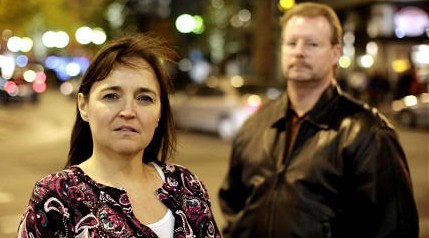
Fooled ya! Knox’s parents have the mythmaking machine’s pedal to the floor, and arent slowing it
Introduction
I’ve listed the 50 most common myths circulating in the media with regard to the Amanda Knox/Meredith Kercher case and refuted them using as far as possible the official court documents and court testimony.
1. Knox was called to the Perugia central police station on 5 November 2007.
Neither the police nor the prosecutors brought Knox in for questioning on 5 November 2007. She was there unwanted, and stayed after it was suggested she go home and sleep.
Amanda Knox herself testified in court that she wasn’t called to come to the police station on 5 November 2007.
Carlo Pacelli: “For what reason did you go to the Questura on November 5? Were you called?”
Amanda Knox: “No, I wasn’t called. I went with Raffaele because I didn’t want to be alone.”
Monica Napoleoni, the head of Perugia’s homicide squad, said they told Knox she should go home to rest, but Knox insisted on staying:
Amanda also came that evening, the evening of the 5th. We said to Amanda that she could go home to rest. Since, during those days, she was always saying, always complaining that she wanted to rest, wanted to eat, we said: “˜Look, you’ve eaten; you can go and rest yourself. If there’s a need, we’ll call you.’
Instead, she was very nervous, and insisted on staying there.
Inspector Rita Ficarra was the one who led the discussion on a list of possible perps with Knox.
Rita Ficarra: My astonishment was that I saw, I found her there, and I found her doing ““ demonstrating ““ her gymnastic abilities: she was doing a cartwheel; she had shown the back arch, she had done the splits, and it seemed to me, sincerely, a bit out of place, that is to say given the circumstances, the moment and the place. For which [reason] I admonished her, and I even asked her what she was doing there.
She, and my colleagues also confirmed this, said to me that she had come because they had called Raffaele Sollecito, he had been invited that evening to give another recap, and she had accompanied him.
Judge Massei [GCM]: You said this to her in English or in Italian?
RF: In Italian. I reiterate that she speaks Italian, with me she speaks only in Italian. I do not understand a word of English, so “¦ My colleagues confirm that there was Sollecito who was there in another room and in that moment the Deputy Commissioner Napoleoni and other colleagues were listening to him.
And continuing to speak, the girl told me that she was rather shocked at the fact, annoyed at the fact that she had been called and recalled several times by the Police and [that] she was totally tired.
At that point, I also admonished her because I said: you’re tired, yet nonetheless you came this evening, when nobody has invited you: you could have gone to rest. And furthermore ““ I said ““ you don’t understand that we are talking about a murder, of a person that you say was your friend, [who] lived in the same house as you, it happened in your house. If the Police call you, put yourself in our shoes: we need useful information.
2. Knox was subjected to an all-night interrogation on 5/6 November.
According to Barbie Nadeau in The Daily Beast, Amanda Knox’s questioning began at about 11:00pm.
“Since Knox was already at the police station [in the company of Raffaele Sollecito], the head of the murder squad decided to ask her a few questions. Her interrogation started at about 11pm.”
After Amanda Knox had made her witness statement at 1:45am, she wasn’t questioned again that evening. She decided to made another witness statement at 5:45am, but she wasn’t asked any questions.
3. Knox wasn’t provided with an interpreter for her questioning on 5 November 2007.
This claim is completely false as shown through the trial testimony of Knox and her interpreter. Knox’s interpreter on 5 November 2007, Anna Donnino, testified at length at trial about Knox’s convesrsation that evening. And Amanda Knox herself spoke about her interpreter when she later gave testimony at the trial.
4. Knox wasn’t given anything to eat or drink.
Reported by Richard Owen, in The Times, 1 March 2009:
Ms Napoleoni told the court that while she was at the police station Ms Knox had been “˜treated very well. She was given water, chamomile tea and breakfast. She was given cakes from a vending machine and then taken to the canteen at the police station for something to eat.’
Also reported by Richard Owen, in The Times, 15 March 2009:
Ms Donnino said that Ms Knox had been “˜comforted’ by police, given food and drink, and had at no stage been hit or threatened.
John Follain in his book Death in Perugia, page 134, also reports that Knox was given food and drink during her questioning:
During the questioning, detectives repeatedly went to fetch her a snack, water, and hot drinks, including chamomile tea.
This is from the relevant court transcript:
Monica Napoleoni: Amanda was given something to drink several times. She was brought hot chamomile; she was taken to the bar of the Questura to eat. First she was given brioches from the little [vending] machine.
Carlo Pacelli: These methods of treatment, how did they translate into practice? With what behaviour/actions [were they carried out] in actual fact? Earlier, you recalled that they actually brought her something to eat”¦
MN: It’s true. That morning, I remember that Inspector Ficarra actually took her to the bar to eat as soon as it opened. But before [that], we have little [vending] machines on the ground floor, and she was brought water, she was brought hot drinks, she was brought a snack. But also Raffaele, he was given something to drink; it’s not as though they were kept “¦ absolutely.
Giuliano Mignini: Had types of comfort been offered to her?
Anna Donnino: Well, during the evening, yes, in the sense that I remember that someone went down to the ground floor; it was the middle of the night, so in the station at that hour there are those automatic distributors; there’s nothing else; someone went to the ground floor and brought everybody something to drink, some hot drinks and something to eat. I myself had a coffee, so I believe that she also had something.
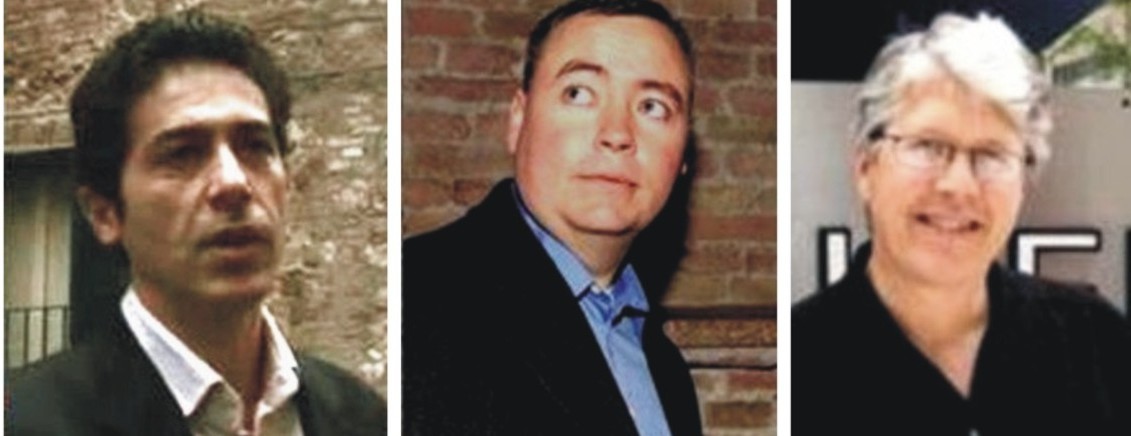
Above: Several of the myth inventors and disseminators: Sforza, Mellas, Preston
5. Knox was beaten by the police.
The witnesses who were present when Knox was questioned, including her interpreter, testified under oath at the trial in 2009 that she wasn’t hit. (Under Italian law, witnesses must testify under oath, while defendants do not, so are not required by law to be truthful on the stand.)
These are from the relevant court transcripts:
Giuliano Mignini: Do you recall, shall we say, that night between the 1st and then the spontaneous declarations and then the order for arrest, who and what was with her, other than you, whether there were other subjects that spoke with us, how they behaved? Did [she] undergo/experience violent [sic: NdT: “violente” in Italian, probably typo for “violenze” = “violence/force/assault”] by any chance?
Rita Ficarra: Absolutely not.
GM: Was she intimidated, threatened?
RF: No. I, as I said earlier, I came in that evening and there were some colleagues from the Rome SCO, I was with Inspector Fausto Passeri, then I saw come out, that is come out from the entry-door to the offices of the Flying [Squad] the Assistant Zugarini and Monica Napoleoni, who appeared for an instant just outside there, then we went back in calmly, because the discussion we had with her was quite calm.
Giuliano Mignini: ... violence, of “¦
Monica Napoleoni: But absolutely not!
Mignini: You remember it”¦ you’ve described it; however, I’ll ask it. Was she threatened? Did she suffer any beatings?
Anna Donnino: Absolutely not.
GM: She suffered maltreatments?
AD: Absolutely not.
Carlo Pacelli: In completing and consolidating in cross-examination the questions by the public prosecutor, I refer to the morning of the 6th of November, to the time when Miss Knox had made her summary information. In that circumstance, Miss Knox was struck on the head with punches and slaps?
Anna Donnino: Absolutely not.
CP: In particular, was she struck on the head by a police woman?
AD: Absolutely not!
CP: Miss Knox was, however, threatened?
AD: No, I can exclude that categorically!
CP: With thirty years of prison”¦ ?
AD: No, no, absolutely not.
CP: Was she, however, sworn at, in the sense that she was told she was a liar?
AD: I was in the room the whole night, and I saw nothing of all this.
CP: So the statements that had been made had been made spontaneously, voluntarily?
AD: Yes.
Carlo Della Valla: This”¦
Giancarlo Massei: Pardon, but let’s ask questions”¦ if you please.
CP: You were also present then during the summary informations made at 5:45?
AD: Yes.
CP: And were they done in the same way and methods as those of 1:45?
AD: I would say yes. Absolutely yes.
CP: To remove any shadow of doubt from this whole matter, as far as the summary information provided at 5:45 Miss Knox was struck on the head with punches and slaps?
AD: No.
CP: In particular, was she struck on the head by a policewoman?
AD: No.
Even Amanda Knox’s lawyer, Luciano Ghirga, distanced himself in the Italian media from these allegations and never lodged any complaint:
There were pressures from the police, but we never said she was hit.
6. Knox was refused a lawyer.
Rita Ficarra and Anna Donnino testified that Knox was several times advised to have a lawyer, but each she declined the offer:
Anna Donnino: ...she was asked if she wanted a lawyer.
Giuliano Mignini: And what was her response?
AD: She had answered no; I remember that she replied with no.
Before she insisted on drafting her 1:45 and 5:45 am accusations Knox was advised to have a lawyer advise her, but she declined and pressed on.
Dr Mignini has wondered if the Supreme Court really understood this in banning the two unprovoked accusations from Knox’s main trial.
7. Knox was tag-teamed by two police officers every hour.
According to Anna Donnino, who arrived at the police station at about 12:30am, there was a total of three people in the room with Knox:
Anna Donnino: “I had been made to enter a room where in fact there was Inspector Ficarra at a small table, another colleague from SCO (I only remember his first name; he was called Ivano), a police officer, and there was Miss Knox seated. I seated myself beside her.”
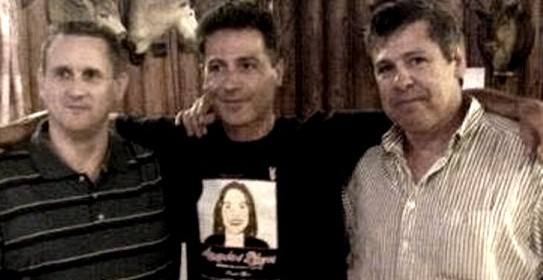
Above: Several of the main myth inventors and disseminators: Fischer, Sforza, Moore
8. Knox was asked to imagine what might have happened.
According to the corroborative testimony of the three others present, including Rita Ficarra and Anna Donnino, Amanda Knox voluntarily and spontaneously accused Patrick Lumumba of murdering Meredith.
Here is Rita Ficarra.
We found only that one [text message] sent by her. She was given the mobile into her hand, and it was said, who is this person, and did you go out later or not? She said the name of Patrick Lumumba, and gave the declaration that then ...
GM: And what behaviour did she then adopt/assume?
RF: She suddenly put her hands to her head, burst out crying and said to us “It’s him, it’s him, it was him, he killed her”. It was the only time that I saw her cry.
GM: This behaviour, did she then continue like that during the course of that morning, by now we were at what time?...
RF: No, she was as if she was giving vent in that moment, she cried, she began to say that he was crazy, he was crazy.
Here is Anna Donnino:
Judge Massei: This change, at what moment did it happen, and in what did it consist of?
Anna Donnono: The change had occurred right after this message, in the sense that the signorina said she hadn’t replied to the message from Patrick, when instead her reply message was shown to her she had a true and proper emotional shock. It’s a thing that has remained very strongly with me because the first thing that she did is that she immediately puts her hands on her ears, making this gesture rolling her head, curving in her shoulders also and saying “It’s him! It’s him! It was him! I can see/hear him or: I know it.[Lo sento]” and so on and so forth.
Carlo Pacelli: So the statements that had been made had been made spontaneously, voluntarily?
Anna Donnino: Yes.
Here is Judge Massei.
[After hearing and weighing up the testimony of these witnesses and Amanda Knox, Judge Massei stated that it couldn’t be claimed that] “Amanda Knox was persuaded by the investigators to accuse Diya Lumumba, aka Patrick, by means of various pressing requests which she could not resist.” (Massei report, page 388.)
[He noted that there had been] “no corroboration of the pressing requests which Amanda was seemingly subjected to in order to accuse Diya Lumumba of the crime committed to the detriment of Meredith.” (Massei report, page 389.)
Judge Massei concluded at trial in 2009 that Knox had freely accused Patrick Lumumba of Meredith’s murder and awarded her a prison sentence for calunnia confirmed in 2013 by the Supreme Court for which there is no further appeal.
9. Amanda Knox claimed she had had a “dream-like vision” in her witness statements.
Amanda Knox makes no mention of a dream or vision in her two witness statements. She categorically states that she met Diya Lumumba at Piazza Grimana and that they went to the cottage on Via della Pergola. In her first witness statement, she claims that Lumumba killed Meredith.
This is from the 1:45 am statement.
I responded to the message by telling him that we would see each other at once; I then left the house, telling my boyfriend that I had to go to work. In view of the fact that during the afternoon I had smoked a joint, I felt confused, since I do not frequently make use of mind-altering substances, nor of heavier substances.
I met Patrik immediately afterward, at the basketball court on Piazza Grimana, and together we went [to my] home. I do not recall whether Meredith was there or arrived afterward. I struggle to remember those moments, but Patrik had sex with Meredith, with whom he was infatuated, but I do not recall whether Meredith had been threatened beforehand. I recall confusedly that he killed her.
This is from the 5:45 am statement.
I wish to relate spontaneously what happened because these events have deeply bothered me and I am really afraid of Patrick… I met him in the evening of November 1st 2007, after sending him a reply message saying “I will see you”. We met soon after at about 21.00 at the basketball court of Piazza Grimana. We went to my apartment in Via della Pergola n. 7.
I do not clearly remember if Meredith was already at home or if she came later, what I can say is that Patrick and Meredith went into Meredith’s room, while I think I stayed in the kitchen. I cannot remember how long they stayed together in the room but I can only say that at a certain point I heard Meredith screaming and as I was scared I plugged up my ears.
10. Amanda Knox was questioned in Italian
The police provided Amanda Knox with an interpreter, Anna Donnino, so that she could be questioned in English.
11. Dr Mignini questioned Knox on 5 November 2007.
Dr Mignini did not question Amanda Knox that evening. She wanted to make further declarations, and he came to the police station on the night only because he was on duty and had to witness Knox being cautioned. After Knox was cautioned that she need not say anything without a lawyer, Knox nevertheless insisted that she draft a second statement in front of him.
Mr Mignini explained what happened in his e-mail letter to Linda Byron, a journalist for King5 in Seattle:
All I did was to apply the Italian law to the proceedings. I really cannot understand any problem.
In the usual way, Knox was first heard by the police as a witness, but when some essential elements of her involvement with the murder surfaced, the police suspended the interview, according to article 63 of the penal-proceedings code.
But Knox then decided to render spontaneous declarations that I took up without any further questioning, which is entirely lawful.
According to article 374 of the penal-proceedings code, suspects must be assisted by a lawyer only during a formal interrogation, and when being notified of alleged crimes and questioned by a prosecutor or judge, not when they intend to render unsolicited declarations.
Since I didn’t do anything other than to apply the Italian law applicable to both matters, I am unable to understand the objections and reservations which you are talking about.”
In Amanda Knox’s written witness statement, she explicitly states that she’s making a spontaneous declaration:
I wish to relate spontaneously what happened because these events have deeply bothered me and I am really afraid of Patrick, the African boy who owns the pub called Le Chic located in Via Alessi, where I work periodically.
12. Knox didn’t confess until 6am.
Amanda Knox’s first written statement was made at 1:45am. It was not a confession, it was a false accusation.
13. Knox retracted her allegation against Lumumba immediately.
Amanda Knox didn’t retract her accusation immediately. In fact, she never did formally. Knox reiterated her allegation in her handwritten note to the police late morning of 6 November 2007, which was admitted in evidence: From the Massei report:
[Amanda] herself, furthermore, in the statement of 6 November 2007 (admitted into evidence ex. articles 234 and 237 of the Criminal Procedure Code and which was mentioned above) wrote, among other things, the following:
I stand by my [accusatory] statements that I made last night about events that could have taken place in my home with Patrick”¦in these flashbacks that I’m having, I see Patrick as the murderer”¦
This statement was that specified in the notes of 6 November 2007, at 20:00, by Police Chief Inspector Rita Ficarra, and was drawn up following the notification of the detention measure, by Amanda Knox, who “requested blank papers in order to produce a written statement to hand over” to the same Ficarra. (Massei report, page 389.)
Knox did not withdraw the false accusation at her first hearing in front of a magistrate on 8 November.
The Massei court took note of the fact that Amanda Knox didn’t recant her false and malicious allegation against Diya Lumumba during the entire time, two weeks, he was kept in prison.
14. In the days following Meredith’s murder, Knox voluntarily stayed in Perugia to help the police
This claim is contradicted by Amanda Knox herself. In the e-mail she wrote to her friends in Seattle on 4 November 2007 she categorically stated she was not allowed to leave Italy:
“i then bought some underwear because as it turns out i wont be able to leave italy for a while as well as enter my house”
Knox actually knew on 2 November 2007 that she couldn’t leave Italy. Amy Frost, a friend of Meredith, reported the following conversation (Massei report, page 37):
“I remember having heard Amanda speaking on the phone. I think that she was talking to a member of her family, and I heard her say, “˜No, they won’t let me go home; I can’t catch that flight.’ “
15. All of Meredith’s friends left immediately.
The police also told Sophie Purton that they needed her to stay on in Perugia on precisely the same basis as Amanda Knox. Sophie had been counting on leaving Perugia to fly back home as soon as her parents arrived, but the police called to tell her they needed her to stay on; they would let her know when she could leave. Her father stayed on with her.
In chapter 19 of Death in Perugia John Follain states that Sophie Purton was questioned by Mignini and Napoleoni in the prosecutor’s office on 5 November 2007.
16. There were only two tiny pieces of DNA evidence that implicated her, but they were probably contaminated.
The Italian Supreme Court explained how DNA evidence should be assessed in court; i.e., contamination must be proven with certainty, not supposition. The Court stated that the theory “anything is possible” in genetic testing is not valid.
The burden of proof is on the person who asserts contamination, not the person who denies it.
In other words, if the defence lawyers claim the DNA evidence was contaminated, they must describe the specific place and time where it could have plausibly occurred. Nobody has ever proved that the bra clasp and knife evidence were contaminated. Even Conti and Vecchiotti excluded contamination in the laboratory:
“Laboratory contamination was also excluded by these experts [Conti and Vecchiotti].” (The Supreme Court report, page 92.)
(1) The bra clasp
The fact that the bra clasp was not collected immediately because defense witnesses were not available is irrelevant. The cottage was a sealed crime scene and nobody entered the room during this time:
...the flat had been sealed and nobody had had the opportunity to enter, as shown in the case file.” (The Italian Supreme Court report, page 92.)
Alberto Intini, the head of the Italian police forensic science unit, excluded environmental contamination because “DNA doesn’t fly.”
Even Conti and Vecchiotti excluded contamination in the laboratory because Dr Stefanoni last handled Sollecito’s DNA twelve days before she analysed the bra clasp.
Professor Francesca Torricelli testified that it was unlikely the clasp was contaminated because there was a significant amount of Sollecito’s DNA on it. His DNA was identified by two separate DNA tests. Of the 17 loci tested in the sample, Sollecito’s profile matched 17 out of 17.
David Balding, a Professor of Statistical Genetics at University College London, analysed the DNA evidence against Sollecito and concluded that the evidence was strong”
“...because Sollecito is fully represented in the stain at 15 loci (we still only use 10 in the UK, so 15 is a lot), the evidence against him is strong”¦”
(2) The knife
Dr Stefanoni analysed the traces on the knife six days after last handling Meredith’s DNA. This means that contamination couldn’t have occurred in the laboratory. Meredith had never been to Sollecito’s apartment, so contamination away from the laboratory was impossible.
The knife and bra clasp are not the only pieces of DNA evidence.
According to the prosecution’s experts, there were five samples of Knox’s DNA or blood mixed with Meredith’s blood in three different locations in the cottage. After the trial in 2009, The Kerchers’ lawyer, Francesco Maresca, said the mixed-blood evidence was the most damning piece of evidence against Amanda Knox.
The Scientific Police experts concluded it proves that Meredith and Knox were bleeding at the same time.
17. The knife has essentially been thrown out.
The knife hasn’t been thrown out. A further DNA sample (36-I) was extracted from the blade last year and tested by the Carabinieri RIS DNA experts Major Berti and Captain Barni. The sample was attributed to Amanda Knox, the second. Judge Nencini stated in his report that Knox stabbed Meredith with the knife.

Above: Several of the myth inventors and disseminators: Hampikian, Burleigh, Heavey
18. The knife doesn’t match any of the wounds on Meredith’s body.
The prosecution experts, multiple defence experts and Judge Massei in his report have all agreed that the double DNA knife DID match the large wound on Meredith’s neck.
“On these matters, the considerations already made must be recalled which led this Court to evaluate the outcome of the genetic investigation as reliable, and this knife as absolutely compatible with the most serious wound.” (Massei report, page 375.)
Barbie Nadeau, an American journalist based in Rome, reported directly from the courtroom in Perugia that multiple witnesses for the defence, including Dr. Carlo Torre, conceded that the double DNA knife was compatible with the deep puncture wound in Meredith’s neck.
According to multiple witnesses for the defense, the knife is compatible with at least one of the three wounds on Kercher’s neck, but it was likely too large for the other two. (Barbie Nadeau, Newsweek.)
He (Dr. Carlo Torre, defence expert) conceded that a third larger wound could have been made with the knife, but said it was more likely it was made by twisting a smaller knife. (Barbie Nadeau, The Daily Beast.)
19. The DNA on the blade could match half the population of Italy.
Vieri Fabani, a lawyer for the Kerchers, pointed out that there is the possibility of 1 in 1 billion 300 million that the DNA on the blade does not belong to Meredith.
20. Meredith’s DNA wasn’t found on the blade of the knife.
A number of independent forensic experts—Dr. Patrizia Stefanoni, Dr. Renato Biondo, Professor Giuseppe Novelli, Professor Francesca Torricelli and Luciano Garofano—have all confirmed that sample 36B was Meredith’s DNA.
Even American experts Elizabeth Johnson, Greg Hampikian and Bruce Budowle, who have been critical of the Scientific Police’s work in this case, have conceded that the DNA was consistent with Meredith’s DNA profile.
It should be noted that none of these American experts testified at the trial or played any official role in the case. They became involved in the case after being approached by supporters of Amanda Knox. They had no bearing on the legal proceedings in Florence.
Judge Nencini accepted that Judge’s Massei and the prosecution’s assertions that Meredith’s DNA was on the blade of Sollecito’s kitchen knife and that it was the murder weapon.
21. No other knives were taken from Sollecito’s apartment.
Judge Massei discusses a jack-knife that was 18cm long with an 8cm blade at some length and the results of the DNA tests that were carried out on it:
“He [Armando Finzi] recalled they found another knife whose total length was 18cm, with an 8cm blade”¦” (Massei report, page 106.)
“On the jack”‘knife, four samples were taken, with negative results where blood-derived substances had been looked for; on the fourth sample, which involved the handle, the genetic profile was found to be of Sollecito plus Knox.” ( Massei report, page 194.)
22. The knife was chosen at random.
Armando Finzi was the police officer who bagged the knife. He testified that he thought it was the murder weapon because it was compatible with the wound on Meredith’s neck. Andrea Vogt explained this in the same article:
“Armando Finzi, an assistant in the Perugia police department’s organized crimes unit, first discovered the knife in Sollecito’s kitchen drawer. He said the first thing he noticed upon entering the place was a “˜strong smell of bleach.’ He opened the drawer and saw a “˜very shiny and clean’ knife lying on top of the silverware tray.
” “˜It was the first knife I saw,’ he said. When pressed on cross-examination, he said his “˜investigative intuition’ led him to believe it was the murder weapon because it was compatible with the wound as it had been described to him. With gloved hands, he placed the knife in a new police envelope, taped it shut with Scotch tape, then placed it inside a folder, he said. There were smaller and bigger knives in the drawer, but no others were taken into evidence from the kitchen, he said.” (Andrea Vogt, The Seattle Post-Intelligencer, 28 February 2009.)
23. No control tests were done.
John Follain pointed out in Death in Perugia that the control tests had been filed with another judge:
“The tests had been filed with an earlier test, and Judge Pratillo Hellmann later admitted them as evidence.” (Death in Perugia, Kindle edition, page 409.)
The judges at the Supreme Court in Italy noted in their report that the negative controls had been carried out:
“...since all the negative controls to exclude it [contamination] had been done by Dr Stefanoni”¦” (Supreme Court report, page 93.)
The judges at the Italian Supreme Court criticised the court-appointed independent experts Conti and Vecchiotti for assuming they hadn’t been done.
24. There is no evidence of Amanda Knox at the actual crime scene.
The crime scene involves the whole cottage and isn’t limited to Meredith’s room. Knox and Sollecito were both convicted of staging the break-in in Filomena’s room. Furthermore, there is plenty of evidence placing Amanda Knox in Meredith’s room on the night of the murder.
For example, her DNA was found on the handle of the murder weapon, her bare bloody footprints were revealed by Luminol in the hallway and her own room and, according to the Scientific Police, her blood was mixed with Meredith’s blood in different parts of the cottage. Knox’s lamp was found in Meredith’s room, and a shoeprint in her size of shoe.
25. None of the Luminol* stains contained Meredith’s DNA.
Two of the traces revealed by Luminol contained Meredith’s DNA:
“Amanda (with her feet stained with Meredith’s blood for having been present in her room when she was killed) had gone into Romanelli’s room and into her [own] room, leaving traces [which were highlighted] by Luminol, some of which (one in the corridor, the L8, and one, the L2, in Romanelli’s room) were mixed, that is, constituted of a biological trace attributable to [both] Meredith and Amanda”¦” (Massei report, page 380.)
[* Luminol is a substance used in crime-scene investigations to reveal blood that has been cleaned up. It reacts with the microscopic particles of iron in the blood and turns it fluorescent.]
26. Mignini is persecuting Amanda Knox.
As shown above Dr Mignini was absent when Knox made her false accusation. Because of checks and balances, prosecutors in Italy have far less power than their American counterparts. The decision to send Knox to trial was actually made by Judge Micheli in 2008, not by Dr Mignini.
Judge Massei, Judge Cristiani and six lay judges found Knox guilty of murder in Perugia in 2009, and Judge Nencini, Judge Cicerchia and six lay judges confirmed Knox guilty of murder at the appeal in Florence in January 2014.
Dr Mignini is just one of several prosecutors who have been involved in the case. Manuela Comodi was Mignini’s co-prosecutor at the the trial in 2009. Giancarlo Costagliola was the main prosecutor in the first appeal, which was annulled by the Italian Supreme Court. He and Giovanni Galati appealed against the 2011 acquittals. Dr Mignini played no part in the new appeal in Florence. Alessandro Crini was the prosecutor.
27. Mignini claimed Meredith was killed as part of a satanic ritual.
Mignini has never claimed that Meredith was killed during a satanic or sacrificial ritual, and that’s the reason why no one has been able to provide a verbatim quote from Mignini supporting this false accusation.
Mignini specifically denied claiming that Meredith was killed in a sacrificial rite, in his letter to the Seattle reporter Linda Byron:
“On the “˜sacrificial rite’ question, I have never said that Meredith Kercher was the victim of a “˜sacrificial rite.’ “
Mignini also made it quite clear that he has never claimed that Meredith was killed as part of a satanic rite in his interview with Drew Griffin on CNN:
Drew Griffin: “You’ve never said that Meredith’s death was a satanic rite?”
Mignini: “I have never said that. I have never understood who has and continues to say that. I read, there was a reporter ““ I don’t know his name; I mention it because I noticed it ““ who continues to repeat this claim that, perhaps, knowing full well that it’s not like that.
“I have never said that there might have been a satanic rite. I’ve never said it, so I would like to know who made it up.”
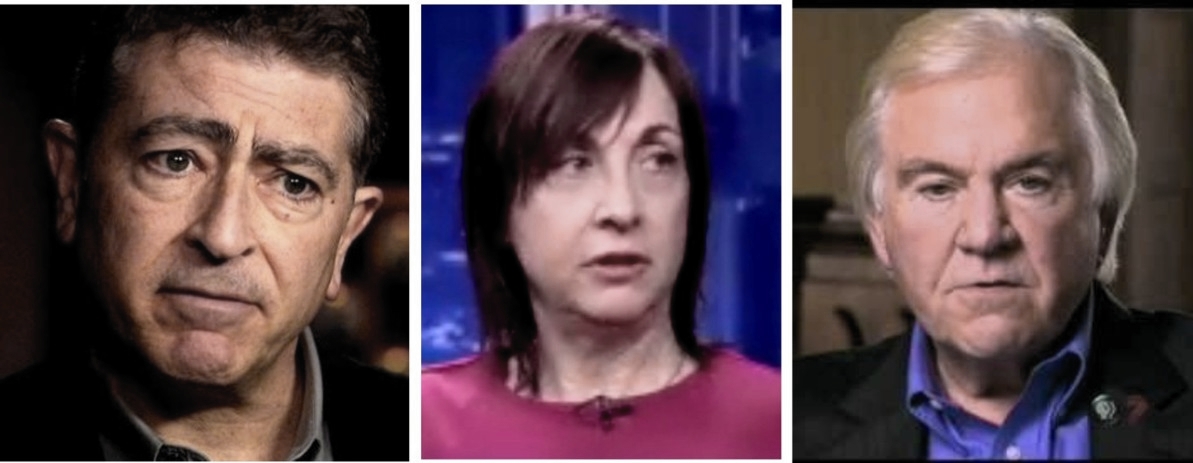
Above: Several of the myth inventors and disseminators: Kassin, Dempsey, Douglas
28. Mignini claimed Meredith was killed in a sex game that went wrong.
Mignini didn’t say anything about there being a sex game that went wrong when he presented his timeline to the court at the trial. Please be warned that there is some extremely graphic content below:
[Timeline of the attack on Meredith]
23:21: Amanda and Raffaele go into the bedroom while Rudy goes to the bathroom.
23:25: A scuffle begins between Amanda, helped by Raffaele, and Meredith. The English girl is taken by the neck, then banged against a cupboard, as shown by wounds to the skull. She resists all this. Rudy Guede enters.
23:30: Meredith falls to the floor. The three try to undress her to overcome her; they only manage to take off her trousers. The girl manages to get up, she struggles. At this point, the two knives emerge from the pockets of Amanda and Raffaele: one with a blade of four to five centimetres, the other, however, a big kitchen knife. Meredith tries to fend off the blades with her right hand. She is wounded.
23:35: The assault continues. Sollecito tries to rip off the English girl’s bra.
23:40: Meredith is on her knees, threatened by Amanda with the knife while Rudy holds her with one hand and with the other hand carries out an assault on her vagina. There is first a knife blow on her face, then straight away another. However, these blows are not effective. The three become more violent. With the smaller knife, Sollecito strikes a blow: the blade penetrates 4 centimetres into the neck.
There is a harrowing cry, which some witnesses will talk about. Amanda decides to silence her, still according to the video brought to court by the prosecutors, and strikes a blow to the throat with the kitchen knife: it will be the fatal wound. Meredith collapses on the floor.
23:45: Meredith is helped up by Rudy and is coughing up blood. The English girl, dying, is dragged along so that she can continue to be undressed.
29. Mignini called Amanda Knox a “she-devil.”
It wasn’t Mignini who called Amanda Knox a “she-devil”; it was Carlo Pacelli, the lawyer who represents Diya Lumumba, at the trial in 2009.
Carlo Pacelli’s comments were widely reported by numerous journalists who were present in the courtroom. Barbie Nadeau describes the moment he asked if Knox is a she-devil in some detail in Angel Face:
“”˜Who is the real Amanda Knox?’ he asks, pounding his fist in the table. “˜Is she the one we see before us here, all angelic? Or is she really a she-devil focused on sex, drugs, and alcohol, living life on the edge?’
“She is the luciferina—she-devil.’” (Barbie Nadeau, Angel Face, Kindle edition, page 124.)
30. Dr Mignini was convicted of a felony and faced prison.
The Florence Appeal Court and Cassation scathingly threw out a malicious prosecution for which both the prosecutor and judge suffered. Dr Mignini has never faced the slightest risk of prison. Often now seen on national TV, Dr Mignini is expected to be the next Prosecutor General of Umbria.
31. Rudy Guede was a drifter.
Rudy Guede lived in Perugia from the age of five, and he had his own apartment at the time of the murder.
32. Guede had a criminal record at the time of the murder.
Rudy Guede didn’t have any criminal convictions at the time of Meredith’s murder. He was not a drug dealer and not a police informant. As Judge Micheli scathingly noted, there is no proof that he committed any break-ins.
33. Guede left his DNA all over Meredith and all over the crime scene.
There was only one sample of Guede’s DNA on Meredith body and there were only five samples of his DNA at the cottage. His DNA was found on a vaginal swab, on the sleeve of Meredith’s tracksuit, on her bra, on the zip of her purse and on some toilet paper in the bathroom that Filomena and Laura shared.
“...also a genetic profile, from the Y haplotype on the vaginal swab, in which no traces of semen were found; DNA on the toilet paper in the bathroom near the room of Mezzetti, where unflushed faeces were found; on the bag found on the bed; on the left cuff of the blue sweatshirt (described as a “zippered shirt” in the first inspection, discovered smeared with blood near the body and partly underneath it); and on the right side of the bra found by the foot of Kercher’s body”¦” ( Judge Giordano sentencing report, page 5.)
34. Guede left his semen at the crime scene.
Guede’s DNA semen wasn’t found at the crime scene.
“...also a genetic profile, from the Y haplotype on the vaginal swab, in which no traces of semen were found”¦” (Judge Giordano sentencing report, page 5.)
“In one of these swabs was found biological material belonging to a male subject identified as Rudy Hermann Guede. This material, which turned out not to be spermatic [158], could be from saliva or from epithelial cells from exfoliation”¦” (Massei report, page 158.)
35. Guede left his DNA inside Meredith’s bag.
According to the Micheli report, which was made available to the public in January 2009, Guede’s DNA was found on the zip of Meredith’s purse, and not inside it.
“...b) traces attributable to Guede: ...on the bag found on the bed”¦” (Judge Giordano sentencing report, page 5.)
36. Guede left his bloody fingerprints all over the crime scene.
He left zero fingerprints. According to the Micheli report, the Massei report and Rudy Guede’s final sentencing report, Guede was identified by a single bloody palm print:
“...b) traces attributable to Guede: a palm print in blood found on the pillow case of a pillow lying under the victim’s body ““ attributed with absolute certainty to the defendant by its correspondence to papillary ridges as well as 16-17 characteristic points equal in shape and position”¦” (Judge Giordano sentencing report, page 5.)
It is confirmed that Guede was identified by a bloody palm print in the Micheli report (pages 10-11) and the Massei report (page 43).
37. Guede left his hair at the crime scene.
The Scientific Police didn’t find any hair that belonged to Rudy Guede at the crime scene. That’s why there’s no mention of this in any of the court documents.
38. Guede pleaded guilty or confessed.
Rudy Guede has never pleaded guilty or confessed to Meredith’s murder. He offered to testify against Knox and Sollecito at trial in 2009, but the prosecutors did not want to give him any breaks.
39. Guede’s prison sentence was reduced because he made a deal with the prosecutors.
Guede was sentenced to 30 years in prison by Judge Micheli in 2008. However, his sentence was reduced because he opted for a fast-trial, which means he automatically received a third off the sentence of Knox and Sollecito. Generic mitigating circumstances—i.e., his young age—were also taken into consideration.
40. Guede didn’t implicate Knox and Sollecito until much later.
Rudy Guede first implicated Knox and Sollecito whilst on the run in Germany on 19 November 2007 in an intercepted Skype conversation with his friend Giacomo:
Giacomo: “So they [Knox and Sollecito] killed her while she was dressed.”
Guede: “Yes, here it says that they [clothes] were washed in the washing machine, but that’s not true. She was dressed.”
41. Amanda Knox didn’t know Rudy Guede.
Amanda Knox testified in court that she had met Rudy Guede on several occasions.
Here’s the court transcript:
Carlo Pacelli (CP), Patrick Lumumba’s lawyer: In what circumstances did you meet him (Rudy)?
Amanda Knox (AK): I was in the center, near the church. It was during an evening when I met the guys that lived underneath in the apartment underneath us, and while I was mingling with them, they introduced me to Rudy.
CP: So it was on the occasion of a party at the house of the neighbors downstairs?
AK: Yes. What we did is, they introduced me to him downtown just to say “This is Rudy, this is Amanda”, and then I spent most of my time with Meredith, but we all went back to the house together.
CP: Did you also know him, or at least see him, in the pub Le Chic, Rudy?
AK: I think I saw him there once.
CP: Listen, this party at the neighbors, it took place in the second half of October? What period? End of October 2007?
AK: I think it was more in the middle of October.
42. Raffaele Sollecito had never been in trouble with the police.
Raffaele Sollecito had a previous brush with the police in 2003.
“...Antonio Galizia, Carabinieri [C.ri] station commander in Giovinazzo, who testified that in September 2003 Raffaele Sollecito was found in possession of 2.67 grams of hashish.” (Massei report, page 62.)
43. Sollecito had an impeccable track record.
Sollecito was monitored at university after being caught watching hardcore pornography featuring bestiality:
“...and educators at the boy’s ONAOSI college were shocked by a film “˜very much hard-core…where there were scenes of sex with animals with animals,’ at which next they activated a monitoring on the boy to try to understand him. (Pages 130 and 131, hearing 27.3.2009, statements by Tavernesi Francesco).” (Massei report, page 61.)
44. Sollecito couldn’t confirm Knox’s alibi because he was sleeping.
The claim that Sollecito couldn’t confirm Knox’s alibi because he was sleeping is completely contradicted by Sollecito’s witness statement:
“Amanda and I went into town at around 6pm, but I don’t remember what we did. We stayed there until around 8:30 or 9pm.
“At 9pm I went home alone and Amanda said that she was going to Le Chic because she wanted to meet some friends. We said goodbye. I went home, I rolled myself a spliff and made some dinner.” (Aislinn Simpson, The Daily Telegraph, 7 November 2007.)
Police said Raffaele Sollecito had continued to claim he was not present on the evening of the murder. He said:
“I went home, smoked a joint, and had dinner, but I don’t remember what I ate. At around eleven my father phoned me on the house phone. I remember Amanda wasn’t back yet. I surfed on the Internet for a couple of hours after my father’s phone call, and I stopped only when Amanda came back, about one in the morning, I think. (The Times, 7 November 2007.)

Above: The two provisionally convicted who originated some of the cancerous myths.
45. Amanda Knox had never been in trouble with the police.
According to Andrew Malone in an article on the Mail Online website, Amanda Knox was charged with hosting a party that got seriously out of hand, with students high on drink and drugs, and throwing rocks into the road, forcing cars to swerve. He claimed the students then threw rocks at the windows of neighbours who had called the police. Knox was fined $269 (£135) at the Municipal Court after the incident (crime No: 071830624).
Barbie Nadeau also reported that Knox had had a previous brush with the law:
...and her only brush with the law was a disturbing-the-peace arrest for a house party she threw.” (Barbie Nadeau, Angel Face, Kindle edition, page 6.)
According to the police ticket written by Seattle Police officer Jason Bender, Knox was issued with an infraction for the noise violation and warned about the rock throwing:
I issued S1/Knox this infraction for the noise violation and a warning for the rock throwing. I explained how dangerous and juvenile that action was.
46. Amanda Knox was retried for the same crimes.
All criminal cases in Italy are subject to three levels of review. No verdict is final until it has been confirmed by the Supreme Court.
Amanda Knox was not retried. She simply appealed her provisional 2009 convictions. The first appeal was held in Perugia in 2011, where she was provisionally acquitted by Judge Hellmann.
However, the Italian Supreme Court annulled the acquittals because Hellmann was found to have made a series of grave legal errors, and ordered a new appeal in Florence.
47. The Italian Supreme Court ruled that Amanda Knox’s interrogation was illegal.
The Italian Supreme Court has never stated that Amanda Knox’s recap/summary session on 5 November 2007 for the building of a list of names was illegal.
Bruce Fischer, who runs the Injustice in Perugia website and had heatedly denied this, eventually admitted this was not true on Perugia Murder File.net website:
“When it comes to the admissibility of the written statements, you are technically correct. The interrogation itself was never ruled illegal.”
Note that as stated above it was not an interrogation.
48. The Supreme Court threw out Amanda Knox’s statements.
The Supreme Court ruled that the 1:45am and 5:45am statements Knox insisted upon couldn’t be used against her in the murder trial because she wasn’t represented by a lawyer when she made them, even though she declined the presence of a lawyer.
However, both her statements were used against her at the calunnia component of the trial.
49. Dr. Stefanoni and the forensic technicians broke international protocols.
There is no internationally accepted set of standards. DNA protocols vary from country to country, and in America they vary from state to state. For example, New York state accepts LCN DNA tests in criminal trials.
Conti and Vecchiotti cited obscure American publications such as the Missouri State Highway Patrol Handbook and the Wisconsin Crime Laboratory Physical Evidence Handbook, not international protocols.
50. Amanda Knox is being railroaded or framed.
It would be immensely difficult in the Italian system for police or prosecutors to frame anyone and sustain this through two levels of appeal. With all its checks and balances and its professional career paths, it may be the system least prone to false final convictions in the world.
A number of Knox’s supporters, including Judy Bachrach, Paul Ciolino and Steve Moore, have claimed in the US media that Amanda Knox is being railroaded or framed, but they mis-state multiple facts and provide no hard proof or any reason why. The Hellmann appeal was wiped off the books, but they wrongly still draw upon that.
The collection of the DNA and forensic evidence was videotaped by the Scientific Police and, as the judges at the Supreme Court noted, defence experts were actually in the police labs to observe the DNA tests and reported nothing wrong:
“...the probative facts revealed by the technical consultant [Stefanoni] were based on investigative activities that were adequately documented: sampling activity performed under the very eyes of the consultants of the parties, who raised no objection”¦” (The Supreme Court report, page 93.)
The legal proceedings against Sollecito and Knox have been monitored throughout by US officials from the Rome embassy, and they at no time have ever expressed any concerns about the fairness or legitimacy of the judicial process.
Sources
Court documents
The Micheli report
The Massei report
Judge Giordano sentencing report
The Supreme court report
The Nencini report
Court testimony
Amanda Knox
Anna Donnino
Monica Napoleoni
Articles
The Daily Mail
The Times
The Telegraph
The Daily Beast
The Seattle Post-Intelligencer
Books
Death in Perugia, Kindle edition, John Follain
Angel Face, Kindle edition, Barbie Nadeau
Television programmes
Drew Griffins’ interview with Giuliano Mignini on CNN
Websites
The Freelance Desk: http://thefreelancedesk.com
Perugia Murder File.org: http://www.perugiamurderfile.org
Perugia Murder File.net: http://perugiamurderfile.net
CPS website: http://www.cps.gov.uk/publications/prosecution/lcn_testing.html
Seattle-Post Intelligencer: http://blog.seattlepi.com/seattle911/files/library/knoxincidentreport.pdf
Thursday, June 05, 2014
Explaining Why Smart Feminists Have Rightly Been Extremely Wary Of Amanda Knox
Posted by Hopeful
1. Late Joiner Of The Dwindling Knox Parade
A week ago in the Huffington Post Lisa Marie Basile asked why feminists are not storming the barricades for Knox.
The gullible Lisa Marie Basile had obviously swallowed whole Knox’s avid self-promotion and serial demonizing to create a muddled article at best, confused about feminism, poorly researched on the case, nasty to good Italians who are in no easy position to defend themselves, and hugely disrespectful to the real victim.
I want to explain what real feminists are seeing that the faux feminist Lisa Marie Basile has managed to miss. Above all feminism means justice to women, and the many women who post on and support sites like TJMK are upholding justice, for the only woman who counts in this case.
2. An Attack With Indisputable Sex Aspects
Remember, Meredith is the innocent woman who was slain by an undeniably jealous and unhinged fellow female who used two males as her henchmen. No Italian court disagrees with that, and Italian courts (except when hijacked as with Hellmann) are extremely careful. .
The victim was left partly nude and in a staged position on the floor to suggest to whoever found the body that it was a sexual attack. Has Ms. Basile forgotten this actually was a sex crime for which all three were charged and sentenced? This surely opened the door for examination of the sexual behavior of the former suspects.
There was no “gendered expectation” among Italians investigating this crime, only a ” truth expectation.”
Articles like “We Are All Amanda Knox” which Basile mentioned try to normalize and even exult in Amanda’s behavior as a wild woman, but she is not at all the norm there.
Raffaele had led a more restrained sexual lifestyle, actually more typical of a coy young woman than a randy man. Raffaele, in keeping perhaps with the church doctrines in which he had been reared, had not taken any sexual partners except possibly for one, other than in his extensive fantasy life.
Guede’s sex act on Meredith was never in question, as he left behind his DNA to prove he had no boundaries. His nuisance behavior hitting on girls in nightclubs in Perugia was fully discussed, and he got no breaks from anyone on any front.
Knox herself bragged about her liberation ethics and fast work with men. Nobody else turned her into a “filthy, sex-obsessed slut” but herself. The media mostly rather neutrally reported the facts, and even when her track record of casual sex became clearly documented, it was never made a focal point of the trial at all.
What was focused on was Knox’s alibi, her lies that her boss had killed her “friend” and her phone records. Knox was under the microscope for her DNA being found mixed with Meredith’s blood in five locations of the cottage.
Knox was not questioned in court about how many boyfriends she had, or her one-night stands. She was never ever questioned about her sex partners or asked to list them, simply about what males had visited the house who might have had an interest in Meredith.
Again, this after all was staged to look like a sex crime, and had signs of sexual activity on the body. The Italians were hardly rushing off on detours for false reasons of prurient interests.
3. Morphing Into A New Knox Persona
For several years starting in Seattle Knox had adopted a dangerous and very irresponsible lifestyle, which she first bragged about but has tried to back away from since she left Italy. She pretends now to have a monogamous relationship with James Terrano.
Now Amanda manages to visit the television studios in a somber manner without cartwheels or doing splits and laughing. Amazing how serious she has become about her own tragedy while telling it to microphones for the world to hear after giggling about Meredith’s death and sticking her tongue out sitting on a male lap in the police station, making fun of it all when it wasn’t her death involved.
Amanda’s “offness” as Ms. Basile refers to it raised a red flag of disrespect for the victim, which was why it was significant. Her lack of dramatic weeping outside of the cottage was never an issue.
Italians are very savvy. They are hardly the logic challenged numbskulls that Ms. Basile seems to fear they’ve been painted. Her hints that a godfearing Mignini is somehow inept shows her own bias to the godless and ruleless, the lawless and the stupid. I won’t even go into issues of spiritual faith, it is too divisive. Surely we can all agree with the mandate “Thou shalt not kill.”
4. There Was No Witch Hunt Or Inquisition
Sadly Ms. Basile has bought into Knox’s warren of lies about “forced confessions” (in actuality accusations of an innocent man!), and the cleanup that was somehow “impossible” and a “tortured five days of brutal interrogation”.
All have again and again been proven false and didnt stop her serving a three year sentence. Amanda Knox was challenged on her alibi, the presence of her blood at the scene, and her ownership of a key to the non-broken-into cottage.
She herself brought forward her alcohol and drug use, and blamed it for intoxication and lost memory for the night in question.
To rid herself of her most fundamental misconception about Amanda Knox, Lisa Marie Basile should read this series on the interrogation hoax which Knox still pushes and Basile gullibly swallowed.
5. Why Respect The Virtues Of Sexual Purity?
Modern Italian women are more fast, colorful, liberal and worldly than Americans may realize. They certainly dress a lot better. Naturally they try to live out their Catholic faith as best they can, even if we all fail to meet our highest ideals.
At the same time Italians tend to arrive at very close loving enduring families. How women prepare themselves is a very big component of this success - a success which Americans could use a lot more of.
Here are some practical reasons why Italians value sexual responsibility, which have nothing to do with faith, religion, or patriarchy, but only the safety of innocent children.
Italians as all cultures do, prefer women who are cautious and circumspect with their sexuality, as a sign of the woman’s self-discipline, a natural caution toward males as a survival instinct which she will pass on to her offspring.
A female’s self-discipline in sexual matters is a hallmark of her personal self-respect and a sign she is able to envision her larger future as the wife of a dignified man.
Most such men hope to marry a woman clean of physical disease who also carries little emotional baggage from multiple sexual affairs and heartbreaks with multiple men.
The fewer of those encounters before marriage, the better chance the children she bears him will be in no doubt of their parentage.
This is supremely important to the man, who will be working to pass on his entire life’s work and heritage to the children he feels he has truly engendered and who carry his genes and his bloodline.
The children will more likely have a safe lifestyle of similar circumspect behavior and self-discipline inculcated by their mother who will be a large influence on their morals.
The mother’s reputation can add or detract from her children’s social position and can expand their opportunities as people of trustworthy background or its opposite.
There can be a safety aspect. A woman who has had a raunchy past may have unfinished business with various men who may possibly come back into the area, begin to harass, taunt, spread rumors, or even physically threaten and cause difficulty for a new husband’s family, suspicious that perhaps one of the offspring is his own.
In this day of twitter, instagram, Facebook, email, and YouTube, sordid rumors that were once easily squelched now become known worldwide on digital media.
It is simple logic that if a woman while in the heyday of her youth and good looks in the full bloom of health and optimism, could not make attachments or command loyalty and devotion despite going all the way to sleeping with a man, that this person somehow has her radar broken or uses poor judgment.
Perhaps she simply prefers the lust for pleasure over saving herself for marriage to the man who would one day do her the most good and with whom she would develop a lifetime relationship. At any rate, she may have a sex drive that overwhelms her judgment. It may motivate her even after marriage, to break the ties of marriage.
The husband of such a woman will also inherit her personal history and may grow to resent behaviors in her past that might tarnish his future and their children’s.
This is merely a common sense outlook on why it is smart to abstain from sexual intimacies with lots of strangers who have no ongoing goodwill toward the person whose body they use, nor any commitment to the offspring of such union financially or physically.
A woman’s body at any time could conceive despite using birth control.
In each normal sex act she takes the risk of facing the horrendous consequences of pregnancy without emotional support, finances, and then she faces 15 to 20 years of her life required to raise the child while trying to introduce him to various father figures who may never feel the natural bond to the child that a married father would.
Talk to single moms anywhere, their path is no piece of cake. To choose this hard path by one’s own lack of self-discipline and lack of insight is a foolish act. Society is left buying the diapers and formula and helping the exhausted young mother survive her day job and come home to night feedings.
In other words, all the hard duties of childcare are foisted upon those who didn’t ask for them, who may be tired from raising their own legitimate offspring, a hard enough job with two parents committed and working on the children’s behalf.
Social services are stretched hard enough when emergencies, accidents, death or desertion of the male parent leave women and children stranded and abandoned in financial straits.
To jump over this cliff by choice or lack of foresight is foolish of a woman who knows a child needs two devoted parents. It’s self-absorbed, pleasure loving behavior with refusal to delay gratification.
It is selfish to the community.
Governments have to chase down these fathers for non-support of their own children.
Taxpayers and others who had no joy of the sex act or the union however brief it was, are forced for decades by welfare agencies (and basic compassion) to fork out child support dollars for strangers, rather than see the infant starve.
The child of these hasty and ill-fated unions already may face for a lifetime the hardship of feeling unwanted by his father. He or she may suffer embarrassment at his mom’s unwise youthful choices that were predicated on her lack of logic or poor self-control and willful betrayal of her children’s best future for one of difficulty and poverty.
Where is the love? It was love for self, not others.
An aside: Thank goodness God in heaven does love us all, no matter what our parents made a mess of. All can be resolved in peace and love, but the path of natural life will be much tougher and more limited when the child will not learn problem solving skills from two parents of the opposite sex nor have the benefit of the greater security. “Two are better than one, for they have more reward for their labor.”
6. Precisely WHO Are Today’s Feminists?
There are many forms of feminism. Oddly Ms. Basile is determined to argue for the imparting of partiality and favoritism to a woman who has been found to have killed another woman using two males as proxies. Ms. Basile’s biased view is based on Amanda Knox being wrongfully condemned because Basile thinks she is attractive and sexually free.
But this never happened. There was hard proof against her in DNA in three rooms and a corridor in the house and on a knife handle and upper blade..
Where are all the feminists? Those who have their facts right are allowing justice to take its course, that’s where. Justice is blind, and does not favor the pretty over the ugly or the rich over the poor. Yet all these things may be factors in the cause of any crime.
There are as many flavors of feminist as there are ideologies in the world. Consider this list.
- Liberal feminism
- Radical feminism
- Conservative feminism
- Ecofeminists
- Separatist feminism
- Materialist feminism
- Socialist feminism
- Marxist feminism
- Anarcha-feminists
- Feminist punk movement
- Feminism as a social construction
- Lipstick feminism
There are dozens and dozens. There are Christian feminists (I am one). All are equal before God, Mary is the mother of the Church, she was allowed to usher in the Savior of mankind. God uses women to restore what women through Eve lost.
Look at Meredith’s heel being exposed under the duvet. (see Genesis 3:15 prophecy from God that the seed of the woman would crush Satan’s head, but Satan would bruise his heel.)
Meredith was even worried she’d packed no socks when she first came to Perugia, and she told friends she hoped her dad would bring some, revealing concern about uncovered feet. .
There are the early feminist suffragettes who worked for women’s right to vote and birth control. The second wave campaigned for legal and social and political equality for women. Equal work for equal pay. The second wave feminists declared, “The personal is political”.
The second wave in about 30 years splintered off into various feminist camps divided on the issues of pornography *is it exploitative of women or a celebration of sexuality?, male equality versus misandry, homosexuality, the racial issues of women of color, the cultural (some Islamic, some Jewish, some WASP, etc.) women in developed countries versus poverty stricken nations.
Feminism is not a monolithic entity. Arguments abound whether we’re now living in a postfeminist society, whether gender equality has been achieved.
Then there’s third wave feminism.
7. Feminism In The Case Of Meredith’s Murder
The truth of whether a person committed a crime rises above all of these feminist ideologies. All of them. It is not a traditional role problem, it is a problem of no respect for Meredith’s particular life.
If she had been male, the bullies would not have dared.
So it was her femaleness that made her a target. Ironically her vulnerability was caused by another female’s envy and anger management issues and extremely irresponsible lifestyle.
Knox is a very misguided cause for smart feminists.
Sunday, June 01, 2014
Knox Interrogation Hoax #5: Key Witness Monica Napoleoni Confirms Knox Self-Imploded 5-6 Nov
Posted by Our Main Posters

[Above: Deputy Police Commissioner Monica Napoleoni as a witness at trial in 2009]
1. Overview of our series on the Knox interrogation hoax
This is a brief summary. Please read the full series here.
Approximately 10 posts will be devoted to the 2009 trial testimony, including Amanda Knox’s, which did her no good, and then another 10 posts to the escalating hoax propagated by Knox and the conspiracy nuts.
Here is a new example just posted by fervid new conspiracy nut Lisa Marie Basile in the Huffington Post.
We should remember that Knox was interrogated for many hours without food or water. She was slapped and screamed at in Italian—a language she barely understood at the time. When the police found her text message (which said the English equivalent of “goodnight, see you another time”) with Lumumba, they psychologically tortured her and coerced her into confessing that he was involved in the murder.
If her text message was sent to anyone else of any race, the same would have occurred. She named him because they named him. More so, false confessions aren’t rare. According to the Innocence Project, “In about 25 percent of DNA exoneration cases, innocent defendants made incriminating statements, delivered outright confessions or pled guilty.”
What total nonsense. None of Lisa Marie Basile’s “facts” here are correct. That leaves nothing of her absurd “she’s innocent but beautiful” theory still standing. This is what actually took place.
2. How Knox helped police with recap/summary 5-6 Nov
Late on 5 November 2007 Senior Inspector Rita Ficarra arrives back at the police station, to find her way blocked by a cartwheeling Knox. She mildly remonstrates. Knox testily responds that she has become sick and tired of the investigation, though she has really been little put-out.
Rita Ficarra suggests she go home and get some sleep. Knox refuses, and stays put.
After a short while Rita Ficarra suggests to Knox that if she really wants to help, she could add to the list of who Meredith knew and who might have visited the house. Knox happily agrees. So they begin on the list.
The entire official team is three often-commiserating ladies, and one man, who holds Knox’s hand. As the defenses fully acknowledged, this was merely a recap/summary, a simple checking of facts with someone who might be helpful which could have been done on a street corner. It was not a witness or suspect interrogation. Claims that it was are a key part of the great hoax.
During the session, Inspector Napoleoni and a couple of colleagues are seeking facts from Sollecito in a separate wing. Shown conflicts between what he has said and what his phone records show, Sollecito backtracks in a heartbeat and throws Knox under the bus.
Meanwhile Knox calmly produces seven names. No voices were raised until, to the considerable surprise of all others present, Knox has a yelling, head-clutching conniption (the first of three that night). This happens when they come across a text she had sent to someone though she had said she sent no texts. This text said she would see this unnamed person later, at an indefinite time.
Knox in turn throws Patrick under the bus, and later Sollecito. A torrent of accusations against Patrick explodes. The discussion is brought to a halt. Several hours later, Dr Mignini arrives at the police station, and in a second session presides over a reading of Knox’s rights.
At both sessions Knox herself insists on keeping everyone captive while she writes it all out. See the first statement here and the second statement here. Both times, she is warned she should have a lawyer by her side first. Both times she declines.
In the noon statement Knox included this without any mention of having been coerced: “The questions that need answering, at least for how I’m thinking are… 2. Why did I think of Patrik?”
Here is the relevant part of Inspector Monica Napoleoni’s testimony at the 2009 trial. It was kindly translated by ZiaK. GCM is Judge Massei, who often ensures focus and clarity.
Prosecutor Dr Giuliano Mignini
Dr Mignini [GM]: There, so 6 November, the house was therefore subjected to sequestration, so there were ...
Monica Napoleoni [MN}: Yes, the house, after it was subjected to sequestration, there was Amanda in the Questura when we got back, since the material that was sequestered/confiscated, a lot of it was hers, apart from the keys to the house of the boys on the floor below, that the boyfriend left with Meredith the keys to below, we notified the sequestration to Amanda, at any rate we sequestered the whole building.
GM: There we go; the night between 5 and 6 November. You remember, no?
MN: Certainly.
GM: There now, can you tell us what happened?
MN: We went ahead with the checks. Obviously, of all the depositions [of various witnesses], as I said. No indications of responsibility appeared against [any] others. We took photos from the Internet of the party, for example, of 31 October. We identified the people who we saw in the photos with Amanda. We had begun a series of activities also of telephone interception, obviously.
GCM: Excuse me, in photos with Amanda
MN: Pardon me, yes, with Meredith, yes. We had begun an activity of phone interceptions, in short, against numerous people, also to understand what had happened that night. We had also known, through the consultation of the phone read-outs, for example, that Amanda and Sollecito had had their cellphones inactive that evening. One from 20:35, perhaps Amanda from 20:35 and Sollecito from 20:42. And there was, shall we say, this void of telephone traffic [for] Raffaele Sollecito until 06:02 of the morning.
GM: Of the 2nd [November], therefore?
MN: Of the 2nd. And Amanda, on the contrary, until 12:03, 04 or 07 [PM], I don’t remember [exactly], at any rate when she began trying, shall we say, to catch sight of [sic] or to seek to call Meredith. I don’t know what the first call was. And that, honestly, it seemed strange to us, because Sollecito had always declared that he had woken in the morning, that he had been awoken by Amanda ...
GB: President, excuse me, we are again starting the usual”¦
GCM: Report the declarations only, where they are ...
MN: Well, how should I do, then?
GCM: ... indispensible to do them for the subsequent investigations.
MN: I wanted to say that if Raffaele had slept until ten-thirty or eleven in the morning, how on earth had his telephone been switched on at 06:02?
GCM: So you carried out these investigative activities on the telephone printouts?
MN: That’s why, in the meantime, we had ...
GCM: On the printouts, in relation to these declarations.
MN: Certainly, but on kind of a lot of people, also, obviously, with respect to these declarations, so for that reason even this fact did not add up. Obviously, during those days, we were always there, we were continuously calling witnesses. That is to say, the English girls, we called them many times. The flatmates, we called them continuously, because [for] every detail we wanted to have a crosscheck, that is, bit by bit, as we advanced with the investigations, it’s normal that we need to re-hear/re-question the witnesses and see if we can manage, in short, to understand/grasp something.
GM: The evening of the 5th [November].
MN: Ah, indeed. In fact, we had decided to call Raffaele Sollecito this time. We had telephoned a colleague from the SCO, it seems to me he called him. Raffaele said he was out to dinner with Amanda, and that he would come to the office after dinner. In fact, he arrived after 22:00 hours, I don’t recall the exact time.
Amanda also came that evening, the evening of the 5th. We said to Amanda that she could go home to rest. Since, during those days, she was always saying, always complaining that she wanted to rest, wanted to eat, we said: “Look, you’ve eaten, you can go and rest yourself. If there’s a need, we’ll call you”.
Instead, she was very nervous, and insisted on staying there, and we kept her ... well, not even in the waiting room, [but] in the entry-hall of the Flying Squad [offices], that is to say, before entering the Flying Squad [offices], outside the lifts, there are some chairs there. The girl sat herself down there.
And I began to examine Raffaele in an S.I.T. [NdT: “sommarie informazione testimone” or brief witness questioning/recap, not full interrogation], together with two colleagues from the SCO in Rome. Then, I remember for example one fact, the same that had struck me [then], that I think I went to get a little bottle of water, something, [and] while I was going out I found Amanda who was doing the splits and cartwheels, in the Questura offices. It’s obvious that all these behaviours, all the contradictions, that is to say, we re-called “¦
GCM: So she was doing”¦
GM: What time was this?
MN: Well, it would be about 11:00 [p.m.]
GM: There you go. And then?
MN: Then we ...
GM: Behaviour of Amanda and Raffaele, but especially of Amanda, the night of 5 to 6 [November] in that period?
MN: For one thing, I point out that it wasn’t me who heard her for the minutes/written record, but it was other colleagues [Rita Ficarra plus several] who heard/questioned her. However, it’s obvious that we”¦ some [of us] left, some entered, some were walking by, that is to say. This is normal. She [Amanda] always had an exaggerated manner.
GCM: In this manner, you said, she was doing the splits, cartwheels, there you go.
MN: She was doing the splits, doing cartwheels.
GCM: Others…?
MN: That is to say, she was laughing. She didn’t have the behaviour of a person ...
GCM: Please.
GM: But this behaviour, did it then change? How did it change, and when did it change?
MN: No, that, however ... Afterwards, I again say… that is to say, I saw her at intervals, however I was not there while they were taking her minutes/written record. A few times, I maybe went in to get, to bring a coffee, to bring something, however it was not me who was present there the whole time.
GM: However you saw that at a certain point she had begun to cry, you said?
MN: It was already almost at the morning.
GM: Towards what time did that happen?
MN: Well, Raffaele Sollecito’s minutes/written record, I think ““ because we also gave him quite a lot of causes [sic: should be pauses/breaks?] ““ I think we finished with him around three-thirty, three-forty. [With] Amanda, on the contrary, it finished much later. Yes, I also saw that she was crying in the anti-theft office, in effect, where they were examining/questioning her.
GM: Do you remember how she was treated by the staff, whether there were “¦?
MN: Amanda was treated very well. Amanda, she was “¦
GM: ... violence, of ...
MN: But absolutely not! Amanda was given something to drink several times. She was brought hot chamomile, she was taken to the bar of the Questura to eat. First she was given brioches from the little [vending] machine. That is all to say, Amanda was treated well.
GM: So, you, later, you continued the investigations, and never returned to Via della Pergola, no?
MN: No, I ...
Civil Party Attorney Pacelli
CP: Lumumba defence. Listen, I’m referring to the evening of 5 November, precisely, when Amanda came to the offices of the Questura. At what time did she arrive?
MN: They had been out to dinner, she and Raffaele, so for that reason they arrived around 22:15, 22:20 ““ after ten o’clock for sure.
CP: After 22:00.
MN: Yes. Certainly.
CP: She remained, therefore, the whole evening, the whole night of the 5th obviously”¦
MN: Yes, yes.
CP: Also the morning of the 6th. During that period of time, does it seem to you that Miss Amanda was beaten/struck?
MN: Absolutely not. I already explained that earlier.
CP: Yes, no, but I however am in cross-examination. I am asking detailed, precise questions, and I have very few.
MN: No, absolutely not.
CP: Was she, by any chance, therefore, manhandled/beaten up, threatened or insulted?
MN: No, she was treated well. Obviously with firmness, because it’s not as though we were at the cinema, in short, or at the circus ““ even if someone else might think that, we don’t. With firmness, but with courtesy she was “¦
CP: These methods of treatment, how did they translate into practice? With what behaviour/actions [were they carried out] in actual fact? Earlier, you recalled that they actually brought her something to eat”¦
MN: It’s true. That morning, I remember that Inspector Ficarra actually took her to the bar to eat as soon as it opened. But before [that], we have little [vending] machines on the ground floor, and she was brought water, she was brought hot drinks, she was brought a snack. But also Raffaele, he was given something to drink, it’s not as though they were kept “¦ absolutely.
CP: Yes, yes. But thus we have a firm manner, but with great regard and respect?
MN: Absolutely, yes. Because at any rate we were dealing still with young folk of twenty years of age, that is to say, we never forgot this.
CP: Thank you. Thank you, Doctor [NdT: “Doctor” refers also to graduates, and is a term of respect, not necessarily implying a medical or PhD degree]. I have no other questions, President.
Defence Attorney Bongiorno
GB: You said, precisely, that Amanda was treated very well, taken to the bar, chamomile, etc.
MN: It’s true.
GB: During these interrogations in the Questura, I wanted to know, as regards Sollecito, who had these extremely long interrogations: was Sollecito also taken to the bar? Did he eat?
MN: Sollecito was not taken to the bar, because I did not take him to the bar. However, Sollecito was given “¦ he requested water, [and] he was brought water. He was given numerous pauses/breaks.
GB: Was it said to Sollecito, at a certain point, when you challenged/impugned/questioned him… obviously the interrogation, as we know, went on an extremely long time ... that he could have recourse to a lawyer?
MN: I took him in for the recaps/summary information, and I did not suspend/interrupt the minutes/written record against him.
GB: You didn’t think that a lawyer was necessary?
MN: In that moment, no.
GB: How long did this interrogation last?
MN: We started at 10:40 until three-forty approximately.
GB: Were there objections [NdT: “contestazione” can also mean “formal notice”, e.g. of a charge] in the course of the interrogation?
MN: No, I did not make any objections/[formal notices]. We asked him simply to tell us what had happened that day.
GCM: Excuse me. When you say “10:40”, do you mean 22:40?
MN: 22:40, yes.
GB: So during the course of the interrogation, he did not ... reach/join [the status of] suspect by clues/evidence?
MN: He was not?
GB: You did not make any objections/formal notices?
MN: When we hear someone for recaps/summary information, that is to say, it is normal that we ask them questions, it’s normal, that is to say “¦
GB: Questions, yes. I was asking you if you had made any objections/formal notices.
MN: I asked why on earth he had told us up to that point things that did not correspond to the truth.
GB: And after you asked this question, did you not consider that for Raffaele it would “¦ it was necessary to call a lawyer for Raffaele?
MN: Well, Raffaele Sollecito, already from when he came to the Questura at any rate, no-one ever prevented him from telephoning or from doing what he wanted.
GB: I’m not asking you if he was prevented. You know that it is provided ...
MN: No, I no ...
GB: Excuse me. Let me finish. You know that it is provided by law that when there are objections/formal notices or [if] recaps/summary informations turn into interrogations, the minutes/written record must be halted. The subject must be given the possibility, especially if it is the middle of the night, to have the possibility [sic] to call a lawyer and to have a consultation. You are telling me that there were objections/formal notices made, but you did not consider [it necessary/expedient] to stop the minutes/written records.
MN: I am telling you that I took Raffaele Sollecito for minutes/written records [NdT: the witness often uses the term “verbale”, which is literally “minutes/written record”, in the sense of “to question/questioning”] without making any objections/formal notices to him, or asking him things, as one normally does to all the witnesses, and I closed the minutes/written record, concluding the SIT [“sommarie informazione testimoniale”]. That is to say, in that moment I did not object/make a formal notice of anything to him.
GB: However, you asked him the question that you told me earlier, if he was saying things that were not true?
MN: But one asks this of everyone. That is to say, it’s not that it was asked only of him. I don’t understand.
GB: How much later after this interrogation was Raffaele’s detention/provisional arrest made?
MN: It was made the same morning.
GB: What new elements were there with respect to those interrogations?
MN: In the meantime Amanda Knox was being examined for minutes/written records over there, and there are “¦ the contradictions between them were too [far] out.
GB: And these contradictions ... on the basis of these contradictions, you never called the lawyer, neither for the one, nor for the other? Is this correct?
MN: I was not with Amanda Knox, but I don’t believe that she was prevented from calling the lawyer. You must ask this of Inspector Ficarra, not of me, because I was not there in that moment.
GB: The objective elements, starting from the declarations, on the basis of which Raffaele Sollecito was arrested: do you recall that there was a print [footprint] amongst these elements?
MN: He was subjected to provisional arrest/detention by the Public Prosecutor, not arrested.
GB: Provisional arrest/detention by the Public Prosecutor. Do you remember the print?
MN: For me, the objective elements are all the contradictions and, shall we say, the false alibis that Raffaele, together with Amanda, gave us until they were separated.
GCM: The Attorney is asking: was there, at any rate, a print?
MN: There was a print that was held to be compatible with Raffaele Sollecito by the Laboratory of Forensic Police of Foligno.
GCM: Yes. That’s what you asked, no?
GB: Yes, and I also wanted to know: these contradictions that you’ve talked so much about, so were they contradictions that were given during these minutes/written records that we are talking about, these minutes/written records when there was no lawyer”¦
MN: Taken from the first second when we had begun to hear/question them, and going onwards from there. Because it was scarcely believable all the stories that they told us, and Raffaele knows very well that he told me things, spontaneously, without me having requested/pressed him, for that matter.
GB: On the basis of all [sic]... You are talking to me of contradictions. I am asking you: since there were these contradictions, that you actually hold to be so important that they then led to the provisional arrest/detention, because this “¦
MN: But the decree of detention/provisional arrest does not come from the Judicial Police.
GB: You are telling me of contradictions from the beginning to the end.
MN: It’s true.
GB: Since you are not talking about a contradiction at the very last hour, that is to say at five in the morning, but from the beginning to the end, I am asking myself why a lawyer was not called.
MN: I repeat that the provisional arrest/detention was from the Public Prosecutor, and not the Judicial Police.
GB: No, I’m asking you why the lawyer was not called during the minutes/written record.
MN: Because I did not consider [it necessary] to do so because I closed [the session] as recaps/summary information. The gravity of the fact emerged when Amanda Knox was also heard/questioned, who was examined up to 01:45, it seems to me, of the morning. It’s obvious that afterwards my colleagues reported to me what was happening over there.
GB: Very well. Listen, is there a report in which you speak of Amanda’s cartwheel?
MN: No, me personally, no.
GB: Did someone make a report with this cartwheel of Amanda’s?
MN: The report on the cartwheel, in short, it did not seem necessary to me to make one. However, regarding strange and suspect behaviours there is always “¦
GB: Since, in one of the preliminary hearings you reported it as one of the most significant elements.
MN: It did not seem normal to us.
GCM: Excuse me. Yes, at any rate, there was no annotation.
MN: No.
GCM: We are only doing questions and the answers. Please.
Defence Attorney Ghirga
GCM: Please Attorney.
LG: One very last question: at the same time you say that the night of the 6th, between the 5th and the 6th, “Amanda was treated well, at 4 in the morning ““ [as] this timetable shows ““ she was even, shall we say, quote-unquote refreshed, she began to cry””¦
MN: No, I didn’t indicate that at 4, at any rate.
LG: She began to cry at 4. If you want, I ...
MN: However I have never indicated a timetable.
LG: Nonetheless, when you pinpoint the time, shall we say, [of] this “¦ You report about Amanda and say that, at a certain point, I have it written, at 4 in the morning it indicates, she was calm”¦.
GCM: Yes, please, please.
LG: And that she was nonetheless treated well, when [you] place [this], and then this “treated well” emerges with a tea, it seems to me. Can you place this [event] in time?
MN: Yesterday, at the Public Prosecutor’s request, I answered this, however I also specified that Inspector Ficarra dealt with this matter. I recall exactly how Amanda was treated because we were going in and out, however I can’t give you times of [her] collapse/breakdown, of when she started to cry. I saw her cry, but I don’t recall having been able to give this timetable yesterday. At 4, I don’t remember.
LG: You said that Amanda was in an antitheft room.
MN: She was in the antitheft office.
LG: And that is on which floor? I don’t know this.
MN: Still on our floor, the Flying Squad is the only one. There is a main door, and then there are various offices.
LG: On the same floor where shortly before, shortly afterwards, we shall see, Raffaele Sollecito was also interrogated?
MN: Yes, in a different wing, in effect.
LG: It is in the antitheft room - but perhaps I’m wrong, so don’t get mad straight away ““ that you saw either the splits or the cartwheel and “¦
MN: No, it was in the entry-hall before coming into the Flying Squad [offices], at the exit from the lifts.
LG: So at the lower floor?
MN: No, on the third floor one comes out of the lift, on the left there’s the entry to the Flying Squad. Before that there’s a pre-entry, with little armchairs.
LG: So we’re at the entry-hall of the third floor, where the Flying Squad is.
MN: Yes, but not inside the Flying Squad. There’s another door.
LG: Is this the anti-theft room?
MN: No, the antitheft office is an office where the antitheft squad is, and then advancing there’s the Flying Squad on the left.
LG: But when you, I believe in order to get a bottle of water, go into a place where Amanda is, you see”¦
MN: No, I was passing to go get the water, yes…
LG: If you could clarify this for us better.
MN: I was passing to go get a little bottle of water from the little [vending] machines, by necessity I must exit from the Flying Squad, and I tell you again that she was in the entry-hall, there by the lifts.
LG: Alone?
MN: No, there were colleagues.
LG: Your colleagues?
MN: Colleagues, it seems to me, from the Rome SCO.
LG: She was with policemen, and she was doing a movement, which movements were different, a cartwheel and a split are not two things, so if you remember you were this precise.
MN: I remember.
LG: What was she doing?
MN: For sure it struck me: she did both a splits and a cartwheel.
LG: Both of them. She was doing gymnastics.
MN: Eh.
LG: Thank you.
GCM: There are no further questions.
Defence Attorney Maria del Grosso
MDG: With reference to the night of 5 November, do you remember at what time Dr Mignini arrived?
MN: No, I don’t remember.
MDG: And how long did the gathering of information from Amanda Knox by your colleagues go on? How much time?
MN: Look in the minutes, I did not do it.
MDG: And there is no minutes, there is no time of closing.
MN: So then why are you asking this of me…
GCM: If you remember.
MDG: If you remember, Doctor?
MN: No, I don’t remember.
MDG: If you remember. If you don’t remember, not ...
MN: No.
Prosecutor Dr Giuliano Mignini
GM: Listen, do you recall Amanda’s “memoriali” [NdT: written notes (plural)], do you recall the first “memorial”?
MN: I remember that Inspector Ficarra said to me, after the execution of the detention/provisional arrest, that Amanda had asked her for blank sheets [of paper] because, word for word, she wanted to give a gift, wanted to write things. And I remember too that she was given these blank sheets [of paper], she wrote for some time, so much [time] that I even requested Inspector Ficarra to go [away/home?] because we had to accompany the detainees to jail. At any rate, Amanda was made to finish writing, and she gave to the Inspector this “¦
GM: Were other “memoriali” sequestered?
MN: Yes, later in jail.
GM: At what times?
MN: It seems to me that with the report of 29 November [there were] diaries and manuscripts of Amanda’s [that were] sequestered in jail.
Thursday, May 29, 2014
Ted “There Is No Evidence” Simon’s Tired Mantra Misinforms Americans And Provokes Italian Hard Line
Posted by Our Main Posters
No-evidence claim March 2013 contradicts tough-evidence claim Dec 2008
1. Is Ted Simon already fired?
Has Ted Simon been kicked off the Knox-Mellas team?
Ted Simon gets no mention on Knox’s website among the credits to her Italian legal and Seattle PR teams. He seems to serve zero useful purpose to anyone that we can see.
One could train a parrot to repeat “there is no evidence” for a smaller fee.
Ted Simon is certainly not helping Knox to get back to Planet Earth - in January Judge Nencini awarded her another year inside, and for continuing legal incautions Knox could certainly face more time.
As he seems utterly ineffective on all fronts, maybe it was high time that Ted Simon was gone.
2. If so five good reasons why
A year ago, he seemingly allowed (1) this false felony charge to be included in Knox’s book.
That malicious claim could result in more prison time for Knox, and maybe even open Ted Simon to a malpractice suit, for zero due diligence done on Knox’s book. Since then, Amanda Knox has shot herself in the foot four more times, at least, with no obvious legal restraint.
Knox charged ahead with (2) the insulting and inaccurate email to Judge Nencini, (3) the insulting and inaccurate appeal to the European Court of Human Rights, (3) the insulting and inaccurate first response to the Nencini Report, and the insulting and inaccurate website that Knox runs.
3. Seven more good reasons why
Our interest is for justice for Meredith and her family, for Italian justice to be seen in a fair light, and for an end to this protracted PR-driven dead-end fight, in which Ted Simon has had some hand.
So let us look at some other ways in which Ted Simon’s lazy mantra, a substitute for a convincing alternative scenario of the crime, gives, or at least gave, Amanda Knox false hopes and will ultimately let her down.
1. Take a look at this absurd claim by Ted Simon which millions of Americans now, large numbers of lawyers, and many TV hosts can laugh off as simply untrue.
“There was no hair, fiber, footprint, shoe print, handprint, palm print, fingerprint, sweat, saliva, DNA of Amanda Knox in the room where Meredith Kercher was killed,” attorney Theodore Simon told TODAY’s Savannah Guthrie. “That in and of itself tells you unassailably that she is innocent.” (CNN)
What exactly does that mean? Does Ted Simon even understand the scenario of the attack? This was a KNIFE attack, which does not usually see the exchange of a lot of DNA. There was the indisputable use of two knives in the attack - and Knox’s DNA is absolutely incontrovertibly on one.
Why does Ted Simon make no mention of that?
2. Meredith’s room was not fully swabbed for DNA because fingerprint dusting was the investigators’ (right) first choice. There were no fingerprints there - but there were none in Knox’s room either. Was she never there too? Knox’s lamp was found in Meredith room, with no prints. It would not have got there without help from her. There was a Knox-size shoeprint in the room. It would not have got there without help from her.
Why does Ted Simon make no mention of that?
3. Throughout the rest of the real crime-scene, which Ted Simon would really, really like Americans to forget includes a corridor, two bedrooms, and two bathrooms as well as Meredith’s room, there is stacks of unshaken forensic evidence against Knox. Indisputably a partial cleanup occurred because some footprints in several chains had been disappeared.
Why does Ted Simon make no mention of that?
4. There is, if anything, a surfeit of possible motives (not that there is a requirement for certainty there), and certainly there is a surfeit of alibis. Knox clearly framed Patrick. She was totally unprovoked by police, and yet even after three years actually served for felony framing, she continues to perpetrate the great hoax that she was.
Why does Ted Simon make no mention of that?
5. Amanda Knox is ever more frantically claiming that Rudy Guede carried out the crime against Meredith alone, and yet there is zero question of that. Many myths spread about Guede are untrue.
Why does Ted Simon make no mention of that?
6. Raffaele Sollecito was absolutely incontrovertibly in the apartment during the attack - his own lawyers have failed to prove the print on the mat was not his. Absent Knox, it is inconceivable that Sollecito was there.
Why does Ted Simon make no mention of that?
7. Finally dozens of lawyers are saying that the extradition treaty with Italy is crystal clear. If due process to a conviction was followed - and the American Embassy in Rome monitored it and saw nothing wrong - Knox could be on a plane within weeks to pay for what was a very cruel crime.
Why does Ted Simon make no mention of that?
4. Free! New Ted Simon mantras
Due to sudden problems with Ted Simon’s gibberish machine, we are happy to step up and provide these for free.
There was no hair, fiber, footprint, shoe print, handprint, palm print, fingerprint, sweat, saliva, DNA of Rudy Guede in the bathroom where there was a bloody footprint of RS and DNA of Knox,” attorney Theodore Simon told TODAY’s Savannah Guthrie. “That in and of itself tells you unassailably that Guede did not do the crime alone.”
There was no hair, fiber, footprint, shoe print, handprint, palm print, fingerprint, sweat, saliva, DNA of Rudy Guede in Filomena’s room where the breakin was staged, though there was Knox’s DNA” attorney Theodore Simon told TODAY’s Savannah Guthrie. “That in and of itself tells you unassailably that Amanda Knox is framing him.”
There was no hair, fiber, footprint, shoe print, handprint, palm print, fingerprint, sweat, saliva, DNA of Amanda Knox in the bedroom where she slept,” attorney Theodore Simon told TODAY’s Savannah Guthrie. “That in and of itself tells you unassailably that Knox did not even live in the flat.”
Look for them soon, on your local TV.
Monday, May 26, 2014
The Nencini Email: Why This May Be The Last Time Knox Emails Such Obvious Lies To A Judge
Posted by SeekingUnderstanding
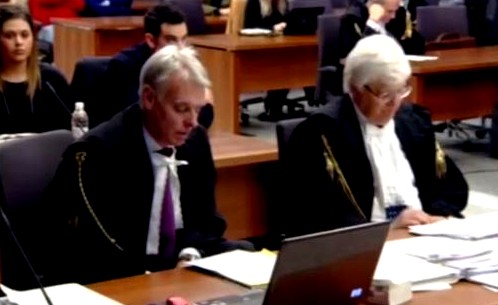
Above at the Florence appeal court is the defence table.
This was Amanda Knox’s own first appeal. It was not a prosecution appeal, or a second or third trial by “˜Italy’. This appeal only happened because Knox and Sollecito demanded it.
At maybe 99.999 percent of all appeals worldwide, the person doing the appealing would be sitting there at that table. But instead of heading-up and guiding her team and even addressing the court, as a generally very confident Sollecito did, Amanda Knox hung back, issuing insulting and misleading commentaries from Seattle.
Culminating in this email.
Pure genius. Or maybe not. Knox sent it via her hapless defense to the judge, loaded with nasty aspersions and false claims about the hard facts, on the same lines - only more-so - as her book Waiting To Be Heard of the previous April.
And guess what? Knox had her prison sentence increased by Judge Nencini. She appeals; she arrogantly taunts from afar; she ends up with more time behind bars.
Pure genius. Or maybe not. That too doesn’t happen in 99.999 percent of all appeals.
In other posts here on TJMK starting with FinnMacCool’s linked-to above, we examine the veracity of the actual content of the email. How did it match up to the hard facts already in evidence and mostly not even in dispute at this appeal?
We have already begun to show that the email sustains and substantially worsens the great Interrogation Hoax which has already cost Amanda Knox four years in prison.
Here we look at what the text would reveal to trained Italian officials (the original was in Italian) about the state of mind of the person who signed it. .
First, one cannot help but be struck by an atmosphere of fear emanating from the author. When we are consumed by our fears, and motivated by our adrenal glands, our cognitive abilities diminish, and, if we are prone to psychological projections, this is when they will burst out and frame others.
As I read this logically inconsistent and highly irregular email, it became vividly clear that this is what had probably happened here. It mirrors and portrays a fearful, unrealistic state of mind, underscored with defiant but very foolish psychological projections.
In this sense, the email has some pathos: it seems quite amazing that Amanda Knox’s lawyers, family and advisors saw fit to allow this to have been sent even though Knox might have been determined to have the last word.
It does, however, provide an opportunity to see psychological projection at work.
Because the entire writing is framed in the mode of ill-concealed psychological projections, we have a window into the constructs of projecting onto others.
Paragraphs 1 to 10
Court of Appeals of Florence section II Assise Proc. Pen, 11113
Letter sent to attorneys Carlo Dalla Vedova and Luciano Ghirga via email Seattle, 15 December 2013
Attn: Honorable Court of Appeals of Florence
I have no doubt that my lawyers have explained and demonstrated the important facts of this case that prove my innocence and discredit the unjustified…
Note “˜discredit’ and “˜unjustified’. They are inappropriate words, and highly presumptive. The whole purpose of a court of law is to carefully distinguish (according to thousands of years of learning) precisely what is just and justified and what is not.
The judiciary do not merely accept the explanations of the prosecution or defence lawyers: obviously this would render a court of law and all trials superfluous!
So, an inauspicious beginning.
Very often, an opening statement by someone - spoken or written - will be one of significance - from a psychological point of view. It would certainly be worth giving attention to, as it will frequently “˜map out’ the essential position of the author. Or, in a more usual phrase, “˜say where they are coming from’.
The position given away in Knox’s opening statement is that of a complete denial of and disdain for the purpose and function of a court of law, as well as disrespect for its need to follow due process, and for this to be complied with by all parties involved - including herself!
She is not exempt from the law, nor due process. Yet, the style of writing simultaneously illustrates a faux respect, something verging upon flattery towards Nencini. One can then observe these two distinct tones throughout the email.
accusations of the prosecution and civil parties. I seek not to supplant their work; rather, because I am not present to take part in this current phase of the judicial process, I feel compelled to share my own perspective as a six-year- long defendant and victim of injustice.
Note “˜feel compelled’, and “˜victim of injustice’: “˜feel compelled’ reveals an inner compulsion. It suggests that the email is other than a logical and rational consideration. Thus it speaks of a drive driven by fear, and adrenalin-led states. The second phrase, “˜victim of injustice’ is too assertive. It is asserted as a given truth, when in fact it is for the court to arrive at this conclusion. What is so odd, though, is that this appears not to be understood. There seems to be almost breathtaking disrespect and disregard, oddly dressed up in pseudo-respect.
The Court has access to my previous declarations
Note “˜my declarations’ - this seems to attribute to herself and her utterances a self-importance, which is out of kilter, given that her word has been proven to be founded on lies, on more than one occasion. An unrealistic self-confidence.
and I trust will review them before coming to a verdict. I must repeat: I am innocent.
Note “˜I must repeat:’ Why must she? This also appears overly-assertive, as in: “˜Methinks thou dost protest too much’.
‘I am not a murderer. I am not a rapist. I am not a thief or a plotter or an instigator.’
Note the “˜I am not… I am not… I am not’. This sentence is very indicative of the obsession with the label and the image. “˜I am…’ or “˜I am not…’ this or that PERSON.
The point in question is not Amanda’s own self-absorption with the definition of her own personality, but whether she is culpable for a specific, named event, at one moment in time, viz, on November 1st 2007.
The court is only deciding about this single date. It is beyond its jurisdiction to decide whether she is “˜a murderer’ in an indelible, permanent sense. This matter is for her and her conscience.
I did not kill Meredith or take part in her murder or have any prior or special knowledge of what occurred that night. I was not there and had nothing to do with it.
Note this “˜I did not… I was not’. This reads as if inserted on the advice of lawyers.
‘I am not present in the courtroom because I am afraid.’
Note “˜I am afraid’. This, alone of the subsequent paragraphs, is true. She is indeed afraid. But, of what? This is actually a profound question.
I am afraid that the prosecution’s vehemence will leave an impression on you, that their smoke and mirrors will blind you. I’m afraid of the universal problem of wrongful conviction. This is not for lack of faith in your powers of discernment, but because the prosecution has succeeded before in convincing a perfectly sound court of concerned and discerning adults to convict innocent people - Raffael and me.
Note this very contradictory statement. It is attempting to flatter Judge Nencini… “˜your (great) powers of discernment….perfectly sound ...concerned and discerning adults ...’ whilst simultaneously saying that he is so poor a judge that he will be “˜blinded’ and that he will hand her a “˜wrongful conviction’.
She cannot have it both ways, - which is something she has tried so often for before, (as in : “˜I vaguely remember Patrick killed her’....‘this may be true, or I may have imagined it…’ etc.
This flattery-cum-put-down is confused and confusing, as well as showing circumlocution and insincerity.
‘My life being on the line’
Note “˜MY life…’. This is a melodramatic statement, and one that is insulting to Meredith - whose life was indeed on and over the line. Amanda’s life has never been on the line. Her fears are speaking here.
and having with others “˜already suffered too much’
Note “˜suffered’. Self-centred in the extreme, given the tragic circumstances, as well as debatable. Some might say Knox appears to revel in having so much attention.
I’ve attentively followed this process and “˜gleaned the following’...
Note “˜gleaned’ - a very odd word to use. Almost suggesting, “˜these are the areas I have sifted out as being my best areas to stir up doubts’ etc. Seems to suggest a manipulative mind at work.
...facts that have emerged from the development of this case that I beg you not to dismiss when making your judgment:
No physical evidence places me in Meredith “˜s bedroom, the scene of the crime, because I was not there and didn’t take part in the crime.
Meredith’s murderer left ample evidence of his presence in the brutal scenario: handprints, footprints, shoe prints in Meredith’s blood; DNA in her purse, on her clothing, in her body.
No evidence places me in the same brutal scenario. The prosecution has failed to explain how I could have participated in the aggression and murder””to have been the one to fatally wound Meredith””without leaving any genetic trace of myself. That is because it is impossible. It is impossible to identify and destroy all genetic traces of myself in a crime scene and retain all genetic traces of another individual.
Note the “˜no physical evidence…’. This is the most sweeping scientific fallacy (which we deal with extensively elsewhere). That she has the audacity to proclaim it in these terms, towards a senior judge, does display arrogance, and, again, total disregard for due process, as if it just floats by her, not existing. After this she includes, in a surreal way, ‘Meredith’s murderer left ample evidence of (his) presence’. ‘Murderer’ is placed in the possessive, as in ‘Margaret’s gardener’, or ‘Sarah’s secretary’ - and as such denotes a personal relationship. Odd and eerie, and as all the email, consistently inconsistent.
Either I was there, or I wasn’t. The analysis of “˜the crime scene’
Note the “˜I was… or I wasnt’. Simple and blatant obfuscation. It is obvious to all but the most stupid that the crime scene is the whole house.
Therefore, since Ms. Knox is not stupid, to persist with this usage of the term is either stubbornly recalcitrant, or extremely misguided, - possibly both.
Again, her own unawareness of how others will read this insistence of hers, is very, very sad.
...answers this question: I wasn’t there.
My interrogation was illegal and produced a false “˜confession’ that demonstrated my non-knowledge of the crime- The subsequent memoriali, for which I was wrongfully found guilty of slander, did not further accuse but rather recanted that false “˜confession.’ Just as I testified to the prosecutor in prison and to my family members in prison when our conversations were being recorded without my knowledge.
Note “˜illegal interrogation’ and “˜false confession’. Our Intteroagtion Hoax series is addressing exactly this. The fact that knox can put forward a statement that is demonstrably untrue, on multiple levels, shows someone almost dangerously out of touch with reality, on an emotional level, (and equally out of touch with due process in law.)
The comment about conversations being recorded “˜without my knowledge’ shows irritation and annoyance, as if she wishes to control the investigation herself.
As if the authorities should have asked her permission first, so that she could tailor her comments to suit! “˜How dare they interfere with my manipulation of the evidence?’ Maybe this is an uncharitable inference - but one that is strongly suggested.
My behavior after the discovery of the murder indicates my innocence. I did not flee Italy when I had the chance. I stayed in Perugia and was at the police’s beck and call for over 50 hours in four days, convinced that I could help them find the murderer. I never thought or imagined that they would have used my openness and trust to fuel their suspicions.
Note “˜used my openness’. Again, demonstrably untrue. I am not able to find a single example of her “˜openness’ and trustworthiness in the days of her being a witness and the interrogations, from within the actual transcripts.
Her behaviour was however noted to have been inappropriate, unrestrained, possibly “˜spaced out’, irritated, melodramatic, angry, verbose, contradictory, and unpredictable. If she genuinely believes her state of mind at that time could be best described as “˜openness and trust’, then this suggests a worrying gulf between her own perception of herself, and how she comes across to others.
I did not hide myself or my feelings:
Note “˜I did not hide my feelings’ Indeed she didn’t. However, this is stated with the inference that this is a good thing, something she should be praised for. Some people believe in restraining the expression of their feelings - in case someone else is hurt by them. This would appear to be something she is ill acquainted with.
when I needed comfort, Rafael embraced me; when I was sad and scared, I cried; when I was angry, I swore and made insensitive remarks; when I was shocked, I paced or sat in silence; when I was trying to help, I answered questions, consoled Meredith’s friends and tried to keep a positive attitude.
Note “˜postive attitude’. Towards what? That she could positively “˜win’ in her attempt to cover up the truth? We do not know what she is being positive about. Self-absorption is again displayed. And as Judge Nencini said, “˜I do not know her. I have not met her.’ Towards what is her positivity directed?
Paragraphs 11 to 20
Upon entering the questura I had no understanding of my legal position. Twenty-years old and alone in a foreign country, I was innocent and never expected to be suspected and “˜subjugated to torture.’
Note “˜no understanding’ and “˜Subjugated to torture’. What an assertion, and more melodrama. Such a statement is foolish if she wishes to be taken seriously by a senior judge. In fact, although she appears not to know this, the statement was self-sabotage.
Also, twenty years old is adult - or should be. Any adult should know and obey the law, and co-operate automatically with law-enforcers with no back-patting.
I was interrogated as a suspect, but told I was a witness. I was questioned for a prolonged period in the middle of the night and in Italian, a language I barely knew. I was denied legal counsel- The Court of Cassation deemed the interrogation and the statements produced from it illegal. I was lied to, yelled at, threatened, slapped twice on the back of the head. I was told I had witnessed the murder and was suffering from amnesia. I was told that if I didn’t succeed in remembering what happened to Meredith that night I would never see my family again.
Note, well all of it. Complete fiction. Trial transcripts are very clear. She knew this was shot down by multiple witnesses and failed to avert a prison sentence.
Is this a (misguided) attempt to appeal to Judge Nencini’s heart strings as a father, from a baby twenty year old needing protection?
I was browbeaten into confusion and despair. When you berate, intimidate, lie to, threaten, confuse, and coerce someone in believing they are wrong, you are not going to find the truth.
Note the accusations. The last sentence could be inverted, and an inverse meaning found. What is Knox’s attitude towards the judiciary that have re-instated her guilt? Perhaps, some would say, she is attempting to “˜berate, threaten, lie to, confuse, and coerce’..the court ...into believing they are wrong (to say she is guilty.)
And no, this way, we are not going to find the truth. She is actually right there.
However, it is the duty of a court of justice not to yield to coercion, confusion, threats etc, and if there was more respect and adult understanding for the Italian judiciary, the defendants would know this, and not engage in what is clearly a waste of time.
Judge Nencini’s disdainful dismissal of the “˜highly irregular “˜ email showed he was fully aware of all implications. There are solid reasons for protocols.
The police coerced me into signing a false “˜confession’ that was without sense and should never have been considered a legitimate investigative lead. In this fragmentary and confused statement the police identified Patrick Lumumba as the murderer because we had exchanged text messages, the meaning of which the police wrongfully interpreted (”˜Civediamo piu tardi. Buona serata’). The statement lacked a clear sequence of events, corroboration with any physical evidence, and fundamental information like: how and why the murder took place, if anyone else was present or involved, what happened afterward””it supplied partial, contradictory information and as the investigators would discover a little later, when Patrick Lumumba’s defense lawyer produced proof of him incontestable alibi, it was obviously inaccurate and unreliable. I simply didn’t know what they were demanding me to know. After over 50 hours of questioning over four days, I was mentally exhausted and I was confused.
This coerced and illegitimate statement was used by the police to arrest and detain a clearly innocent man with an iron-clad alibi with whom I had a friendly professional relationship. This coerced and illegitimate statement was used to convict me of slander. The prosecution and civil parties would have you believe that this coerced and illegitimate statement is proof of my involvement in the murder. “˜They are accusing and blaming me, a result of their own overreaching.
Note “˜50 hours of questioning’ which was actually less than half a dozen. Another statement that could be usefully inverted, and betrays itself as a psychological projection.
Knox over-reached herself in inventing the Patrick scenario, which was only blown open two weeks later by a reputable businessman. What is she doing, (in this whole paragraph about “˜the coerced false confession’) other than accusing and blaming (the police) as a result of (her own) overreaching?
We can see, from this and other examples, the unpleasant process of a person projecting what they themselves are doing, onto others. A projection attempts to transfer their own responsibility - either for character or deed - onto others, who can then be blamed or framed for the projector’s own wrong-doing, or wrong-being.
This process of projection, as well as projective identification, underlie so much cruelty and injustice in life, as well as the erosion of others’ identity, and the interference and/ or destruction in others’ lives.
Projection, for the most part, diminishes. It can be mild to vicious. In its milder forms, it can sometimes be used as a source for cutting humour : in its worst forms, which become pathological, it can and does lead to demonization, aggression, and even murder.
Yet again, in her unrestrained and exaggerated verbosity, Knox has demonstrated foolishness, and also under-estimation of the knowledge and wisdom of professionals. In a more colloquial phrase, she has dug herself in deeper.
Perhaps she is indeed a victim - but only of her own nature, which appears to be a nature she cannot neither alter nor control, and also one that demonstrates frequently a lack of boundaries. There isn’t a clarity regarding what is herself and what is other people. The result is confusion and hurt.
When people are projected upon, repeatedly, they naturally feel hurt and offended. “˜That isn’t me, how dare s/he !’ is the natural reaction to a projection. If the projecting person then pulls back, there is damage limitation,...but if they don’t, and projection escalates, it is always a slippery slope to negativity.
Experience, case studies, and the law recognize that one may be coerced into giving a false’confession’ because of torture.
This is a universal problem. According to the National Registry of Exoneration, in the United States 78% of wrongful murder convictions that are eventually overturned because of exonerating forensic evidence involved false “˜confessions.’
Almost 8 in 10 wrongfully convicted persons were coerced by police into implicating themselves and others in murder. I am not alone. And exonerating forensic evidence is often as simple as no trace of the wrongfully convicted person at the scene of the crime, but rather the genetic and forensic traces of a different guilty party - just like every piece of forensic evidence identifies not me, but Rudy Guide.
Note again the false confession claim. No confession at all has been advanced in this case.
In the brief time Meredith and I were roommates and friends we never fought.
Meredith was my friend. She was kind to me, helpful, generous, fun. She never criticized me. She never gave me so much as a dirty look.
But the prosecution claims that a rift was created between Meredith and I because of cleanliness. This is a distortion of the facts. Please refer to the testimonies of my housemaster and Meredith’s British friends. None of them ever witnessed or heard about Meredith and I fighting, arguing, disliking each other. None of them ever claimed Meredith was a confrontational clean-freak, or I a confrontational slob. Laura Masotho testified that both Meredith and I only occasionally cleaned, whereas she and Filomena Romanelli were more concerned with cleanliness. Meredith’s British friends testified that Meredith had once told them that she felt a little uncomfortable about finding the right words to kindly talk to me, her new roommate, about cleanliness in the bathroom we shared. The prosecution would have you believe this is motivation for murder. But this is a “˜terrifying distortion of the facts.’
Note “˜terrifying distortion of the facts.’ It is not, of course, a distortion of the facts. I have frequently observed that Amanda says, “˜Meredith was my friend’, but I have never, curiously, heard this followed up by, “˜I was Meredith’s friend’. What act of friendship did she carry out for Meredith? On this there has been an eerie silence. (And if said now, this would be way too late in the day).
But here, what is of particular interest is the choice of the word “˜terrifying’ regarding “˜distortion of the facts’.
There has been a gross and widespread distortion of the facts of this case, encouraged by a paid PR campaign by her father. It is something that has snowballed (especially with new technology: Twitter etc), and has had an influence.
One wonders, have there been times when she wished she could “˜stop the world and get off’? Has she, in fact, found the explosion of media comment “˜terrifying’? Does she now feel to be on quicksand?
I think, at the very least, the use of this word shows that the way things have escalated - so that she does not control outcomes - is something she does not like at all.
Over and over again - through her self-exposure on TV - she has shown flashes of anger and contempt when she is displeased, and this sentiment is also perceptible as an undercurrent in this email. An innocent person might very well be angry, but they wouldn’t ever show contempt.
I did not carry around Rafael’s kitchen knife.
This claim by the prosecution, crucial to their theory, is uncorroborated by any physical evidence or witness testimony. I didn’t fear the streets of Perugia and didn’t need to carry around with me a large, cumbersome weapon which would have ripped my cloth book bag to shreds. My book bag showed no signs of having carried a bloody weapon. The claim that he would have insisted I carry a large chef’s knife is not just senseless, but a disturbing indication of “˜how willing the prosecution is to defy objectivity and reason in order to sustain a mistaken and disproven theory.
Note “˜how willing the prosecution… disproven theory’. This last part of her sentence is another example of herself describing what she is actually doing, whilst accusing someone else of it.
She is here describing herself, and what she does. The word “˜prosecution’ can be substituted. So one has : how far is “˜she’ willing to go, “˜to defy objectivity and reason in order to sustain a mistaken and disproven position’?
Sometimes, people slip into an error of making one major projection. We all are more prone to project when pressure becomes unbearable. We can all think of someone under stress who has lashed out and pinned the blame on someone else - doing this is a way of releasing a pressure valve for stress. But an emotionally balanced person is able to “˜pull themselves back’ and re-centre themselves.
It is of great concern that the very fabric of this email would seem to be so intertwined or riddled with psychological projections that it is actually woven from them - they form its substance. This strongly suggests Knox is without genuine insight into her own psyche, or processes, and also is in an very unstable state where she is far away from her own centre.
Paragraphs 21 to 30
It is yet another piece of invented “˜evidence’, another circumstance of theory fabricated to order, because having discovered nothing else, the prosecution could only invent.
Note “˜invent… invent’. This indicates another disturbing trait - a barely suppressed glee, that the prosecution “˜have discovered nothing else’. Is she proud of the lack of more evidence? Why is there not more? Who successfully concealed it, as is the case?
I had no Contact with Rudy Guide.
Like many youth in Perugia, I had once crossed paths with Rudy Guide. He played basketball with the young men who lived in the apartment below us. Meredith and I had been introduced to him together. Perhaps I had seen him amongst the swarms of students who crowded the Perugian streets and pubs in the evenings, but that was it. We didn’t have each other’s phone number, we didn’t meet in private, we weren’t acquaintances. I never bought drugs from Rudy Guide or anyone else. The phone records show no connection. There are no witnesses who place us together. The prosecution claims I convinced Rudy Guide to commit rape and murder, completely ignoring the fact that we didn’t even speak the same language. Once again, the prosecution is relying upon a disturbing and unacceptable pattern of distortion of the objective evidence.
I am not a psychopath.
Note “˜I am not a psychopath’. First of all, it needs to be said, that this is not for her to announce. It is not her province. She is not qualified to make such a statement, quite apart from the fact that it would be self-diagnosis.
It is also totally inappropriate to say so to Judge Nencini. The fact that she is unaware of this is astounding.
There is no short list to the malicious and unfounded slanders I have suffered over the course of this legal process. In trial I have been called no less than:
“˜Conniving; manipulating; man””eater; narcissist; enchantress; duplicitous; adulterer; drug addict; an explosive mix of drugs, sex, and alcohol; dirty; witch; murderer; slanderer; demon; depraved; imposter; promiscuous; succubus; evil; dead inside; pervert; dissolute; a wolf in sheep’s clothing; rapist; thief; reeking of sex; Judas; she-devil;
Note “˜in the course of this legal process’. Here she appears to be totally muddled about what has been said in the papers and social media, confusing them with serious assessments from the court. However, obviously the media reports and inventions have penetrated her mind, and blown up out of all proportion.
The fact that she (or her family) laregly brought this on herself doesn’t seem to register.
There is an answer though, or would have been : Be honest; be modest; be quiet. Let the truth speak for itself. It usually does. The media coverage is highly regrettable, but, as every celebrity finds, there is always a heavy price for “˜playing the media’.
I have never demonstrated anti-social, aggressive, violent, or behavior. I am not addicted to sex or drugs. Upon my arrest I was tested for drugs and the results were negative. I am not a split-personality
Note “˜I am not a split personality.’ Is this for her to say? Someone with a personality disorder, or indeed mental illness, would often be the last person to admit to it, or even know. Once more, there is a breathtaking dismissal of, in effect, the value of scholarship.
One does not adopt behavior spontaneously.
Note “˜adopt’. Regarding Knox’s behaviour patterns, there is much to suggest that these were neither unusual nor spontaneously adopted. They may not have been as extreme before the crime, but the indications of them are proven.
However, as an actual statement from psychology, this is untrue.
Again, AK is out of her depth, and strangely unaware of it. There are many known instances, which can be detailed, where normally uncharacteristic behaviour does in fact break out abruptly, spontaneously, and without warning. Precisely the kind of behaviour that can and does have terrible consequences. Perhaps this needs to be understood and taken on board?
This is a fantasy.
Note “˜fantasy’. Who is given to fantasy? Who wrote she “˜had a vision’ of what had happened?
This is uncorroborated by any objective evidence or testimony. The prosecution and civil parties created and pursued this character assassination because they have nothing else to show you. They have neither proof, nor logic, nor the facts on their side.
Note “˜character assassination’ Who doesn’t have logic nor facts, or indeed proof of her alibi, on her side?
They only have their slanders against me, their personal opinions about me.
Note “˜slanders’. Who has slandered? Who has aired personal opinions and false claims, for instance about a senior prosecutor?
They want you to think I’m a monster because it is easy to condemn a monster. It is easy to dismiss a monster’s defense as deception. But the prosecution and civil parties are both severely mistaken and wrong. They have condemned me without proof of guilt, and they seek to convince you to condemn me without proof of guilt.
If the prosecution truly had a case against me, there would be no need for these theatrics.
Note “˜theatrics’. There were none from the prosecution. So whose theatrics?
“˜Monster’ is Amanda’s own word - it hasn’t come from anyone else. It must be her nemesis - the word which she dreads to hear in her conscious mind, yet can’t escape from.
There would be no need for smoke and mirrors to distract you from the lack of physical evidence against me.
Note “˜smoke and mirrors’. Whose smoke and mirrors? Again, we have a description of her own behaviour, which is being projected outwards.
quote - ‘But because no evidence exists that proves my guilt, the prosecution would seek to deceive you with these impassioned, but completely inaccurate and unjustified pronouncements.’
Note “˜the prosecution would seek to deceive you’. Who really has sought to deceive? Who has demonstrated passion in her pronouncements?
Because I am not a murderer, they would seek to mislead you into convicting me by charging your emotions, by painting me not as an innocent until proven guilty, but as a monster.
Note “˜mislead you’. Yet again, the image of her person as “˜a murderer’ and “˜a monster’ are shown to be her preoccupation. The court has not tried to define her as such. They have tried her for a crime, for what she did on one day.
She is the one who gives permanent labels to herself. They are labels she cannot bear, and cannot accept. But she needs to understand that it is not the judiciary, nor many others seeking justice, who are labelling her person or personality.
The prosecution and civil parties are committing injustices against me because they cannot bring themselves to admit, even to themselves, that they’ve made a terrible mistake.
Note “˜they cannot’. Amongst a statement peppered with almost pitiful projections, this seems to be the most direct projection of them all. Substitute “˜they’ for “˜I’ and we get this:
“˜I cannot bring myself to admit, even to myself, that I’ve made a terrible mistake…’
Paragraphs 31 to 34
The Court has seen that the prosecution and civil parties will not hear criticism of their mistakes.
Note “˜will not hear’. Who will not hear criticism of their mistakes?
Not by the experts of the defense, nor by the experts of the Court.
The Court has seen that the prosecution jumped to conclusions at the very start of their investigation: they interrogated and arrested innocent people and claimed “˜Case Closed’before any evidence could be analyzed, before bothering to check alibis.
Note “˜jumped to conclusions’ and “˜before bothering’. Why is she saying any of this to Judge Nencini and the other judges? It is insulting to their intelligence. Can she be unaware of this?
The prosecutor and investigators were under tremendous pressure to solve the mystery of what happened to Meredith as soon as possible. The local and International media was breathing down the necks of these detectives. Their reputations and careers were to be made or broken. In their haste, they made mistakes. Under pressure, they admitted to as few mistakes as possible and committed themselves to a theory founded upon mistakes.
Note “˜founded upon mistakes’. Here there was a young woman who herself “˜under pressure, admitted to as few mistakes as possible , and committed themselves to a theory founded upon mistakes’ (the mistake of admitting to being at the scene of the crime, hearing a scream etc., and then found herself committed to continue to incriminate Patrick, and all the stories consequent to this move.)
One is reminded of a game of chess, where early moves commit one to the rest of the play and end game.
Had they not jumped to conclusions based on nothing but their personal and highly subjective feeling, they would have discovered definitive and undeniable evidence of not Patrick Lumumba, not Rafael Sollecito, not Amanda Knox, but of Rudy Guide. We would not be here over six years later debating inconclusive and unreliable “˜clues.’ We would have been spared the cost, anguish and suffering, not only of Raffaele’s and my family, but especially of Meredith’s family as well.
Note “˜Meredith’s family’. A belated attempt to remember the true victim, but in a way that couldn’t be more hurtful. What would really have spared Meredith’s family anguish and suffering?
It is highly objectionable that the stress and pressure Knox and Sollecito have been under should in any way at all be conflated with the deep suffering and tragic position of the Kercher family. Knox indicates that she is unable to know when she is hurting someone.
The prosecution’s accusations are unworthy of judicial or public confidence.
Note “˜unworthy of public confidence’. Then, if so, as Judge Nencini said, the person who brought the appeal should attend her own appeal, and seek to prove or disprove the worthiness of her case in the court. A basic premise the defendant showed she was oblivious to, when she resorted to the email.
In over six years they have failed to provide a consistent, evidence-driven, corroborated theory of the crime,
Note “˜failed to provide’. The prosecution in fact have patiently, thoroughly, albeit slowly, worked their way towards the most probable truth of that fated night.
They have been grossly and deliberately impeded in their task by the defendant, who moreover has shown no contriteness, no remorse whatsoever for her lack of co-operation or worse.
And, of course, “˜in over six years,’ the defendants “˜have failed to provide a consistent, evidence-driven, corroborated explanation of the crime’ they have been proven to have been involved with. Once more, a statement can be seen to apply more to the speaker herself than to those she is accusing.
but would nevertheless argue that you should take my life away.
Note “˜take my life away’. More unfeeling melodrama.
I beg you to see the facts and reason of what I say. I am innocent. Rafael is innocent.
Meredith and her family deserve the truth. Please put an end to this great and prolonged injustice.
Note “˜deserve the truth’. These last two sentences are true. However, the very last sentence seems to have two missing words from the end, viz, “˜for them’, or “˜for the Kerchers’.
With a correction it reads: “˜Please put an end to this great and prolonged injustice for the Kerchers’ - which with no help from Knox does nevertheless seem to be happening.
The wheels of justice turn, and stories, versions, delusions, projections, deceptions, - even manipulations, will eventually fade away.
[It looked like Knox lawyer Ghirga could not drop this turd in the judge’s lap quickly enough]
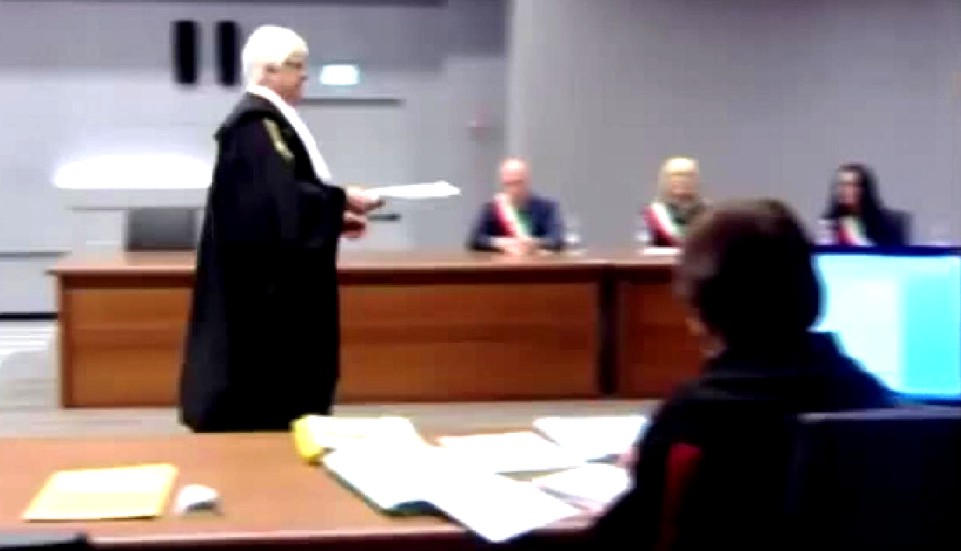
Thursday, May 22, 2014
The Cuomo Interview: Why This May Be The Last Time Knox Tries To Argue Innocence On TV
Posted by Vivianna
Concepts of innocence
I want to make the distinction here, as in some of my previous posts, between factual and legal innocence to show how on factual evidence Knox is giving up.
- Factual innocence is what we may consider “true” innocence, i.e. the complete lack of involvement in a crime.
- Legal innocence, on the other hand, is innocence established in a court of law on the basis of a reconstruction of events.
Ideally, the two coincide. But there are certainly cases in which someone who is factually guilty of a crime may be found innocent in a legal sense due to a lack of evidence.
This distinction is important here since the type of innocence Knox appears to want to establish throughout her most recent interview is, surprisingly, legal innocence ““ not factual innocence.
There are signs that Knox knows she’s failed to sell factual innocence, and is losing traction with all crime professionals everywhere - the psychologists are already long gone.
And signs that American big-media fascination has run its course. A few days after the release of the Nencini motivation report, Knox was interviewed by Chris Cuomo on CNN. This was the one big Knox-camp response to the report - and the main airing of the interview was just after 6:00 am. A video of some highlights can be viewed on the CNN website after the brief ad.
I would like to refer you at the start to this excellent post by Eyes for Lies, who has been praised on TJMK before. The transcribed quotes below are taken from the Eyes for Lies blog and they are accurate; their accuracy can be confirmed by listening to the interview linked above.
“This judge’s motivations…”
The first thing you may notice when you watch the interview is Knox’s difficulty to form articulate sentences. This is not a comment on her intelligence or her ability to speak in public, but it appears odd considering her coaching and the number of interviews she has given before.
She pauses often and constantly reforms her sentences, perhaps realizing that what she wants to say may not play out in her favor. As a result, she uses vague and sometimes unusual language, and her sentence fragments reveal aspects which she is otherwise attempting to conceal.
This inability to effortlessly stick to her script in a somewhat tense scenario betrays the fact that there is a discrepancy between her beliefs and her public statements. It also begs the question of why someone who is supposedly telling the truth needs to construct her answers so carefully if she has nothing to hide.
Cuomo begins the interview by asking Knox why she thought that this judge [Nencini] went further than any other. Here is Knox’ answer, preceded by a rather odd smile:
I”¦believe”¦I mean, I can’t speculate what this judge’s motivations”¦personal motivations or otherwise”¦What I can say is that”¦as”¦this”¦case”¦has progressed”¦”¦.the evidence”¦that the prosecution has claimed exist against me”¦.has been”¦has been proven less and less and less.
The quote of Knox above is a good example from the legal v factual innocence point of view. First, let’s look at the opening few words.
She begins by saying “I believe”¦” and then stops. Evidently, only Knox knows what exactly she intended to say, but it’s rather obvious from her next sentence that what she wanted to say about the judge was not particularly flattering or diplomatic. Given her current situation and the pending defamation suits, she probably thought it was not a good idea to be direct.
Hence, she rephrases on the fly and goes on say that she couldn’t comment on his motivations, while doing this nevertheless towards the end of her sentence. This is known as “paralipsis” which is stating something (which sometimes may be considered an ad hominen) while pretending not to do so.
The fact that she mentions Judge Nencini’s “personal motivations or otherwise” implies that his decision may have not been objective, but based on a personal bias against the defendants (an idea that Ms. Bongiorno has been unsuccessfully trying to flog after the verdict).
“Diminishing evidence…”
Moving on, she makes the first appeal to the legal innocence I mentioned above. Instead of clearly stating that she was innocent or that she did not kill Meredith, Knox prefers to focus on the fact that the evidence against her has been allegedly diminishing.
For one, this is false, as no piece of evidence at all has been dismissed; on the contrary, the new DNA test results from the Carabinieri lab could be considered as additional evidence. So Knox is blatantly lying about something which can be factually disproved, which immediately raises the question of what else she could be lying about.
Secondly, what makes this statement odd is the fact that she does not assert her factual innocence. As someone who was supposedly wrongly accused and against whom there is evidence, whether or not she chooses to acknowledge it, the one thing she has control over is the inner knowledge of her own factual innocence.
That kind of knowledge, in someone who was not subjected to torture or brainwashing, should be untouchable ““ absolute. No matter what anyone said she did, if she knew for a fact that she hadn’t done it, she would be stating it at every opportunity.
The fact that she chooses not to do this indicates that Knox herself may have trouble keeping up this pretense of innocence, especially if she is privately plagued by fear and perhaps guilt or remorse (although she hasn’t shown any signs of the latter). It has been suggested that she may be at a point where she has convinced herself of an alternate truth, but based on what she says, I am uncertain that she genuinely believes what she says.
“I did not kill…”
Only in her next sentence does she finally offer a denial ““ unfortunately couched in vague language which undermines her point.
I did not kill my friend. I did not wield a knife. I had no reason to.
Simple, straight sentences like these are the kind we would expect from an innocent person. The problem lies in the fact that, throughout this interview, Knox never clearly states, “I did not kill Meredith.” I don’t think Knox is lying when she says “I did not kill my friend,” since, strictly speaking, she did not kill any of her friends.
The problem is that Meredith was not her friend, even if both she and Meredith may have acted friendly towards each other at the beginning. Based on statements given by Meredith’s English friends and by her family, Meredith was irritated by Amanda’s behavior and frequently complained about the latter’s habits (untidiness, dirtiness, attention-seeking, bringing strange men to the apartment, etc).
Meredith probably maintained a civil front in order to avoid tension, but she had already started to distance herself. The fact that she did not return Amanda’s texts on Halloween demonstrates that she wanted to spend time with her actual friends, rather than have to deal with Knox’ histrionic episodes. Given the social nature of Halloween in a college town, this situation would not have occurred if the two had really been close prior to the murder.
“I did not wield a knife” is a blatant lie, since Knox’ DNA was found on both the handle and blade of the kitchen knife. Eyes for Lies found it strange that Knox even mentioned the knife in light of her innocence claim, but I think it makes sense because the knife figured prominently in the appeal proceedings.
Or rather, it makes sense for someone who is focused on the legal innocence aspect mentioned above. Knox equates being found innocent with being innocent, as we’ll see below, so it’s important for her to address the evidence (without realizing that, by doing so, she is acting in ways which are not consistent with factual innocence).
“My friend…”
Returning to “my friend,” we see the beginning of a trend which continues throughout the interview. Knox has a tendency to refer to Meredith obliquely ““ rarely by name.
This manifests itself in several ways: by exerting ownership (“MY friend”) or by referring to her as an inanimate object (which we’ll see happening in the following paragraphs). Considering that murder is a total, irreversible way of taking away someone’s personhood, this constant appropriation and objectification are disturbing and belie Knox’s supposed fondness for Meredith.
Next, Knox says, “I”¦.I was”¦in the month we were living together, we were becoming friends.”
Here I agree with Eyes for Lies’ argument that perhaps what Knox started saying was “I was trying to be friends with her.” Note that she says “we were becoming friends,” not “we were friends.” This calls into question her truthfulness when she calls Meredith “my friend.”
By Knox’ own admission, they were not quite friends yet at that point - or rather, not anymore, since the disagreements had already started; once again, Knox distorts the truth by making it seem that they were getting closer rather than as in reality growing apart.
A week before the murder occurred, we went out to a classical music concert together. Like”¦we had never fought. There is no trace of us.
The part about the concert is true (this is where Knox met Sollecito). We don’t know why Meredith left before the concert ended: perhaps she was tired, she had to study, or didn’t particularly enjoy the music; it’s also possible that she may have felt irritated with whatever Knox was doing to attract Sollecito’s attention.
Given his inexperience and lack of confidence at the time, Sollecito would have most likely not approached Knox without an invitation, but that’s a matter for another post.
“Like “¦ we had never fought” can be interpreted in two ways. One: we can read it as “we went out [”¦] together like we had never fought”; this implies that they did fight, which would be true, but that they were working on settling their differences. Two: “like” could be a simple filler word, and we should read it as “we had never fought,” which would be false. I’m not sure which way she meant it, so I’ll leave it at that.
“There is no trace…”
It seems like Knox jumps to saying “there is no trace of us,” but the video posted online was edited, and not very smoothly. You can see the transition, so she must have said this after additional remarks or in response to a different question. Hence, the fact that it seems random isn’t probably her fault.
It’s interesting in itself though because it’s another instance of her lying about verifiable facts (see judges’ reports and the numerous posts regarding forensic evidence). Also, it’s an important statement in conjunction with the infamous quote about Meredith’s “broken body” because it once again equates lack of evidence with innocence, rather than directly stating innocence.
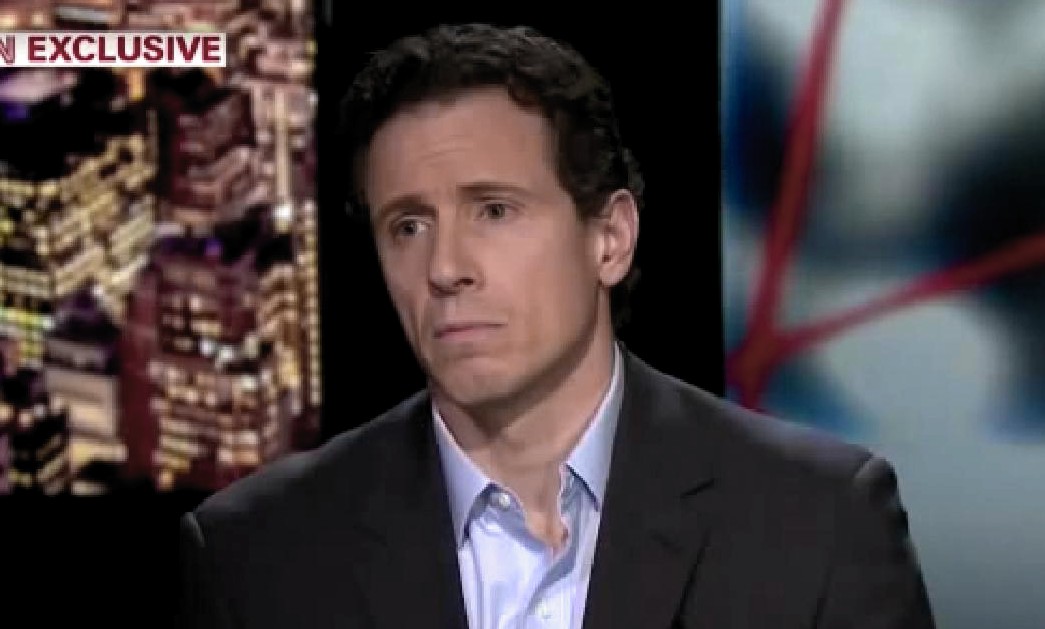
“If Guede committed…”
This is perhaps the most controversial part of the interview and also the part which ties things together (the idea of legal innocence and the objectification of Meredith).
If Rudy Guede”¦committed this crime”¦which he did”¦we know that because his DNA is there”¦on the”¦on Meredith’s body, around Meredith’s body. His hand prints and foot prints in her blood. None of that exists for me and if I were there, I would have had traces of”¦Meredith’s broken body on me”¦and I would have left traces of myself”¦.around”¦around Meredith’s corpse”¦.and I”¦I am not there”¦and that proves my innocence.
She starts her response with something which is both incredibly revealing and absolutely shocking for someone who claims innocence - “If Rudy Guede committed this crime.”
I don’t think anyone has questioned Guede’s involvement in this murder, even if the precise extent of it remains unclear, and the two have partially built their defense around the lone wolf scenario. Also, since Guede’s verdict was issued and confirmed years ago, Knox does not need to pussyfoot around his status for fear of slander charges.
Knox is not talking about Guede’s involvement in general terms, however. She’s explicitly referring to him actually committing the crime (i.e. inflicting the lethal wounds). Her hesitation betrays the fact that she doesn’t believe he did.
Of course, she catches herself: “which he did “¦ we know that because his DNA is there.” It’s interesting she has to point out how she knows this ““ from reading the evidence, certainly, not from being there and therefore knowing for a fact that he participated in the assault, but not in the actual murder.
“On the… Meredith’s body”
Next, we have another instance of objectification: “”¦on the”¦on Meredith’s body, around Meredith’s body.” Perhaps she wanted to say “on the corpse” and thought it might be a bit inconsiderate, so she switches to the more neutral “body,” only to use the implied word a few sentences later. However, what’s striking about it is that she thinks of Meredith as a body, not as a person.
I want you to think about the time you lost a friend or a family member, regardless of circumstances. Did you ever think of them as a body, or did you continue to think of them as they were in life, even if you had to identify them or take care of funeral arrangements? I’m not asking this rhetorically, by the way.
When my father died (rather suddenly, but due to illness), it never ever crossed my mind to think of him as a body, but perhaps circumstances alter perceptions. I’ve also read numerous things written by Meredith’s friends and family, and they always refer to her as “Meredith” or “Mez.” To them, she never stopped being a person because they loved her, and diminishing her would have been inconceivable.
I think it’s far more likely that the word “body” will appear in a military, medical, or anthropological context, in which there is no personal connection between the observer and the dead. We may use this word ourselves when talking about the crime scene, but it’s rather telling that we use her name far more often than someone who actually knew her in life.
I can’t know what Knox felt about Meredith, but there is no indication it was positive. The clinical and graphic manner in which she refers to “Meredith’s body,” “broken body,” and “corpse” betrays an obstinate refusal to acknowledge her as a person. Why, if Meredith was indeed her friend as she insists?
For one, it suggests that Knox actually saw Meredith being transformed into a “body” and that this image stuck with her. Let’s not forget that Knox never saw Meredith after the latter was discovered; based on the statements of the other people present in the cottage, she was not near the door when it was broken open, and she was also not asked to identify Meredith.
The only way an innocent Knox could have seen Meredith after her death would have been in photographs presented in court. There is no doubt that such photographs can be disturbing and upsetting, but I don’t think they can supplant memories of actual experiences.
Secondly, it’s a form of denying someone’s personhood and of expressing power and domination. A murderer can literally deprive someone of personhood ““ an act which they may feel triumphant about, especially if the person was a source of distress in life. I can’t help feeling that Knox is gloating when she mentions Meredith’s body.
Thirdly, refusing to name the victim and to refer to her as a person is a way of preventing her from taking center stage. While Knox has repeatedly complained about the media attention she has received, both she and her campaign have fought really hard to marginalize and displace Meredith in an attempt to replace the tragedy of the latter’s death with the supposed tragedy of Knox’ unwarranted imprisonment.
It must be disappointing when someone you’ve risked everything to eliminate continues stealing your thunder, so Knox isn’t letting us forget the actual state of things: she is there, in a TV studio, enjoying the luxury of being an “I,” while Meredith has been reduced to an “it” ““ a broken body.
The words she uses to refer to Meredith, whether graphic or macabre, suggest disgust with the physicality of death. Perhaps Knox just wanted Meredith to go away forever and found it difficult to deal with the aftermath of a violent murder.
“None of that exists…”
Returning to the issue of legal innocence, Knox claims that Guede’s hand and foot prints were identified, while “none of that exists for me”; also, “I would have left traces of myself”¦.around”¦around Meredith’s corpse.”
These are further lies, since a size 36-38 foot print was identified, and Knox was the only one it could have belonged to. There were also five mixed DNA spots (comingled blood from both women), which, just because they were not right next to Meredith’s body, cannot be dismissed.
The crime scene covers the entire house as far as the police and the court are concerned. How anyone else defines the crime scene is of no consequence at all.
“[”¦] if I were there, I would have had traces of”¦Meredith’s broken body on me,” she says next. This is, of course, an impossible scenario since Meredith was discovered long hours after her death and it was days before police looked at her.
In the meantime, a clean up had unquestionably taken place, and Knox herself admits to having showered (perhaps not in the morning as she wrote in her email, but earlier that night). Also, Knox was initially considered a witness, not a suspect, and her person and clothes were not immediately swabbed by the scientific police.
She’s trying to make it sound like no traces were discovered on her, but in fact no one tested for this and no one can prove it either way.
“I am not there…”
She continues: “I”¦I am not there”¦and that proves my innocence.” By “I am not there,” she means that incriminating traces were not found at the scene, not that she wasn’t there on that night. Note the difference between “I am innocent,” which she does not say, and “[the lack of evidence] proves my innocence.”
In other words, she’s insisting on legal innocence, but doesn’t actually confirm her factual innocence. The problem with that is since she’s lying about the factual evidence, it’s difficult to take her legal innocence claim seriously.
“Possible to win…”
At the end of the interview, she says, “I truly believe it is possible to win this and to bring”¦to bring an end to all of the speculation and the nonsensical theories and really bring peace to everyone who has suffered from this experience.”
The use of the word “win” here is peculiar, to say the least. It’s consistent with her competitive attitude towards Meredith, for one ““ killing her and getting away with it, regardless of the sacrifices made on the way, would constitute a sort of victory, I suppose.
It also has the implication of “winning the case,” which we may expect from a lawyer or someone for whom this is a professional, rather than personal undertaking. A wrongfully accused and imprisoned person has nothing to win in the end, considering the traumas they suffered; the most they can hope for is recognition and vindication.
She is correct, however, that it’s possible to end the speculation and theories. However, that would require her, Sollecito, or Guede to tell the truth about what happened on that night. In this, she has full agency ““ this is not something that can be done for her, but something which she needs to do herself.
Other than that, the “speculation and nonsensical theories” refers to the judges’ reports, in addition to lay commentary; her problem is that saying something is “nonsensical” doesn’t automatically render it so in the absence of arguments and proof (none of which she or her defense have been able to provide).
“Peace to everyone…”
“[”¦] really bring peace to everyone who has suffered from this experience” ““ this has to be one of the blindest and most self-centered things Knox has ever said about the case.
For one, it’s doubtful that a favorable verdict would even bring peace to her and Sollecito, since they will always know what they’ve done, even if they don’t have to fear imprisonment anymore. It might or might not bring peace to their families, who have already spent a fortune on their defense and whose trust has probably been shattered forever.
However, to imply that it would bring peace to Meredith’s family and friends is both presumptuous and contemptible.
Knox and her arrogant followers have, on numerous occasions, taken it upon themselves to speak for the Kerchers ““ how they should feel, what they should accept, etc. First pioneered by the contemptible Candace Dempsey, it is incredibly disrespectful to people who have suffered a great, irreplaceable, undeserved loss and who have done nothing wrong by pursuing justice for their loved one.
The fact that Knox and Sollecito have refused to confess for the past seven years has done nothing but prolong the suffering of Meredith’s family by denying them closure and the necessary space to mourn and heal.
Conclusions
what we have here is a number of outright lies, some distortions, and some false starts which help pinpoint what Knox believes, rather than what she says. What we don’t have is a plea for factual innocence, but an attempt to prove legal innocence by glossing over the evidence or dismissing it altogether, and by calling into question the judges’ professionalism. We also see no evidence of respect or compassion for Meredith, but rather an attempt to objectify and incorporate her in Knox’ own story.
My impression is that Knox does not believe the things she says herself and is struggling to maintain a front; that despite her coaching and experience with interviews, she is getting ahead of herself instead of simply reciting her lines, which denotes anxiety and conflict. I don’t believe she’s at peace with the murder at least, which hopefully means that at some point she might be inclined to confess.
Sunday, May 18, 2014
Knox Interrogation Hoax #4: More Hard Realities From Rita Ficcara, Nervousness From Defense
Posted by Our Main Posters
1. Overview of this hoax series
Knox turned up at the central police station unwanted late on 5-6 Nov 2007 and briefly helped police with a list of seven names. Her version of this has morphed into a gigantic hoax.
One highly consistent version of the brief chat was testified to by all those officials present, and accepted by all courts including the Italian Supreme Court. Knox has served three years in prison for it and the US Embassy saw nothing done wrong.
And then there is Knox’s endlessly shifting version, inflated opportunistically and erratically by herself and wannabee experts over nearly seven years now. Knox has done so in numerous interviews, in her 2013 book, on her website, in her email to Judge Nencini, and in her “appeal” to the European Court of Human Rights. And the PR shills have done so on websites, on TV, in books, and in attempts to lobby the US federal government.
This version was repudiated several times by her smart Italian lawyers (though not by her foolish American lawyers) and they did next to nothing to try to verify it when questioning those officials at trial.
See a longer summary in Post #1 here.
2. Continuing the cross-examination of Rita Ficarra
Below is the examination of Inspector Rita Ficarra by Carlo Pacelli, Patrick Lumumba’s lawyer. Very tough stuff. Chronologically, this preceded the defense cross-examinations in posts #2 and #3 and may well have dampened them.
Here “GCM” is Judge Massei. As the defenses fully acknowledged, this was merely a recap/summary, a simple checking of facts with someone who might be helpful which could have been done on a street corner. It was not a witness or suspect interrogation. Claims that it was are a key part of the great hoax.
This English translation of the relevant part of Rita Ficarra’s testimony on 28 February 2009 was by main poster and professional translator ZiaK. Her full translation will appear soon on the Meredith Case Wiki.
Please click here for more
Thursday, May 15, 2014
Knox Interrogation Hoax #3: Timid Defense Pussyfooting Toward Rita Ficcara, Key Witness
Posted by Our Main Posters
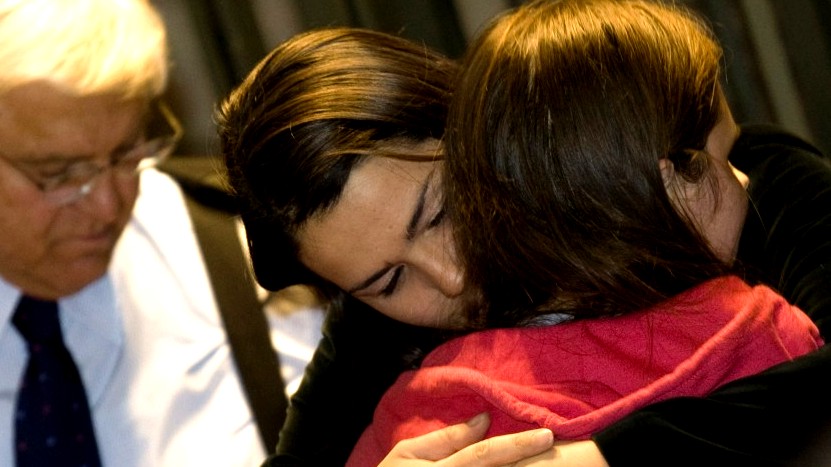
([Amanda Knox’s lawyers Luciano Ghirga and Maria Del Grasso who questioned Rita Ficarra]
1. Overview of this hoax series
Knox turned up at the central police station unwanted late on 5-6 Nov 2007 and briefly helped police with a list of seven names. Her version of this has morphed into a gigantic hoax.
One highly consistent version of the brief chat was testified to by all those officials present, and accepted by all courts including the Italian Supreme Court. Knox has served three years in prison for it and the US Embassy saw nothing done wrong.
And then there is Knox’s endlessly shifting version, inflated opportunistically and erratically by herself and wannabee experts over nearly seven years now. Knox has done so in numerous interviews, in her 2013 book, on her website, in her email to Judge Nencini, and in her “appeal” to the European Court of Human Rights. And the PR shills have done so on websites, on TV, in books, and in attempts to lobby the US federal government.
This version was repudiated several times by her smart Italian lawyers (though not by her foolish American lawyers) and they did next to nothing to try to verify it when questioning those officials at trial.
See a longer summary in Post #1 here.
2. Continuing the cross-examination of Rita Ficarra
In our hoax series second post we quoted two cross-examinations of Rita Ficarra by Sollecito’s lead lawyers. Here we quote two more, by two of Knox’s lawyers, Luciano Ghirga, and Maria Del Grasso.
Here “GCM” is Judge Massei. As the defenses fully acknowledged, this was merely a recap/summary, a simple checking of facts with someone who might be helpful which could have been done on a street corner. It was not a witness or suspect interrogation. Claims that it was are a key part of the great hoax.
This English translation of the relevant part of Rita Ficarra’s testimony on 28 February 2009 was by main poster and professional translator ZiaK. Her full translation will appear soon on the Meredith Case Wiki.
Please click here for more
Tuesday, May 13, 2014
Knox Interrogation Hoax #2: Trial Testimony From Rita Ficcara On Realities 5-6 Nov
Posted by Our Main Posters
1. Overview of this hoax series
Knox turned up at the central police station unwanted late on 5-6 Nov 2007 and briefly helped police with a list of seven names. Her version of this has morphed into a gigantic hoax.
One highly consistent version of the brief chat was testified to by all those officials present, and accepted by all courts including the Italian Supreme Court. Knox has served three years in prison for it and the US Embassy saw nothing done wrong.
And then there is Knox’s endlessly shifting version, inflated opportunistically and erratically by herself and wannabee experts over nearly seven years now. Knox has done so in numerous interviews, in her 2013 book, on her website, in her email to Judge Nencini, and in her “appeal” to the European Court of Human Rights. And the PR shills have done so on websites, on TV, in books, and in attempts to lobby the US federal government.
This version was repudiated several times by her smart Italian lawyers (though not by her foolish American lawyers) and they did next to nothing to try to verify it when questioning those officials at trial.
See a longer summary in Post #1 here.
2. The Testimony Of Inspector Rita Ficarra
Inspector Rita Ficarra was the one who initiated and led the discussion with Knox up to when Knox made her first statement, the first implicating Patrick Lumumba.
What follows is the cross-examination of Inspector Ficarra by the prosecution and all four cross-examining defense lawyers.
It would have been a really huge gain for the defenses at trial - a not-guilty verdict would have been almost guaranteed - if they had rattled Rita Ficarra and had her admit to Knox’s coercion. Especially by the supposed alternating tag teams. Especially of a Knox without food, drink, sleep, or breaks for the bathroom.
But note that in their cross-examinations NOT ONE defense lawyer even tried to go there. In their questioning of Rita Ficarra, that mundane scenario of the two brief sessions we describe above seems a given - their own sticking point.
Here “GCM” is Judge Massei. As the defenses fully acknowledged, this was merely a recap/summary, a simple checking of facts with someone who might be helpful which could have been done on a street corner. It was not a witness or suspect interrogation. Claims that it was are a key part of the great hoax.
This English translation of the relevant part of Rita Ficarra’s testimony on 28 February 2009 was by main poster and professional translator ZiaK. Her full translation will appear soon on the Meredith Case Wiki.
Please click here for more
Sunday, May 11, 2014
Knox Interrogation Hoax #1: Masterlist Of Posts Re Pre-Trial Events And Hoax Overview
Posted by Our Main Posters

Perugia Central Police Station at night (left-center)
1. Masterlist Of Posts In The Series
The Interrogation Hoax series will consist of a total of 24 posts.
These posts quote from a large number of transcripts only recently acquired and translated. There are no serious conflicts, no gray areas. One can assume with total certainty that this is the real thing (see Part 3 below), and that any other versions (see Part 4 below) are fabricated.
Numbering of posts 1-24 is not chronological, it represents the original order of postings.
1. What Happened At AK & RS Q&A Prior To 6 Nov
Click for Post: #19: ALL Knox Q&A Sessions 2-6 November 2007 WERE Recorded #1
Click for Post: #20: ALL Knox Q&A Sessions 2-6 November 2007 WERE Recorded #2
2. What Happened At Knox Q&A 6 Nov Ending 1:45 AM
Click for Post: #2: Trial Testimony From Rita Ficcara On Realities 5-6 Nov
Click for Post: #3: More Defense Pussyfooting Toward Rita Ficcara, Key Witness
Click for Post: #4: More Hard Realities From Rita Ficcara, More Nervousness From Defense
Click for Post: #12: Ficarra & Knox Notes PROVE Knox Merely Worked On Visitors Names List
Click for Post: #5: Key Witness Monica Napoleoni Confirms Knox Self-Imploded 5-6 Nov
Click for Post: #7: Testimony Of Witness Lorena Zugarini On The Knox Conniption 5-6 Nov
Click for Post: #8: Testimony Of Interpreter Donnino On Events Night Of 5 November
3. What Happened At Sollecito Q&A 6 Nov Ending 3:30 AM
Click for Post: #6: Sollecito Transcript & Actions Further Damage Knox Version
Click for Post: #9: Officer Moscatelli’s Recap/Summary Session With Sollecito 5-6 Nov
4. What Happened At Knox-Rights Session Ending 5:45am
Click for Post: #15: Knox Is Told Her Rights And Repeats Fake Murder Charge
5. What Of Relevance Happened In Ensuing Months
Click for Post: #13: The First Two Pre-Trial Opportunities Which Knox Flunked
Click for Post: #14: The Third Pre-Trial Opportunitty Which Knox Flunked
Click for Post: #16: The Fourth Pre-Trial Opportunity Which Knox Flunked
Click for Post: #17: Sollecito April 2008 Before Supreme Court Again Coldshoulders Knox
Click for Post:#18: The Final Pre-Trial Opportunities Which Knox Flunked
Click for Post: #21: Illustrating How Batshit Crazy The Interrogation Hoax Has Become
6. Why Investigators’ Version Won Hands-Down At Trial
Click for Post: #10: Why Prosecution And Defenses Never Believed Knox’s Version #1
Click for Post: #11: Why Prosecution And Defenses Never Believed Knox’s Version #2
2. Explaining Overall Arc Of Events
Much of the testimony listed above was about events at the central police station pre-arrest in early November 2007 and subsequent court attempts to achieve some believability and relief.
Early in 2009 at trial Knox and Sollecito sat glumly through all of the investigators’ pre-arrest testimony and cross-examination at trial. They were downhearted and apprehensive, and there were no smiles and few interruptions.
Subsequently Sollecito chose not to get on the stand, so from his team there really was never a rebuttal.
But Knox HAD to get on the stand, in July, for two days. She had no other way to defend herself against the serious felony crime of falsely framing Patrick for murder.
It was her word against theirs. It contradicted in many places what she had heard months earlier in sworn testimony from many investigators.
Knox’s version inevitably weakened a lot under cross-examination, and was ultimately a fail at trial and several appeals, even the annulled one.
Knox ended up serving three years. While on the stand she confirmed that she had been treated well, stiffing thousands of supporters duped into believing she had not been.
3. Explaining Court-Accepted Narrative For 6 Nov
This is an overview of Knox’s so-called “interrogation” at Perugia’s central police station, the subject of the first ten posts.
It led to her arrest and three years served. To make this picture really firm we will quote a lot of the testimony at trial. The Case Wiki carries all of these transcripts, many in English translation, and more.
Senior Inspector Rita Ficarra testified that she arrived back at the police station late on 5 November, and finds her way blocked by a cartwheeling Knox.
She rebukes Knox, who testily responds that she is tired of the investigation. Rita Ficarra tells Knox to go home and get some sleep. Knox testily refuses, and remains there.
Shortly after, Ficarra suggests to Knox that if she really wants to help, she could add to the list of possible perps - men who Meredith knew and who might have visited the house.
This was a recap/summary, a simple checking of facts with someone who might or might not be of help. This could have been done on a street corner or in a house by a single officer. It was not a witness or suspect interrogation. From the transcript:
Ghirga: “While this interrogation - let’s call it thus - was in progress, some colleagues arrive…” Ficarra: “It was not an interrogation, Attorney.” Ghirga: “They are called recaps/summaries.
Knox eagerly agrees. So they begin on the list.
This goes slowly because of language problems, until an interpreter, Anna Donnino, arrives. In total only Knox and four others (three of them women) are present.
Knox builds a list of seven people and adds maps and phone numbers (placed in evidence) in a calm proceeding. These were the names: Peter Svizzero, Patrick, Ardak, Juve, Spiros, Shaki and “a South African [Guede]” who played basketball near the house.
At several points in the evening Knox is provided with refreshments. No voices are ever raised, no bathroom breaks are refused.
In a separate wing Inspector Napoleoni and a couple of colleagues are seeking facts from Sollecito. Shown conflicts between what he has said and what his phone records show, Sollecito backtracks, and declares that Knox went out alone on the night, and made him lie.
Napoleoni moves through the questura to suggest to Ficarra to discuss the night of the attack with Knox in more detail and clarify who might have been present. Knox is not informed of Sollecito’s backtrack. She is asked for more names and spontaneously shares her phone. There is an outgoing to Patrick but no prior incoming. Knox is asked who Patrick is.
Suddenly, to the considerable surprise of others present, Knox has a yelling, head-clutching conniption (the first of several that night) and says “It’s him, it’s him, it was him, he killed her”. The session is halted.
Despite warnings she should not do so without a lawyer, Knox insists on a recorded statement which says she headed out to meet Patrick that night after he texted her. She accuses Patrick of killing Meredith.
Efforts are made throughout the next several hours to try to help Knox to calm down. Knox is put on hold, given more refreshments, and made comfortable on some chairs so she might try to get some sleep.
A second session ending at 5:45 is intended as merely a formal reading of Knox’s legal status and her right to a lawyer, with Dr Mignini presiding. She is to be held as a material witness and for her own protection.
Again warned that she should not speak without a lawyer, and no questions can be asked, Knox still insists on a second spontaneous accusation culminating in a second recorded statement.
This also says she went out to meet Patrick that night, also accuses Patrick of killing Meredith, and now also hints that Sollecito may have been there.
Just before noon, now under arrest and about to be taken to Capanne Prison, Knox insists on writing out at length a third statement this time in English.
She gleefully hands it to Rita Ficcara who cannot read it as she as no English. In the statement, Knox included this damning remark, without any mention of having been coerced: “The questions that need answering, at least for how I’m thinking are… 2. Why did I think of Patrik?”
Knox’s lawyers never ever substantially challenge this version, and never lodge any complaint. At trial in 2009 they accept on the record that there was no interrogation, and leave standing that Knox insisted on all three statements, and dont ever pursue Knox’s claims that she was coerced.
Courts all noted that there is no mention in that third note of Knox having been coerced, although this note was her idea and she could put in it anything she liked. From this there never was any going back.
In July 2009 at trial, in face of days and days of prior investigator testimony, Knox brashly tried to substitute this scenario above with the one below. Of course she was disbelieved.
For the calunnia framing of Patrick Lumumba Judge Massei in 2009 sentenced her to a year more than Sollecito, amended by Judge Hellmann in 2011 to three years served.
The Supreme Court definitively overruled her calunnia appeal so for her false framing of Patrick she is a felon for life.
4. Explaining Knox Family & PR Alternative
Knox’s Italian lawyers were not a part of this; in contrast the American PR lawyer Ted Simon sought to introduce major confusion.
In Italy, lawyers are REQUIRED to report tales of abuse of their clients or face possible criminal charges. Contrariwise, if they knowingly report false charges they can face similar charges. So what they do is a strong indicator of truth.
Amanda Knox’s lawyers not only did not ever report any abuse. They even announced publicly, in face of incessant claims of abuse by Knox, family, and PR forces, that they had seen no evidence of abuse and so would not be reporting.
Though her precise claims vary and often contradict one another, Knox herself has on and off ever since November 2007 tried to put the investigators on trial - tried to blame the police for causing her conniption and her false accusation of Patrick for the death of Meredith.
Her fail rate has been spectacular.
Knox failed to convince (1) Supervising Magistrate Matteini and (2) the Ricciarelli review panel in November 2007, (3) failed to convince Prosecutor Mignini in December 2007, (4) failed to convince the Supreme Court in April 2008, (5) failed to convince the Micheli court in late 2008, (6) failed to convince the judges and jury at trial 2009, (7) failed at annulled appeal 2011, (8) failed at repeat appeal 2013, (9) failed to convince the Supreme Court in 2012 and (10) failed again in 2015.
As Knox’s team simply did not ever believe her, they may not have given this their hardest shot. It was not part of their largely spurious complaint to the EC HR.
And yet despite all of these failures, the huge and very nasty Knox PR effort went full-bore ahead with the abuse allegations anyway.
Read this post of 11 February 2009 which was about two weeks before the Knox “interrogators” were cross-examined at trial, and several months before Knox herself took the stand. Dozens of media reports repeated the Knox claims as if true.
Knox repeated them in her April 2013 book, and her December 2013 email to Judge Nencini, and her appeal to EHCR Strasbourg, and in some TV and newspaper interviews, including one with the Italian weekly Oggi which caused that paper legal harm.
This version has been blown up by Knox PR shills in internet posts, articles, TV interviews, and books. Among others propagating it have been Raffaele Sollecito (in his book), Doug Preston, Saul Kassin, Steve Moore (especially), John Douglas, Jim Clemente, Paul Ciolino, Michael Heavey, Greg Hampikian, Chris Halkidis, Mark Waterbury, Doug Bremner, Candace Dempsey, Nina Burleigh, Bruce Fischer, and many posters on the Knox sites and Fischer sites and on Ground Report.
Main claims included 50-plus hours of “interrogation”, numerous officers in teams, no food or drink, no sleep, no bathroom breaks, no lawyer, no recording, and much abuse and yelling and suggestions and threats. Way beyond anything even Knox herself and notably her own lawyers ever claimed.
- Here is Steve Moore claiming that around a dozen cops in rotating tag teams of two assaulted a starving and sleepless Knox over 20/30/40 hours, threatened her, and refused her a lawyer throughout.
- Here is Saul Kassin claiming that Knox was interrogated over the entire night of 5-6 November, until she was finally broken and a coerced “confession” emerged - even though the “false confession” actually framed Patrick and was in reality a false accusation. That Kassin ignores.
- Here are several former FBI profilers blatantly embellishing the same claims in a book, with (today) 60 five-star reviews.
And yet Knox’s own Italian lawyers specifically denied her accusations! No complaint against the police was ever lodged. All courts disbelieved her. Knox served her three years. But still the PR-driven hoax keeps resounding.
Friday, May 09, 2014
Amanda Knox’s Awkward, Robotic TV Appearances: New Science Could Blow Away Such Fraud
Posted by Peter Quennell
In Italy the zillion or so Italians that Amanda Knox has framed are starting to push back on steroids in the Italian media and courts.
More on that coming up. Meanwhile Americans have been a tad less nimble to realize that they’ve swallowed a gigantic hoax.
Unsurprising, perhaps, given years of uniquely one-sided TV coverage of the case. But thanks to the good English-language reporters in Italy who have persevered. And thanks to CNN’s Nancy Grace for her biting segment this week, making it quite obvious where she stands on guilt.
Knox’s TV appearances and written statements are ringing more and more hollow as they lose all touch with reality. See our post immediately below. Such a brazen mangling of hard facts is absolutely absurd.
The professionals Vivianna and Friendofstfrank, main posters here, each have posts in the works for us on what they have been reading from Knox’s persona on the TV screen.
In the meantime, please check out these videos on the new science. Each is an hour long. They show just how hard it could get for any future Knoxes and Sollecitos to sustain a similar hoax in future.
Here’s an overview of the videos from the New York Times.
The program looks at how developments in neuroscience are affecting court cases and might do so even more radically in the future. It sets up a fictional trial involving a shooting during a convenience store robbery, cutting between courtroom scenes and visits with researchers and legal scholars who are working on the front edge of this world.
By mapping brain activity, scientists know quite a bit about which regions are involved with processes like facial recognition, as well as the differences between mature adult brains and the brains of young people. (The fictional shooting suspect is 18.) The program has segments on how this research might be applied to issues like determining whether a witness is correctly identifying someone, whether a defendant is lying about not having been at a particular location, even whether potential jurors have racial biases.
Researchers, able to see the implications of their work, are also already studying whether knowledgeable test subjects can subvert the technology, rigging test results by how they think or where they focus their eyes.
Tuesday, May 06, 2014
Judge Nencini Issues Harsh Warning To Tell The Truth - So Amanda Knox Does The Precise Opposite
Posted by Our Main Posters
1. Substance Of The Nencini Explanatory Report
The Florence Court of Appeals released the Nencini Motivations Report in Florence one week ago today.
This report explains the rejection of Knox’s and Sollecito’s own first appeal against the Massei trial outcome of 2009. Four years were lost because the Hellmann court, which heard the first iteration of that appeal was bent as Cassation, the competent judge displaced, and now Judge Nencini have all concluded.
The Hellmann outcome of 2011 was mostly annulled, as in “ceased to exist”. The main findings and verdict have zero legal standing, and zero relevance to today’s process though (see below) Knox and Sollecito repeatedly try to ride that dead horse again.
Cassation confirmed Knox’s three-year prison sentence for framing Patrick (for which she has served the time). And Cassation referred the methods and recommendations of the Conti & Vecchiotti consultancy, which Cassation had hammered on legal grounds, to the Florence appeal court for the substance to be reviewed.
Our evidence and law experts here and in Italy have been looking at Judge Nencini’s 347 page report and find it hard-hitting and unequivocally blunt.
It will be extremely hard to appeal against within the very narrow limits Cassation allows. It removes all of Judge Massei’s ambiguities about motives, it reaffirms the witness statements of Curatolo and Quintavalle, and it judicially affirms the validity of the DNA and other forensic evidence against Knox and Sollecito.
There is overwhelming proof of the presence of all three perps, Knox, Sollecito and Guede, in the cottage that night. Guede is considered to have been brought inside by Knox, who had the only key, and he could not possibly have broken in through Filomena Romanelli’s window in the manner asserted by their defense.
Especially troubling for the defense, the report hints at an illegal suborning of the independent forensic experts appointed by the Hellmann court, and it also hints that the two “supergrass” witnesses, the prisoners Aviello and Alessi, may have been illegally tampered with by Sollecito’s lawyer Giulia Bongiorno, as first claimed 30 months ago.
The report warns that criminal slander of justice officials and other contempts of court will be heavily leaned on.
So the report demolishes the last remnants of Judge Claudio Hellmann’s now annulled acquittal, and substitutes for its fatally flawed reasoning a tightly crafted report that confirms the convictions of Knox and Sollecito.
It confirms that they acted in concert with Guede as Cassation itself long ago concluded had to be the case, and it appears to close any possible argument against the verdict that will carry weight at the Supreme Court.
2. Amanda Knox’s Press-Release Statement In Response
Knox issued a seven paragraph statement later the same day. Maybe not the smartest bit of work.
It is riddled with factual inaccuracies and innuendo, is typically arrogant and condescending in tone, includes the trademark racial innuendos about Italians and the black guy in the case, and shows no signs in its compiling of competent legal help.
Here below we show the various ways in which Knox flouts Judge Nencini’s warning and attempts to mislead. None of what Knox stated was the truth.
Claim: The Hellmann Court Found Knox “Innocent”
I have stated from the beginning of this long ordeal that I am innocent of the accusations against me. I was found innocent by the only court in Italy that retained independent forensic experts to review my case. I want to state again today what I have said throughout this process: I am innocent of the accusation against me, and the recent motivation document does not ““ and cannot ““ change the fact of my innocence.
First even if she was provisionally released following the now-annulled appeal, Amanda Knox was never, repeat never, found innocent. Only Cassation can make that final ruling, and they strongly found against the lower court that had jumped the tracks midway-through.
Even Judge Hellman himself said after his verdict that ‘the truth might be otherwise’ and suggested any reasonable doubt as to guilt has not been categorically and legally dismissed. He seemed to divine that he had failed in his task of bending the outcome in a way that would stay bent.
Second the court that Knox thinks found her innocent no longer exists as a legal fact. It seems to endemically escape Knox that the Hellmann outcome was annulled. Annulled. As in: wiped off the books. It is surprising that even Curt Knox and Ted Simon and David Marriott, while admittedly themselves no masters of Italian law, cannot help Knox to grasp that simple fact. It weakens her to keep clinging to a myth.
One reason it was annulled (and the reasons were overwhelming, one of Italy’s most decisive annullments ever) was that both Cassation and Dr Nencini had good reason to suspect the Hellmann court had been corrupted and had deliberately departed from the evidence and the law. Knox needs to ask herself why the highly qualified Judge Chiari was pushed aside (and immediately resigned in anger) in favor of a wrongly-qualified business judge (who is now ignominiously retired).
Third, it needs to be grasped by Knox that the Conti/Vecchiotti consultancy, far from being legally right and acting independently (and scientifically), was suggested as illegal by Perugia’s chief prosecutor Dr Galati, as appeal judges are forbidden from appointing consultants at that stage. While Cassation passed in ruling on that one, the consultancy outcome was criticised as illogical and legally unsound by both Cassation and Judge Nencini, as biased, full of baseless innuendo about contamination, and possibly tampered with by an American academic hired by the defense.
Conclusion: none of what Knox stated was the truth.
Claim: Only Rudy Guede’s DNA Was Found
The recent motivation document does not ““ and cannot ““ change the forensic evidence: experts agreed that my DNA was not found anywhere in Meredith’s room, while the DNA of the actual murderer, Rudy Guede, was found throughout that room and on Meredith’s body. This forensic evidence directly refutes the multiple-assailant theory found in the new motivation document. This theory is not supported by any reliable forensic evidence.
The forensic evidence is not just the DNA on the knife or in the room. It also includes the extensive traces deposited by Knox in the rest of the crime scene (bathroom, corridor and Filomena’s bedroom), and it also includes all of the autopsy.
Meredith’s room itself was not comprehensively tested for DNA. The room was dusted only for fingerprints, as the investigators had to make a call on prints or DNA.
Guede’s DNA was not found “throughout that room” or all over Meredith’s body. Guede’s DNA was found only in one instance on Meredith’s body, on a part of Meredith’s bra, mixed with Meredith’s blood on a sweatshirt cuff and the purse, and on toilet paper in a bathroom.
Knox’s DNA was found mixed with the blood of Meredith in multiple places, the only known source for which was the pool of blood in Meredith’s bedroom: multiple prints of Knox’s bare right foot in the hallway and in Knox’ bedroom, and at least five instances of mixed samples containing the DNA of both Meredith and Knox, including in the north bathroom and Filomena’s room, places where Guede did not go.
The court ruled that the blood and mixed DNA evidence found throughout the crime scene places her and Sollecito there at the time of the murder at the same time as Rudy Guede.
Though not DNA, there was one bloody shoe print in Meredith’s bedroom estimated to be Euro size 36-38, compatible with Knox size 37 and with no one else known of who could have left it there.
No fingerprints of anyone were found in the room, just a palmprint of Rudy Guede. Fingerprints were not found even on Knox’s own lamp, which she only confirmed grudgingly at trial was her own, and not found even in Knox’s own bedroom. Overwhelming sign of a cleanup? The courts all believed so.
Conclusion: none of what Knox stated was the truth.
Claim: The Knife As Murder Weapon Was Disproved
The forensic evidence also directly refutes the theory that the kitchen knife was the murder weapon: the court-appointed independent experts confirmed that neither Meredith’s blood nor her DNA was on the alleged murder weapon, which experts also agreed did not match the stab wounds or the bloody imprint of a knife on her pillow.
Judge Nencini’s finding is that two knives HAD to have been involved from both side of Meredith’s throat and the final blow was by a large knife the same size as the one in evidence.
Regarding the large knife, Knox rehashes the same arguments her defense made to no avail before the original trial court that found her guilty. We posted explaining the solid proof here and here.
The only DNA tests that matter with regard to the big knife are (1) the sound finding by Dr Stefanoni that Meredith’s DNA was on the blade - Knox is wrong, the independent experts did not refute that; (2) the sound findings by Dr Stefanoni and the Carabinieri lab that Knox’s DNA was on both the blade and the handle of the knife. None were overturned; contamination was ruled out; and the defense was left without a shot.
The Hellmann-appointed experts confirmed that the genetic profile found on the knife blade was the genetic profile of Meredith Kercher. The TMB test did not confirm if it was blood, but defense experts were forced to concede that TMB erroneously fails to confirm that blood is present about half the times in assessing minute quantities.
The Hellmann-appointed experts tried to explain away the genetic profile as being the result of contamination, but were never able to identify any scenario by which a knife that had supposedly never left Sollecto’s kitchen contained biological material yielding a clear genetic profile of Meredith Kercher.
Accordingly the Appeals court has ruled the kitchen knife is in fact the one that was wielded by her to strike a final blow, and at the same time there was a second knife in the room used by Sollecito to torture Meredith.
London DNA expert Dr David Balding certified Raf’s DNA as being on the bra clasp. This proves by itself that Sollecito was there. Knox belatedly claimed she stayed at the Via Garibaldi apartment with Sollecito all evening and now and then Sollecito belatedly backs her up. But how could that be if the court has positives of his footprint on the bathroom rug and on the bra, showing he was over at Meredith’s cottage that night? Proof of him present equals proof of her.
The Hellmann-appointed experts were not charged with analyzing the stab wounds, or whether the imprint on a sheet was of a knife or of something else and the result of the fabric being folded - nor was this within their field of expertise. Defense experts testifying on these issues were in conflict.
Conclusion: none of what Knox stated was the truth.
Claim: The Circumstantial Evidence Is “Unreliable”
In fact, in the prior proceeding in which I was found innocent, the court specifically concluded that the forensic evidence did not support my alleged participation in the crime and further found that the circumstantial evidence was both unreliable and contrary to a conclusion of guilt.
The recent motivation document does not ““ and cannot ““ change the fact that the forensic evidence still does not support my participation and the circumstantial evidence still remains unreliable and contrary to the conclusion of guilt.
Knox appeals to Hellmann’s ruling on the circumstantial evidence being unsound. But the Supreme Court, in annulling Hellmann, explained why it found his arguments illogical, and reminded the court of the standards by which circumstantial evidence must form a coherent whole. Judge Nencini in our opinion amply meets those standards in an elegantly argued report which will be hard to defeat at Rome’s Supreme Court.
Knox herself has proved the “unreliable” one, proven over and over again to be a liar who attests to her own bad memory in written statements, who talks of “dreams her mind made up”, who repeatedly goes vague.
We cannot rely on Knox’s recall of phoning mom, the timing of which moves and sometimes disappears. Knox claims she can’t remember where she was that night, she told a whopper of a lie on her boss, she can’t remember if the door to Filomena’s room was open or closed, she can’t remember her own lamp, she claims she rarely looks at a clock. On and on.
The strongest example of circumstantial evidence Knox can’t shake is the five spots of her DNA mixed with Meredith’s blood. Maybe 2 or 3 spots could be put down to unlucky chance, but five really removes reasonable doubt.
Conclusion: none of what Knox stated was the truth.
Claim: No “Legitimate” Motive Is Identified
And the recent motivation document does not ““ and cannot ““ identify any legitimate motive for my alleged involvement in this terrible crime. No fewer than three motives have been previously advanced by the prosecution and by the courts. Each of these theories was as unsupported as the purported motive found in the new motivation document, and each of these alleged motives was subsequently abandoned by the prosecution or the courts. Like the prior “motives”, the latest “motive” in the new motivation document is not supported by any credible evidence or logic. There is simply no basis in the record or otherwise for this latest theory.
“Proof” of motive is not required in any legal system in the world. The serial misleader Ted Simon should at least admit to that. The motives advanced were not withdrawn or abandoned by successive judges; they were fine-tuned chronologically only within very narrow limits. The sex hazing that went too far was weighted downward and pushed back, and a battle over theft of money was weighted upward and pushed forward.
The court found very compelling evidence that Knox committed the murder and led the pack. It postulates that Meredith and Amanda were incompatible with each other, and that Knox, Sollecito and Guede, high on drugs, first assaulted Meredith, restrained and abused her, and then murdered her with two knives.
Knox was known to be in serious rejection by those she encountered in Perugia for her sharp-elbowed brashness - growing rejection by her flatmates, her employer and the bar customers, and just about everyone she encountered except initially for Sollecito. But soon even he was being given a hard time and has semi-rejected Knox in return ever since. The first words of his 8 November 2007 statement to Judge Matteini were “I wish to not see Amanda ever again.”
And money was a huge looming problem which could have had her back in Seattle in weeks. Knox was known to want to head for China, and was known locally to have an expensive drug habit which had cut her savings in half. She really needed to hang on to that job at Patrick’s bar, especially as she had no work permit.
Sollecito’s bank balance was minimally topped up by his father each month. Francesco seemed to realise cocaine is an expensive habit and didnt want to see his son off down that slippery slope. So with Knox’s own habit, her remaining savings would have run out in weeks. How then to explain to Curt Knox that she really needed a whole lot more? He would have given her a very hard time before any more money flowed.
Conclusion: none of what Knox stated was the truth.
Claim: The Supreme Court Will Allow Another Full Appeal
I will now focus on pursuing an appeal before the Italian supreme court. I remain hopeful that the Italian courts will once again recognise my innocence. I want to thank once again, from the bottom of my heart, all of those””family, friends, and strangers””who have supported me and believe in my innocence.
Cassation wont “once again” recognise innocence. Knox should be encouraged to get real. So should her dummy followers - all her immediate circle know she was involved. There are no obvious grounds for Cassation to second-guess Judge Nencini, a very senior and very respected judge, considering the thoroughness of the Nencini Report. The disjointed series of statements on her blog arguing to the contrary look like the opinions of her friends and fans, not legal minds, and it is time she realizes they have feet of sand and no power to help.
Conclusion: none of what Knox stated was the truth.
Three lawyers and five others supplied the rebuttals for Amanda Knox’s false claims here and elsewhere, such as Knox’s email to Judge Nencini and her interviews on TV. Posts on those follow soon. Below: the careful way in which Italian media explain what Judge Nencini released.
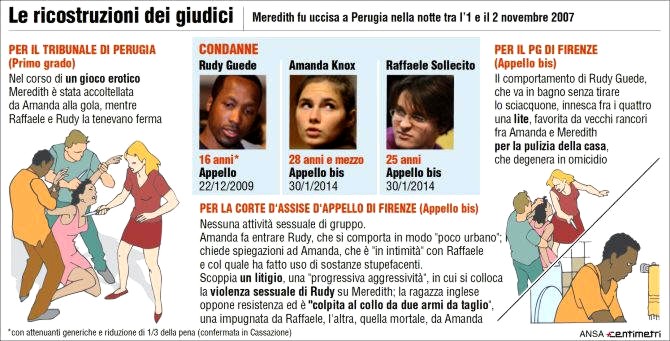
Tuesday, April 29, 2014
The Nencini Report Complains About Multiple Instances Of Evidence Tampering And Criminal Slander
Posted by Our Main Posters
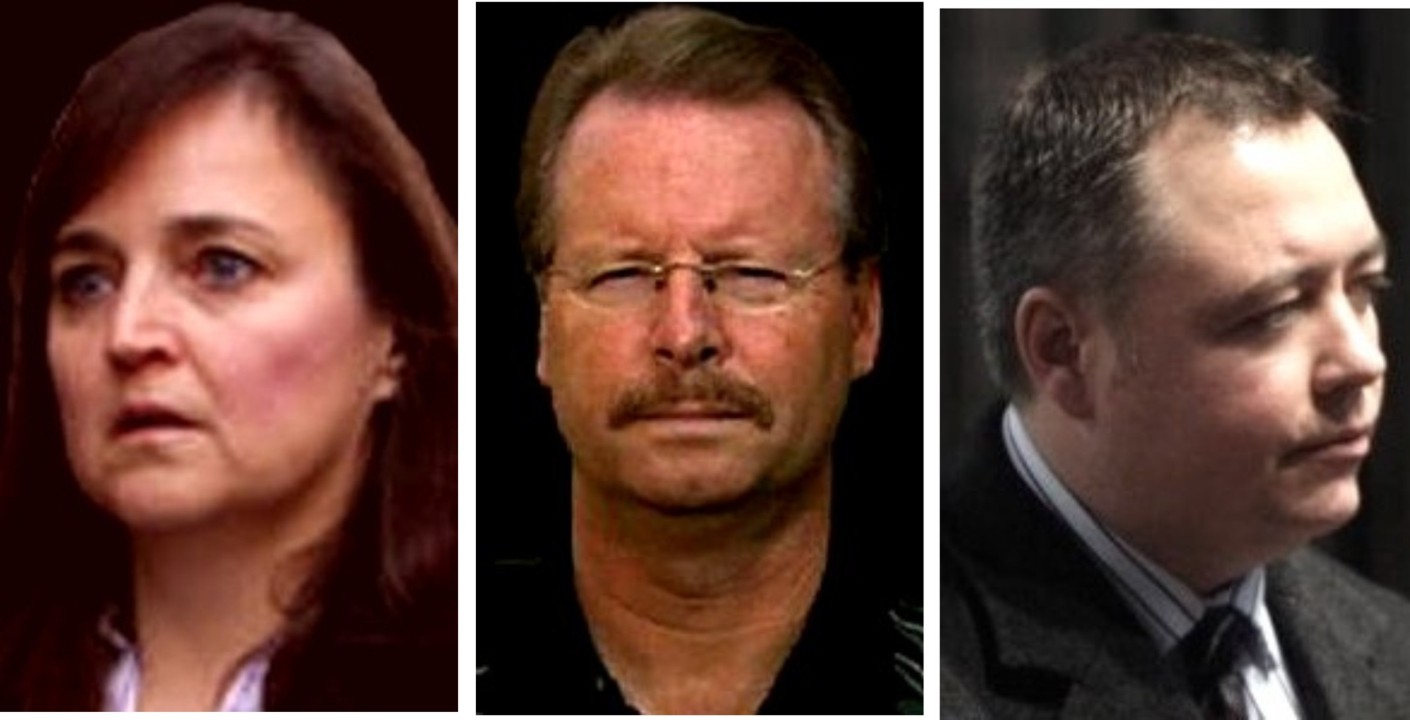
[Edda Mellas, Curt Knox and Chris Mellas might be among those knee-deep in the soup]
Already investigations were under way into a PR campaign that in Italian juidicial terms seems little difference from a criminal enterprise.
Now Judge Nencini has included strong complaints in his sentencing report about nefarious behavior. This might now set a number of people to wondering if they have painted felony targets on their own backs, though the seriously dopey ones may have to have it spelled out for them.
This summary of the complaints is from Andrea Vogt’s excellent report in The Week/First Post which also highlights the appeal findings.
1. Interference with the courts
...during the course of Knox’s long and drawn out judicial process, Judge Alessandro Nencini claims, serious attempts were made to tamper with evidence in a way that would favour her….
In the scathing report that spells out the evidence, logic and reasoning that led to his guilty verdict in Florence on 30 January, Judge Nencini also says Knox and her defence tried to tamper with evidence and pervert the truth by introducing prisoners as witnesses, whose testimony turned out to be false and induced by “other interests”.
“It is clear how this trial was subject to heavy evidence tampering, both internally (slander) and externally,” Nencini writes.
He calls the media interest in the case “fertile ground” that led a number of witnesses to give misleading testimony in exchange for their moment in the limelight.
He also slams the first appeal court’s independent experts for having been oddly superficial and illogical in their analysis of the DNA evidence, especially regarding the potential for contamination, noting that controls were in place to prevent it….
2. Vilification campaign post 2011
Knox and Sollecito were released from prison in 2011 after an appeals court sensationally acquitted them of nearly all charges (one charge against Knox stuck: the slander of Congolese pub owner Patrick Lumumba, who she initially blamed for the crime).
The acquittal ruling, however, was later annulled by Italy’s Supreme Court and a second appeal trial in a jurisdiction outside Perugia was ordered. By that time Knox was safe and sound back in Seattle and chose not to return to Italy for her Florence appeal, instead emailing a statement to the judge, proclaiming her innocence. Sollecito attended.
On 30 January, Judge Nencini and a lay panel of jurors issued a guilty verdict and handed down an even harsher sentence: 25 years for him and 28.5 years for her.
Knox went on national television back in the US the following day claiming, as she always has, that she continues to be the victim of a gross miscarriage of justice carried forward by inertia by dozens of Italian judges.
But in his report, Nencini suggests the gross miscarriage was by Knox and her defence lawyers: indeed, he gave her a longer jail sentence precisely because of the gravity of the slander against Patrick Lumumba aimed at getting investigators off her back.
A small group of fervent supporters continue to lobby on Knox’s behalf and earlier this month she attended an Innocence Project conference with other exonerees, even though Italy’s courts have upheld her convictions….
With this latest development… there appears little wriggle- room for either Knox or Sollecito. Italy’s Supreme Court is expected to give the final ruling on the case after September.
This post was about Amanda Knox’s seriously surreal appearance at that conference of the Innocence Project.
We will soon post a helpful roadmap to all the other numerous suggestions of nefarious behavior on which we have posted. We dont mean to isolate out just Edda Mellas, Curt Knox and Chris Mellas.
Amanda Knox with her highly defamatory website and new charges pending for her book is one of the worst offenders.
Why Final RS & AK Appeal Against Guilty Verdict May Fail: Multiple Wounds = Multiple Attackers
Posted by Our Main Posters
Reports From Italy On Why AK & RS Appeal Failed
The Nencini Report has been released and we are seeing to its translation right now.
Meanwhile journalists in Italy have these reports which convey the very implacable, damning tone. There was nothing accidental about Meredith’s death; Knox premeditated it all along.
First report
From Il Messagero kindly translated by Miriam:.
FLORENCE - The knife that was seized at Raffaele Sollecito house is the knife that killed Meredith Kercher, and the blow was delivered by Amanda Knox. So writes the President of the Court of Appeal of Florence, Alessandro Nencini, in the motivation report of the sentence that was passed on Jan. 30th that saw Amanda Knox sentenced to 28 and a half years and Raffaele Sollecito to 25 years.
Over 330 pages in which the court covers the appeal and explains the conviction. Starting with the knife considered “not incompatible with the wound that was carried out on Meredith Kercher. “In the present case, writes Nencini what counts is the accessibility of the weapon by the accused, it’s concrete portability from house to house, it’s compatibility with the wound, and the presence of Meredith’s DNA on the blade. All of these elements ascertained by the court lead to the conclusion that the knifed evidenced as no. 36 was one of the knifes used in the attack, and was the knife that Knox used to strike the fatal blow to Meredith’s throat.”
The court retains to have sufficient evidence of “certain reliability” of Rudy Guede (convicted to 16 years) Amanda and Raffaele in the house where Mez was killed, on the night between the 1st and November 2, 2007 in 7 Via della Pergola “in the immediate phases following the murder.” The Court then tells how she was immobilized and Mez “was not able to put up some valid resistance because she was dominated by multiple assailants and cut at the same time with the blades of several knives.”
Rejected therefore is the defense’s strategy of both of the convicted, that have always maintained that the killer was only one.: the Ivorian Rudy Guede.
Second report
Bullet points from various Italian media.
- The big knife from Sollecito’s house held by Amanda Knox caused the fatal wound to Meredith while the other was held by Raffaele Sollecito.
- There is strong “multiple and consistent” evidence of all three in the house immediately following the murder. All three worked to suppress Meredith.
- There was an escalating quarrel between Knox and Meredith leading to a progressive aggression and murder with sexual components.
- Between Amanda and Meredith there was no mutual sympathy and Meredith harbored serious reservations about the behavior of AK.
- The biological trace found on the bra clasp that Meredith Kercher was wearing the night she was murdered was left by Raffaele Sollecito
Third report
No especially accurate reports in English have appeared yet and the erroneous “new trial” is still surfacing. Andrea Vogt tweets that she will be posting an analysis soon.
The mischievous defense-inspired “sex game gone wrong” and “satanic theory” mantras are still widely showing up in the duped media, but are nailed hopefully finally in this new report.
Judge Nencini has closely followed and endorsed the “from all angles” Massei trial analysis, but with the inclusion of some more credible explanations from Prosecutor Crini which Judge Micheli had also espoused back in 2008.
In particular, Rudy Guede is not now highly improbably seen as the one initiating the attack on Meredith, and sex was not at all the primary driving force for the attack (the prosecution never ever said it was). Knox carried the big knife from Sollecito’s for a purpose.
The bad blood between the girls resulting from Knox’s crude, brash, very lazy, drug-oriented behavior was well known in Meredith’s circle. All of them had backed away from her, as also had her employer and the patrons in his bar.
There was a probable theft of money by Knox who was unable to account for a sum similar to what Meredith would have stashed away for the rent and that is seen as the probable spark for the explosive argument and attack.
Fourth report
Barbie Nadeau in The Daily Beast
Amanda Knox apparently did not kill Meredith Kercher in a “sex game gone wrong,” as had been previously decided by a lower court in Perugia, according to a Florentine appellate judge who released today a 337-page document explaining his decision to convict Knox and her erstwhile Italian boyfriend, Raffaele Sollecito, for Kercher’s murder. Rather, the judge claims, Knox allegedly killed Kercher, her 21-year-old British roommate, because she didn’t like her.
All Italian courts require judges to explain the reasoning behind their rulings, and it likely represents the penultimate step in a seven-year case that has seen Knox and Sollecito first convicted in 2009 then acquitted in 2011 then convicted again in January 2014. Rudy Guede, an Ivory Coast native who was also convicted for his role in the murder back in 2008, is serving a 16-year jail sentence. He is currently eligible to apply for work furloughs from prison.
Judge Alessandro Nencini, along with a second judge and six lay jurors, were tasked with hearing a second appeal that began in September 2013 after Italy’s high court threw out the acquittal that set Knox and Sollecito free in 2011. Italy’s high court cited “inconsistencies” and “legal mistakes” and tasked Nencini’s court with hearing the appeal again. It was not a retrial per se, but rather a fresh look at the appeal process that freed Knox.
Nencini decided that the appellate court that set Knox free erred in evidentiary and legal matters. That court will now have to rule definitively on the case, using Nencini’s reasoning and whatever appeal Knox and Sollecito file for their final judgment. If the high court accepts Nencini’s verdicts, the two will be required to serve their prison sentences in Italy. Knox has vowed she will not return to Europe, but Sollecito, unless he escapes, won’t be as lucky.
The court’s explanation of its decision comes down hard on the first appellate court that overturned Knox’s guilty verdict, at times seemingly scolding them for misapplication of penal codes and for throwing out witness testimony without explanation. “It was an operation of evaluating evidence with using logic,” Nencini wrote, accusing the first appellate court of essentially throwing out testimony that allegedly proved Knox’s involvement, but keeping testimony that supposedly supported her innocence.
He used Knox’s prison diary as a prime example. “Look at the contradictions in the evaluation of the diary written in English by Amanda Knox,” he wrote, referring to a handwritten prison diary taken fromKnox’s cell as part of the investigation to determine why she accused her pub boss Patrick Lumumba of Kercher’s murder during early interrogations. “On one hand, the appellate court of Perugia completely devalued the writings when she admitted wrongdoing by accusing Patrick Lumumba. On the other side, they valued it when she defended herself.”
Nencini also ruled that there was plenty of forensic evidence tying Knox and Sollecito to the crime scene, writing “they left their tracks in the victim’s blood” more than once in the document. He accepted testimony that supported the theory that a knife found in Sollecito’s apartment was one of the primary murder weapons, and he reasoned that a second knife was also used that matched a blood stain left on Kercher’s mattress.
The first knife in question was the only hard evidence reexamined in the second appeal, and forensic experts ruled that a previously untested spot on the knife’s handle consisted of 100 percent Knox’s DNA. An earlier court heard testimony that a tiny smidgeon of DNA on the groove of the blade was Kercher’s, but the first appellate court agreed with witnesses who testified that the sample was too small to be considered a perfect match. The second appellate court not only considered the knife to be the murder weapon, it also ruled that Knox “plunged the knife into the left side of Kercher’s neck, causing the fatal wound.”
The second appellate court also reasoned that Kercher’s bra clasp, which had been cut from her body after she was killed, had Sollecito’s DNA on the tiny metal clasp. “The biological trace found on the bra clasp that Meredith Kercher was wearing when she was assassinated belonged to RaffaeleSollecito,” Nencini wrote, agreeing with the judge in the original murder conviction. “The clasp was manipulated by the accused on the night of the murder.”
The court also scoffed at certain rulings laid out by the first appellate court, saying that the court’s reasoning that it would have been easy for “a young athlete” like Rudy Guede to scale the wall and enter the apartment, was borderline racist.
Nencini also ruled that with regard to motive in the murder, it was subjective and personal. “It is not necessary for all the assailants to share the same motive.”
The court picked out small details of Knox’s presumably errant testimony, including how she told police the morning Kercher’s body was found that Kercher always locked her door “even when she takes a shower,” which was later contested by the girls’ other roommates.
Nencini also clearly believed ample forensic testimony, presented by experts examining the original autopsy, that Kercher was killed by more than one person. “”She was completely immobilized when she was murdered,” he said, reasoning that Guede could not have acted alone, and instead likely held her back as Sollecito and Knox knifed her.
The judge also pointed out incongruences in Knox’s testimony about the night of the murder, but noted problems with the other witnesses, which included a homeless man, an elderly woman who said she heard screams. Still, he ruled that Knox’s accusation of Lumumba is vital evidence against her. “It is impossible to separate the two acts,” he wrote.
Using Nencini’s reasoning, Knox’s lawyers now have the roadmap for planning their final appeal to Italy’s high court, likely later this year or in early 2015. However, this same high court threw out the acquittal in the first place, so Knox may need more than luck to walk free. If she is definitively convicted, she will likely face an extradition order to come back to Italy to serve out her sentence. There are very few legal loopholes that would allow an American citizen to escape a court decision by a country, like Italy, that shares extradition treaties with the U.S.
[Judge Massei at crime scene; report says why Knox & Sollecito appeal against his 2009 verdict has failed]
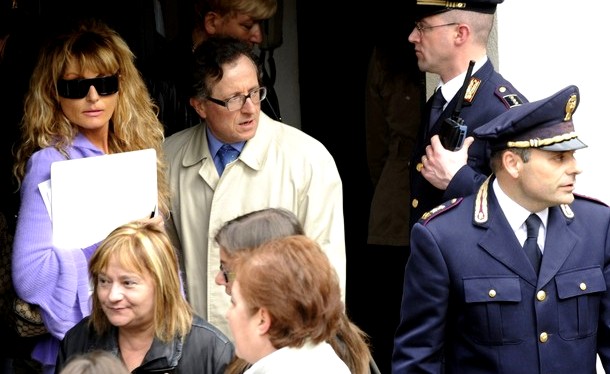
[The Supreme Court in Rome is expected later this year to confirm this outcome]

Sunday, April 27, 2014
Knox & Sollecito Actions In The Week Prior To Arrest: An Incriminating Behavior Pattern For Sure
Posted by James Raper
[Video above: Sollecito slams Knox’s weird behavior, while not explaining numerous examples of his own ]
1. Today’s Context To This Post
A very strong case for guilt has been made at trial and endorsed at the first-level appeal.
This series hammers home the growing hundreds of incriminating stark differences between the official evidence record, Sollecito’s and Knox’s two books, and Sollecito’s and Knox’s multiple conflicting claims since.
The focus of this post as with the one immediately below is upon the described behaviours of Knox and Sollecito, from the very beginning to this very day. This pattern has more than contributed to the certainty of their involvement in the murder of Meredith Kercher.
2. How The Behavior Speaks To Guilt
The early pointer of the staged break-in aside this behaviour gave investigators an insight into the pair’s possible involvement back on Day One: Behavioral pointers have continued on a par with corroborated developments in the case.
It has even continued, incredibly, since their release from prison. For me it is the thread that runs through this case having as much to do with the overall picture of culpability as the other elements .
This behaviour - to include what they have to say for themselves - is a catalogue of the inappropriate, of the implausible, of inconsistencies and contradictions, of evasions and obfuscations, to be gleaned from the accounts of Knox and Sollecito themselves and highlighted in the accounts of other witnesses. It is also to be gleaned from phone and computer records.
Taken together it is a formidable body of evidence which goes to character and culpability. It cannot be attributed to a railroading job, the machinations of a corrupt and evil prosecutor or character assassination by the media. It is also implausible if not impossible to explain it as being due to naivety, confusion or some quirkiness of character.
It amounts to the pair of them concocting stories, telling lies and misleading investigators and the general public.
3. Physical Evidence Array Is Already Substantial
There are numerous items of evidence which are building blocks in the prosecution case and with which we are all familiar.
- 1. The staged break-in via Filomena’s window with pointers to this outside, on the windows and shutters, and throughout the bedroom.
2. The evident partial clean up proved by footprint trails with footprints missing and what was behind the locked door.
3. Amanda Knox’s lamp on the floor behind Meredith’s locked door which she only conceded was her own at trial, under pressure.
4. Knox’s dried and congealed blood on the tap in the small bathroom that Amanda Knox and Meredith shared.
5. The bloody footprint on the mat in that bathroom definitively attributed to Sollecito rather than Guede
6. The mixed DNA of Knox and Meredith Kercher found in blood in the basin, the bidet and on the box of Q tips in that bathroom
7. Two luminol enhanced mixed traces containing DNA belonging to Knox and Meredith Kercher, one in the corridor and the other in Filomena’s room
8. Two luminol enhanced footprints of Knox in the corridor and one of Sollecito immediately outside Meredith’s room.
9. The knife taken from Sollecito’s apartment with Meredith Kercher’s DNA on the blade and Knox’s DNA on the handle and on the blade
10. Meredith Kercher’s bra clasp with Sollecito’s DNA on a hook and contamination possibilities definitively ruled out.
4. Behaviors In The First Week Of November 2007
I don’t want to make this an unduly long post. Accordingly I am going to concentrate on the period up to that famous police interrogation analysed just below. As to that critical period I will be selective but it should be enough.
The Lady With The Mop?
The story (in Knox’s e-mail) that she had visited the cottage to collect a mop, have a shower and get a change of clothing, earlier on the morning of the 2nd November, but did not notice that Filomena’s window had been broken and her room trashed is just that - a made up story. It is entirely implausible and the account unreliable for a number of reasons including-
- (a) it is hard to believe that she did not notice the hard to miss fact that the shutters to Filomena’s window were (as they were found) open - this would have alerted her to the likelihood that Filomena was back home which she would, of course, have checked out of curiosity if nothing else given that she found no one home.
(b) her claim that Filomena’s door was shut is contradicted by Sollecito who wrote (prison diary) that when he later entered the cottage with Knox Filomena’s door was wide open.
(c) it is hard to believe that she took a shower without noticing until after her shower (as she claimed) that there was blood on the bathroom mat, including a bloody footprint. In fact she didn’t even claim to notice that it was a footprint despite the fact that it was obviously so.
(d) it is hard to believe that having found the front door wide open and having found blood, and having opted for a shower and to blow dry her hair, she never got round to checking for any sign of Meredith’s presence. Any one else would have tried her door to check whether or not she was home.
(e) from her appearance at the cottage that morning it is hard to believe that she took a shower at all (let alone blow dried her hair) and the cops remarked that she reeked of body odour.
(f) less problematic but nevertheless still somewhat surprising is that as she is drying her hair she makes a fuss over shit (left by Guede) in the toilet, describes herself as being “uncomfortable” about it but does not flush it away before grabbing the mop and leaving.
The Two Stayed At Home?
The story that Knox and Sollecito had spent the previous night (the night of Meredith’s murder) indoors, critically from 9 pm onwards, that both had slept and that Knox had been the first to rise at about 10.30 am the next morning is implausible and uncorroborated, not only because this alibi is directly contradicted by the testimony of Curatolo and Quintavalle, and Sollecito’s statement to the police that Knox had gone out and not returned until about 1 am, but also in view of the following facts.
- (a) Curatolo claimed to have first seen the Knox and Sollecito in Piazza Grimana shortly after 9.30 pm but Knox claimed in her trial testimony that she and Raffaele had cooked and eaten a meal between 9.30 and 10 pm.
GCM: Can you say what time this was?
AK: umm, around, umm, we ate around 9.30 or 10, and then after we had eaten, and he was washing the dishes, well, as I said, I don’t look at the clock much, but it was around 10. And”¦he”¦umm”¦well, he was washing the dishes and, umm, the water was coming out and he was very bummed, displeased, he told me he had just had that thing repaired. He was annoyed that it had broken again. So”¦umm
LG: Yes, so you talked a bit. Then what did you do?
AK: Then we smoked a joint together”¦”¦we made love”¦..then we fell asleep.
Unfortunately Sollecito’s father himself torpedoed this dodge by telling the court that when he phoned his son at 8.42 pm Sollecito had told him that there had been a water leak while he was washing the dishes. Taking into account Knox’s testimony that they had eaten before the dish washing, this places the meal and dish washing before that call.
(b) Sollecito told the police that at about 11 pm he had received a call from his father on his land line. Not only is that not confirmed by his father but there is no log of such a call.
(c) There is no log of a call to his mobile at that time either though his father had sent a text message at that time but which Sollecito did not receive until 6. 03 am the following morning. We know that he had received it at that time because that is the time at which it is logged in the phone records. Sollecito had just turned his phone on and clearly the phone had been off when the text message was sent.
(d) There is no record of any phone activity for either of them from after the 8.42 pm call to, in Sollecito’s case, receipt of that text message at 6.03 am, and in Knox’s case her call to Meredith’s English phone at 12.07 pm the next day.
A further word about this Point (d) here as Knox has released her phone records on her web site. In her case it has to be said that this is not so unusual. Up until the 30th October there is no regular pattern of late or early morning phone activity.
It is interesting to note, however, that as of the 30th October there is a spate of texts and calls between her and a young Greek known to us as Spiros. Communication between them had in fact been going on since the beginning of October but there are 5 texts in the afternoon of the 30th, two telephone calls in the afternoon and a call at 11.38 pm on Halloween.
In the early hours of the following morning there are a couple of calls between the two. In fact we know that the two met up together for Halloween as Knox was at a loose end. Meredith had shrugged her off and Raffaele was attending a friend’s graduation dinner out of town.
Sollecito is different as his father was in the habit of calling at all hours just to find out what his son was doing and, as we know, he had called late only to find that his son’s phone was switched off.
In the case of Knox she admitted in any event that her phone had been switched off, “to save the battery”.
(e) There is no record of any activity on Sollecito’s computer after 9.15 pm and until 5.32 am the following morning when music was played for half an hour. This contradicts the claim that Sollecito had smoked pot and interacted with his computer until midnight and that they had both slept until late the following morning.
(f) The fact that the next morning, outside the cottage, both Knox and Sollecito looked utterly exhausted. This belies the alibi that they had spent a quiet night indoors and had only risen late that morning.
The Fake Call To Knox’s Mum in Seattle?
Knox falsely claims in her book that having had her shower she called her mother on her way back to Sollecito’s apartment as she was beginning to have concerns as to what she had seen at the cottage. Her mother tells her to raise her concerns with Raffaele and the other flatmates and Knox says that she then immediately called Filomena. Filomena tells her to get hold of Meredith by phone which she tries to do by calling Meredith’s English phone first, then her Italian one.
- (a) How does this correlate to the contents of her e-mail of the 11/04/07?
(b) How does this correlate to Knox’s phone records?
(c) There is no mention of a call to her mother at all in the e-mail. This from her e-mail -
“”¦.and I returned to Raffaele’s place. After we had used the mop to clean up the kitchen I told Raffaele about what I had seen in the house over breakfast. The strange blood in the bathroom, the door wide open, the shit in the toilet. He suggested I call one of my roommates, so I called Filomena”¦”¦”¦..
Filomena seemed really worried so I told her I’d call Meredith and then call her back. I called both of Meredith’s phones the English one first and last and the Italian one in between. The first time I called the English phone it rang and then sounded as if there was disturbance, but no one answered. I then called the Italian phone and it just kept ringing, no answer. I called the English phone again and this time an English voice told me the phone was out of service.”
(d) the phone records are as follows for 2 November 2007:
Ist call of the day @ 12.07.12 (to Meredith’s English phone) - 16 seconds
2nd call @ 12.08.44 (to Filomena) - 68 seconds
3rd call @ 12.11.02 (to Meredith’s Italian phone) - 3 seconds
4th call @ 12.11.54 (to Meredith’s English phone) - 4 seconds
8th call @ 12..47.23 (first call to her mother) - 88 seconds
(e) The discrepancies are numerous, see these examples:
1. The first call to her mother was not just after leaving the cottage but 40 minutes after the call to Filomena, and the call to Filomena had been placed after she had returned to Raffaele’s place and after they had used the mop and had breakfast. In fact, say about an hour after she left the cottage.
2. The first call to Meredith’s English phone was placed before the call to Filomena, and not after as Knox would have it in her e-mail. A minute before, but Knox did not mention this to Filomena, as confirmed by the e-mail and Filomena’s testimony.
3. The first call to Meredith’s English phone disappears entirely in Knox’s book.
4. The call to the Italian phone did not just keep ringing. The connection was for 3 seconds and this was followed by a connection to the English phone for 4 seconds.
5. The English phone was not switched off or out of service. Mrs Lana’s daughter had found it. She said that she would not have done so but for it ringing (the 12.07 call for 16 seconds?). She picked it up and took it into the house where it rang again (the 12.11 call - 4 seconds?). A name appeared on the screen as it rang : “Amanda”.
6. The 3 and 4 second calls are highly suspicious. The Italian phone was undoubtedly in the possession of the postal police. According to Massei it’s answering service was activated, accounting for the log. Clearly Knox did not even bother to leave a message for Meredith as it would take longer than 3 seconds just to listen to the answering service. This is not the behaviour of someone genuinely concerned about another.
- Observations:
1. In her e-mail, and repeated in her trial testimony, Knox says that she woke up around 10.30 am, grabbed a few things and walked the 5 minutes back to the cottage. If the first call to her mother was about an hour after she left the cottage (see before), then she left the cottage at about 11.47 am, which means that she spent over an hour there. Either that or she spent more (a lot more) than 20 minutes at Raffaele’s place before calling Filomena. The latter would be more likely as it is difficult to conceive that she spent over an hour at the cottage. She didn’t have the heating on when she was there. Either way there is a period of about an hour and a half between when she might have tried to contact Meredith or raise the alarm and actually doing so.
2. That we are right to be incredulous about this is borne out by the false claim in Knox”˜s book. That false claim is significant and can only be because Knox is aware of the problem and feels she needs to add some support to her implausible story of the mop/shower visit and to conceal the real reasons for the inactivity and delay connected with it.
3. That it is incredible is even belatedly acknowledged by Sollecito’s feeble but revealing attempt to distance himself from Knox in a CNN interview on the 28 Feb this year. “Certainly I asked her questions” he said. “Why did you take a shower? Why did you spend so much time there?”
4. That she makes that false claim and has constantly stonewalled and/or misplaced the 16 second call to Meredith’s English phone is indicative of her guilty knowledge. Her guilty knowledge with respect to the 16 second call was that it was made to ascertain whether or not the phones had been located before she called Filomena, and hence for her it was not (incredulous though this is without such explanation) a pertinent fact for her to bring up with Filomena.
The Real Call To Knox’s Mum In Seattle?
As to the 12.47 call to her mother itself (4.47 am Seattle time and prior to the discovery of Meredith”˜s body) Knox not only did not mention that in her e-mail but in her trial testimony she steadfastly declined to recall that it had occurred.
She clearly did not want, or could not be trusted, to discuss why the call had occurred and what had transpired in conversation with her mother before the discovery of Meredith’s body.
Not only was the timing of the 12.47 call inconvenient to her mother but I found it interesting to note from Knox’s phone records (covering 2nd Oct - 3rd November) that mother and daughter do not appear to have called or texted each other once up until that 12.47 call.
It would appear then that in so far as they remained in direct communication with each other for that period it must have been by e-mail. One can therefore imagine that her mother was very surprised to receive that call.
It is also very difficult to accept that Knox could not recall a phone call she was not in the habit of making. (On the other hand the same records show that it was not at all unusual for Knox and Meredith to communicate with other on Meredith’s English phone.)
Sollecito’s Call From His Dad?
At the cottage, and prior to the above call, Sollecito received a call from his father at 12.40 am. Do we know what they discussed? It would in any event have been after the discovery of Filomena’s broken window and (allegedly) Sollecito’s (rather feeble) attempt to beak down Meredith’s door.
Did the responsible adult advise his son to do the obvious and call the police? One would think so, but then why was there a 10 minute delay before he called his sister in the Carabinieri at 12.50 am? Indeed, why call his sister at all? Filomena had also urged Knox to call the police when she called at 12.35.The delay might be explained by the unexpected arrival of the postal police and if this was the case then it was before Sollecito called the 112 emergency services.
The Claims Of Finding Meredith’s Body?
Neither Knox nor Sollecito saw into Meredith’s room when the door was broken down and her body discovered on the floor under a quilt. Yet in the immediate aftermath it is as if they have wanted others to believe that it was they who discovered her body and in the bragging about this there have been disclosures, not only as to what they should not have been aware but also suggestive of disturbed personalities. This behaviour was remarkable for all the wrong reasons.
- (a) Luca Altieri”˜s testimony makes it clear that Knox and Sollecito had heard about Meredith”˜s cut throat directly from him during the car ride to the police station.
However her bizarre and grotesque allusion in the early moments of the investigation to the body being found stuffed into the closet (wardrobe) is not just factually incorrect (it was lying to the side of the closet) but bears correlation to the later forensic findings based on blood splatter in front of and on the closet door, that Meredith had been thrust up against the closet after having been stabbed in the throat.
(b) The behaviour of Knox and Sollecito at the police station is documented in the testimony of Meredith’s English girlfriends and of the police. Whilst it is true that people react to grief in different ways it is difficult to ascribe grief to Knox’s behaviour. Emotionally she was cold towards Meredith’s friends and occasionally went out of her way to upset them with barbed and callous remarks.
The fact that Knox was not observed to cry and wanted to talk about what had happened is not of itself indicative of anything but remarks like “What the fuck do you think, she bled to death” and her kissing and canoodling with Raffaele (including them making smacking noises with their lips when they blew kisses to each other) in front of the others was not normal.
Rather chilling in retrospect was a scene between the pair of them when Knox found the word “minaccia” ( in english - threat) amusing and made a play of it with Sollecito in front of witnesses.
(c) Grief is in any event reserved for friends and relations, or people one much admires. The evidence is that the initial short friendship between the two had cooled to the extent that Meredith was studiously, if politely, avoiding being around Knox. For the narcissistic and attention seeking american girl this would have been difficult to ignore and may well have offended her.
(d) The next day Sollecito was willingly collared by a reporter from the Sunday Mirror and told her about the horror of finding the body.
“Yes I knew her. I found her body.”
“It is something I never hope to see again,” he said. “There was blood everywhere and I couldn’t take it all in.”
“My girlfriend was her flatmate and she was crying and screaming, ‘How could anyone do this?’”
Sollecito went on to tell the reporter that “It was a normal night. Meredith had gone out with one of her English friends and Amanda and I went to party with one of my friends. The next day, around lunchtime, Amanda went back to their apartment to have a shower.”
About the only thing that is true here is that he knew Meredith.
Wednesday, April 23, 2014
Saul Kassin Framed Many Fine Italian Justice Officials - And Played Whiny Victim When Fraud Exposed
Posted by Cardiol MD
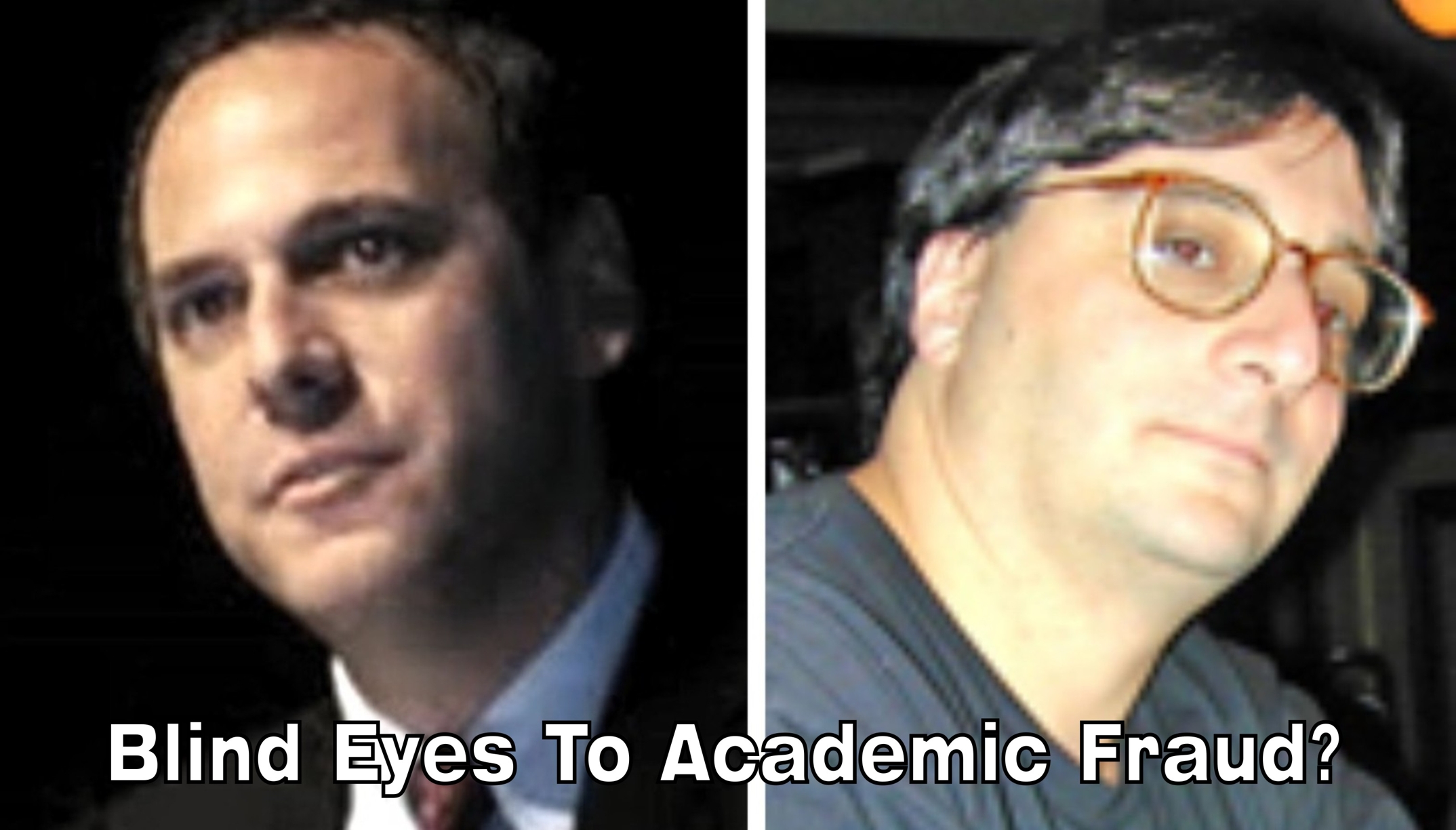
Williams College President Dr Falk, and head of psychology Dr Fein
1. The Mass-Victimhood Phenomenon
We often take note of a common “they can’t take what they dish out” phenomenon among the Sollecito & Knox supporters.
If you show unequivocally that their FACTS are wrong, and that they have illegally framed (in English) good Italian officials, they melt down with numerous shrill claims that the meanies ridiculed them - because their mission and the two perps they champion are so moral and so divine.
Doug Preston, Nina Burleigh, Greg Hampikian, Steve Moore, Doug Bremner and many others have exhibited this paranoid victimhood phenomenon.
Doug Preston even wrote an entire book-long wail about his supposed victimhood.
Foolishly perverse behavior. No police or prosecutors anywhere ever appreciate being framed.
In the US it is rare indeed. In Italy a single official complaint can spark a prosecutor’s investigation, and probable felony charges against any or all of them for obstruction of justice.
The Saul Kassin case surely has to be one of the worst of all faux victimhood cases, because his huge and very nasty swipe at Italy, with dozens of wrong facts and false accusations, was delivered as a keynote address to dozens of top justice officials from around the world.
To this day, he perpetuates this enormous academic fraud.
Presumably 100% of that global audience, ignorant of the real story (including a probable serious new felony by Knox) was frauded into believing Knox was tortured by Italians into some making a classic forced confession on Kassin’s guidelines.
2. A Historical Synopsis Of Kassin’s Fraud
Saul Kassin, an academic psychologist, established himself as an acknowledged authority-figure on the subject of prosecutor-induced false confession by develeoping a profile of such confessors.
Prosecutor-induced false confession is, of course, a real phenomenon, which has existed throughout recorded history, notoriously exemplified in modern history at the Moscow Show-Trials of the 1930’s.
Years ago supporters of Amanda Knox and Raffaele Sollecito (FOA), claiming that the pair were wrongly convicted of murdering Meredith Kercher, alleged that their “wrongful” conviction was based on a prosecutor-induced false confession, among some other things.
FOA concocted a false description of the events surrounding the “interrogation” using as many as 50 barefaced falsehoods to create a match to the characteristics of false confessors described by Kassin.
Strong fact-based reactions to this fabrication resulted in the exposure of numerous falsehoods and deceptions, in the course of which Kassin’s shilling for Knox was also criticised.
Offended by such criticism, Kassin wrote a new paper, defending his work, but sustaining the multiple falsehoods and deceptions created by the FOA.
On April 30th 2012 the American Psychologist [AP] published an Advanced Online Paper titled “Why Confessions Trump Innocence” authored by Saul Kassin (see the final version here).
In it he “described” the case of Amanda Knox, the American college student who had been convicted of murder in Italy, arguing that Knox was not guilty, and had been induced by prosecutorial-oppression into making a False-Confession.
In June 2012 Kassin presented his misleading keynote address about Knox to the John Jay College global conference (see page 31 of the program). Soon after that he made TV and radio appearances.
3. AP Publishes Non Peer-Reviewed Paper
In September 2012 the American Psychologist journal published Kassin’s paper in print-form (AP Vol.67 (6) Sept. 2012, 431-445).
When it did so, the paper was newly accompanied by Corrections and Updates, in which Kassin states that minor (sic) corrections “should be made in the description of the Amanda Knox case.”
They are not minor in their effect on the meaning of his text, but it remains untruthful as before.
The first change substitutes for one misleading false statement, a more clearly worded false statement; changes 4 and 5 modify the allegation that Guede had raped Meredith, and that Guede’s DNA had been found in sperm at the crime scene.
Not only are Kassin’s changes by no means “minor”, they are only a few of the many changes needed to acknowledge the true facts. They amply confirm the depth of Kassin’s fall into deception.
And in a ludicrously surreal development, Amanda Knox’s 2013 book Waiting to be Heard at great length parotted Kassin’s wrong claims about her wrong claims.
4. The Pro-Justice Community Dissents
TJMK and the two PMF forums and other pro-justice, pro-victim and pro-Italy websites have long explained in Posts and Comments that the Kassin paper containing 50 or more false or deceptive statements is so contrary to the actual facts as to be sheer obfuscation.
The first TJMK reference to False Confession was a comment by Faustus on Jan. 13th 2009. The first TJMK post questioning Saul Kassin was written by the Machine and published on 10 July 2012.
Since then TJMK has published more than a dozen articles focusing on the false facts and false accusations in Kassin’s presentations, with scores of comments expanding the corrections further. This rebuttal and this one were particularly key.
5. Some Relevant Kassin Background
Saul Kassin is a Distinguished Professor of Psychology at John Jay College of Criminal Justice in New York. Recently, he was listed as in a “phased retirement” as Massachusetts Professor of Psychology from Williams College, in Williamstown, Massachusetts. He received his Ph.D. at the University of Connecticut.
Kassin’s “resume” reveals that he was once very aware of the phenomenon of self-fulfilling rophecy, and very scornful of people to whom he attributed it.
In 2004, C.U.P. published a multi-author book entitled “The Detection of Deception in Forensic Contexts”, defining “˜forensic context” as any context in which legal questions are raised.
Kassin was the author of chapter 8, entitled “True or False” He then claimed “˜I’d know a false confession if I saw one”. Then Kassin repeats the well-known fact that Oppression-Induced False Confession is a real phenomenon, ridiculing other professionals with the quote “I’d know a false confession if I saw one”.
Then he describes his own recipe for “˜knowing one”, providing a profile ideal for use by Knox and FOA, after Meredith’s murder in 2007.
Kassin’s ridicule relies upon what he, himself, describes variously as “˜self-fulfilling prophecy, interpersonal expectancy effect, and behavioral confirmation’. He provides the reader with 6 references to the phenomenon, the first 2 focusing on Pygmalion, as the classic exemplar of seeing what you want to see.
[Pygmalion was a Cypriot sculptor who carved a woman out of ivory. His statue was so realistic that he fell in love with it. Making offerings at the altar of Aphrodite, he quietly wished for a bride who would be “the living likeness of my ivory girl”. When he returned home, he kissed his ivory statue and found that its lips felt warm. He kissed it again, touched its breasts with his hand and found that the ivory had lost its hardness. Aphrodite had granted Pygmalion’s wish. Shaw used this story as the subtext for his play “˜Pygmalion”, the musical version of which is “˜My Fair Lady”.]
Kassin’s “resume” also records that he served as a U.S. Supreme Court Judicial Fellow, working at the Federal Judicial Center .... Dr. Kassin is past president of Division 41 of APA (aka the American Psychology-Law Society).
Given these items from Dr.Kassin’s “resume” a reader would expect Dr. Kassin to be professionally knowledgeable in the law relevant to his specialty; Kassin definitely OUGHT to be that knowledgeable.
In “Why Confessions Trump Innocence” readers are directed by Kassin to FOA shill Dempsey, 2010, and FOA shill Burleigh, 2011, noting “personal communications with Amanda Knox, [shill] Madison Paxton, and Nina Burleigh”.
Consistent with Kassin seeing what he wants to see, his paper contains phrases such as “the case of Amanda Knox and others who are wrongfully convicted”. Kassin’s own deception seemingly promotes receptivity to deception by others.
In January the Nencini Appeal Court in Florence declared Knox and Sollecito to be Guilty-Beyond-Reasonable-Doubt. All that remains is the Supreme Court’s expected firm endorsement.
As we await the Nencini Motivazione report, the senior Florence prosecutor Dr Giuliano Giambartolomei has recently announced his findings that many claims in Sollecito’s “Honor Bound"are spurious and justify new charges being brought against Sollecito. Sollecito’s shadow-writer, the shill Andrew Gumbel, who recently published a self-incriminatory rant in The Guardian, has also been named by the court.
So now seems a great time to refresh TJMK’s reader’s awareness of Kassin’s arguments. Kassin’s false arguments were apparently communicated to Judges Hellmann and Zanetti by Knox’s lawyers, so Kassin himself may be liable under Italian Law.
6. How Dr Scott Sleek Enables The Fraud
Remember, Kassin is the cowardly man who lied about good investigators half a world a way, and quite deliberately stirred up whatever hate he could.
Here are some quotes from an article by the duped psychology colleague Scott Sleek amazingly excusing Kassin’s serial framings and obfuscations.
“Studies (as well as real-life cases in the United States) also specifically show that the presence of a confession, because it creates a strong belief, can contaminate latent fingerprint judgments, eyewitness identifications, and interpretations of other types of evidence,” he wrote.
But what particularly inflamed the blogosphere was Kassin’s use of a headline-grabbing example — the case of Amanda Knox, an American college student who was convicted of murder. Kassin had provided a pro bono analysis of Knox’s case in her appeal to the Italian court, recommending that her confession be treated with caution.
He noted that Knox had been immediately identified as a suspect and presumed guilty, confessed after three days of denials and interrogations, and did not have any attorney present when undergoing questioning. In addition, Kassin pointed out, her statements were not recorded. [Actually they were, and Knox signed every one.]
“I used it as an example, not realizing the depth of a couple of Amanda Knox hate groups that track professionals who support Amanda Knox,” he said.
Kassin said the hate emails he received, and the blog posts criticizing him, didn’t focus on the science itself, but on his motives for analyzing Knox’s case. In essence, the attacks were personal. Some of the messages he received felt threatening, he said, and included statements such as: “We know where you work.” A few bloggers also wrote posts lambasting Kassin’s integrity, in one case even calling him a “shill.”
Scientists who have been subjected to these tactics say universities, journal editors, professional organizations and others need to support scholars who face these threats to their academic work.
7. Conclusion: Fraud Kassin Now Plays The Victim
TJMK readers know very well that the above précis is an outright falsehood.
That is not at all what took place.
In his “defence” Kassin also claimed: “I used it as an example, not realizing the depth of a couple of Amanda Knox hate groups that track professionals who support Amanda Knox.”
WHAT hate groups? There are only professionals pro-justice. And why that mere “example”?
Actually Kassin placed his framing and his wrong “facts” front and center, again and again and again.
WHAT other professionals if any support Knox? The real professionals posting and reading here handily exceed Kassin’s pay-grade.
Kassin also claimed, without showing proof, that he received hate mail, and the (very detailed) posts criticizing him didn’t focus on the science itself, but on his motives for analyzing Knox’s case. In essence, the attacks were personal, he stated.
Kassin also claimed that some of the messages he received felt threatening, and included statements such as: “We know where you work” and that a few bloggers wrote posts lambasting Kassin’s integrity.
In one case they even called him a “shill”. Really? Is he not?!
TJMK is as opposed as Kassin to hate-mail. We can correct wrong facts and serial defaming right here.
But we also believe that Kassin’s adoption of Knox’s, Sollecito’s, Paxton’s, Dempsey’s, Burleigh’s, and other FOA’s falsehoods, deceptions, and his serial framings of Italian officials, was far more improper, biased, and compromising of his own integrity.
The attempt to do real damage begins and ends with Kassin. And far from not focusing on Kassin’s “science” his TJMK critics focused sharply on the falsehoods Kassin used to support his self-fulfilling prophecies. Click on links to past posts above.
The historical trap Kassin has fallen into is that of “Experimenter Expectancy”, or seeing what you want to see [c.f. Chapter 6, pp107-108 Betrayers Of The Truth, OUP, 1982, By Broad & Wade]:
Expectancy leads to self-deception, and self-deception leads to the propensity to be deceived by others.
Having fallen into the very trap Kassin himself had described in great detail in 2004, and recited in his “resume”, a legal background that ought to inform him that he was entering a potential legal minefield, Kassin proceeded, in writing, to satisfy the common-law definition of Defamation-Malice [making false statements, knowing them to be false, or made so recklessly as to amount to willful disregard for the truth].
Under Italian law, if any of those he framed complains, Kassin may be chargeable with a felony.
Kassin’s MO does entail defaming the conduct of Italian Police, and Prosecutors. He has adopted many falsehoods. There is good reason to bring his integrity into question.
His best course now would be to publicly withdraw all the many versions of his false claims. And, finally, apologize to all those he framed and the real victim’s circle,
Footnote
Everything in this post applies equally to the ludicrously inaccurate claims of ex FBI “mindhunter” John Douglas in his books and his lobbying at the State Department. Relevant posts:
Click for Post: How With Myriad False Claims John Douglas Pushes To Forefront Of Pro-Knox Crackpots
Click for Post: Was A Vulnerable John Douglas Hijacked By ‘First Generation Crackpots’ To Lie About The Case?
Wednesday, April 16, 2014
The Incriminating Bathroom Evidence: Visual Analysis shows the Footprint IS Sollecito’s
Posted by Machiavelli
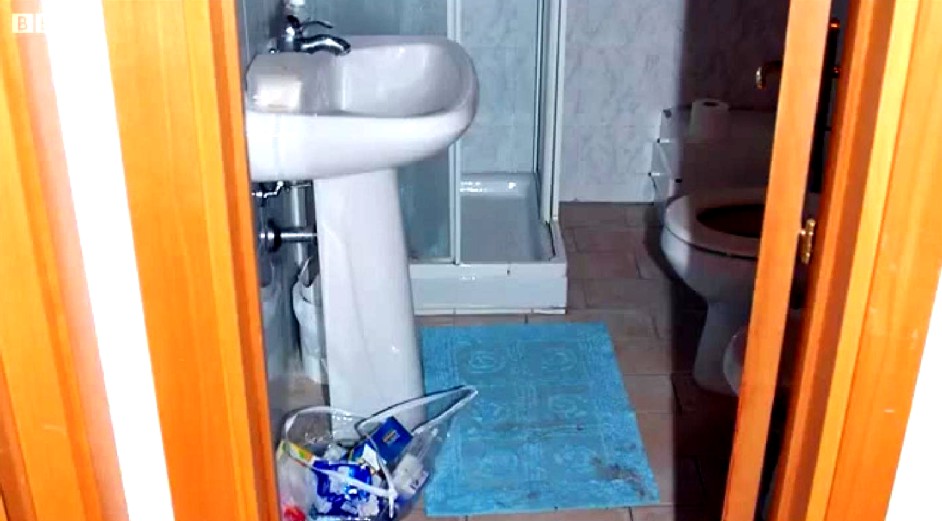
[Please click on each image for a larger and more high-resolution version]
The sheer depth and width of the hard evidence
The defenses really don’t want you to know this: in both width and depth, the full panoply of the evidence against Knox and Sollecito is absolutely overwhelming.
As we remarked in our post below there are far more and far stronger evidence points than UK and US courts normally require for conviction. But only the trial panel of judges observed anything like their full array.
The 2010 Massei Trial Report (which the Nencini Appeal court validated this past January) is a SUMMARY of what was presented to the judges in the courtroom. Those presentations in court were in turn something of a SUMMARY of the hard evidence buried in all the evidence files and the minds of witnesses.
Italian media SUMMARISED for Italians what was to be seen in the courtroom and to be read in the Massei Report. They were barely able to do even summaries for the 1/4 of all the trial hearings that were not open to the media or the public.
UK and US media for the most part didn’t even bother to provide comprehensive summaries (the very fine on-the-spot reportings of Andrea Vogt, Barbie Nadeau and Ann Wise were the main exceptions).
So in effect people in the UK and US attempting to follow the story didnt for the most part receive even a summary of a summary of a summary!
Not one US or UK newspaper or TV network translated the Micheli Report, or the vital Massei Report, or the Supreme Court appeal, or the Supreme Court outcome - only the (mostly professional) translators on PMF dot Org did all that translation.
This post is another example of how far down - beyond even Massei - it’s possible to drill into the evidence, and see it still hold up.
Some past posts on TJMK drilled down to similar depths, on the knives, on the DNA, on the mixed-blood traces, on the phone-events, on the motives and psychologies, and so on. All that evidence too all held up.
Visual analysis of the bathroom-mat footprint
This post mainly consists of high-resolution pictures and measurements. Presented like this, the pictures and measurements largely speak for themselves, and show the real strength of the bathroom-mat footprint evidence.
You will see that as SomeAlibi previously concluded using other methods, this footprint was quite undeniably Sollecito’s. It bears no similarity at all to Rudy Guede’s.
Please click on all images for larger versions in scalable PDF format
1 . [Below] the bathmat and the print, with measurement reference
2 . The bathmat print and the surrounding area
3 . The bathmat print (photo from Polizia Scientifica).
4 . The bathmat print, with vertical and horizontal sizes, from Rinaldi’s report
5. The bathmat print, photo with enhanced contrast.
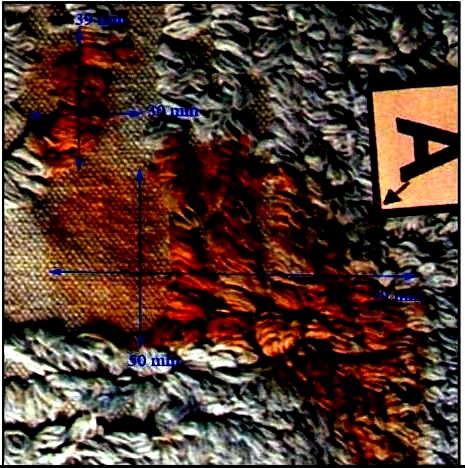
The photo above was modified by highly enhancing contrast.
6 . Enhanced contrast helps to spot some features
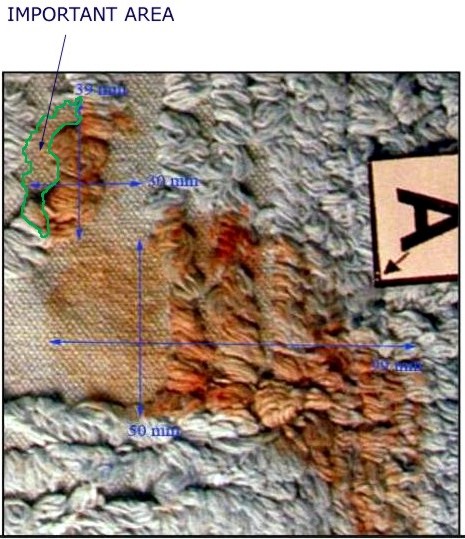
Contrast may help to highlight especially some parts of the print outline.
For example the area on the left labeled as “important area” in the picture (which was “forgotten” in the notorious photo elaborations disseminated by the ‘Friends of Amanda’ group), shows the actual left outline of the “˜big toe’ of the bathmat print.
The toe includes the area indicated in this picture (here the picture is shown again in its original colours).
7. The bathmat, with enhanced contrast
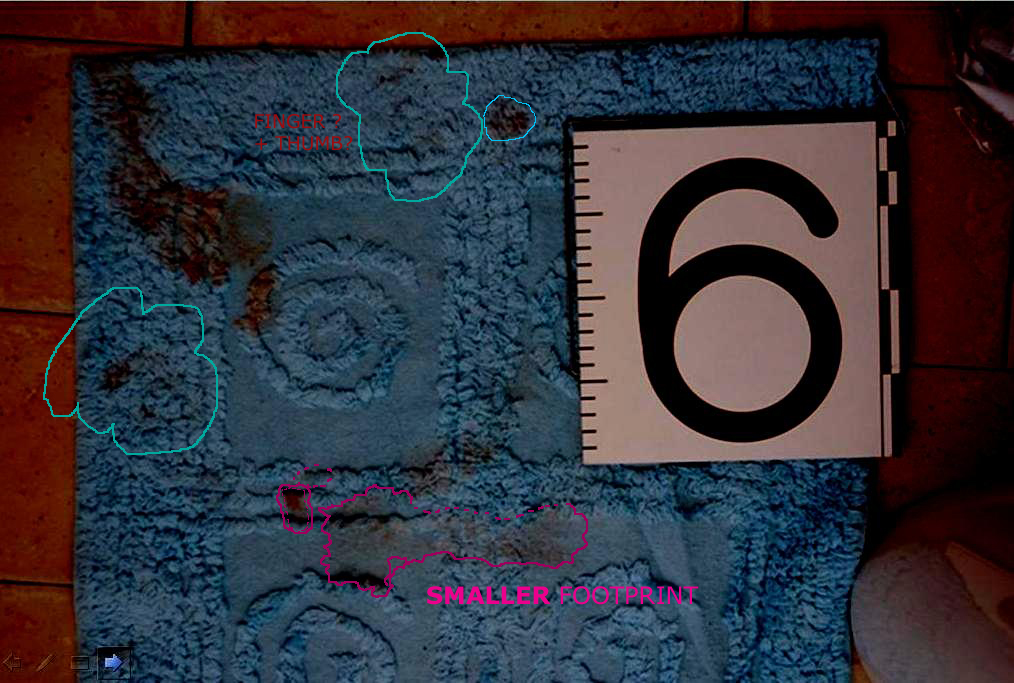
The contrasted image is showing the presence of other stains
There are other stains on the carpet (about another 10, factually situated in one half of the mat area), and also there shows a second diluted footprint (apparently from a foot of smaller size).
8. The selection of a set of red colour shades, outlined by an automatic outline generator
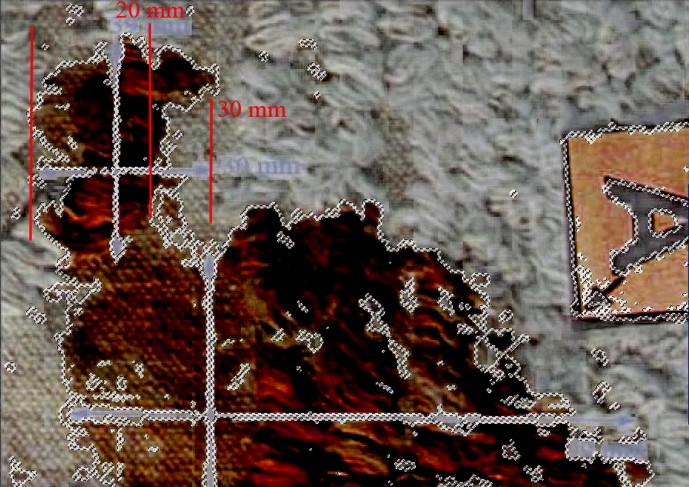
Shows the shape and the possible “˜outline’ of the stain
Reference measurements indicate the width of the “˜big toe’ in millimetres.
9 . A hand drawing of the outline (detail).
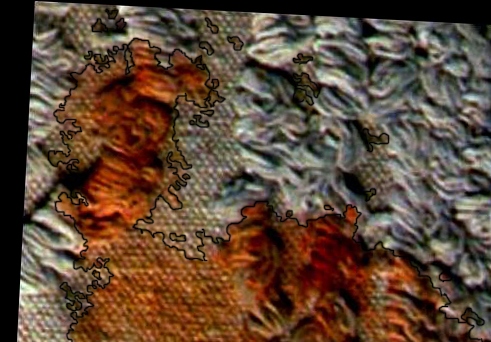
The photography above was modified
The modifications are: +28% contrast, -8% luminosity, + 20% colour saturation, from the original.
An outline has been drawn manually on the photoshop image, trying to be as faithful as possible to the actual stain.
You can notice that, apart from some minor “˜disputable’ very faint areas (such as the area between the toe and the metatarsus) there are only minimal differences between an automatically generated outline and a manually drawn one.
The shapes of the “˜big toe’ are extremely similar in both contours (images 8 and 9), in fact all meaningful features are basically identical.
We consider this manually drawn outline as good for comparison.
10 . The complete hand-drawn outline
11 . Minor detail: small dots separated from the main stain

Observe the small red ‘dots’ in the picture above
Although we can’t draw any conclusion about their possible significance, we note the existence of these very small “˜spots’ of a faint red colour shade, separated from the big stain.
They are detected by the computer generated outline above, and that we also see as distinguishable with the naked eye thus we considered them in drawing manually the outline.
We don’t draw any conclusion about them; but because of their sensitive position (they may suggest a “˜small toe’ mark) we take note of them.
The green arrows in the picture point out their position (green circles).
12 . An image in electronically modified colours
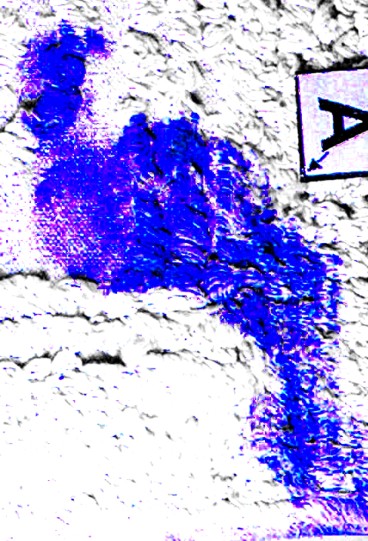
Distribution and intensity of the colouration
As a part of the preliminary study of the stain, we also produced this image above where the computer assigned an artificial colour to an array of shades of ‘red’, thus allowing to further isolate the stain from the background for further assessments about its shape.
This picture shows the distribution and intensity of the colouration. (note: the existence of some above mentioned tiny marks is recorded by this technique too)
13 . The bathmat has a spiral-shaped relief decoration
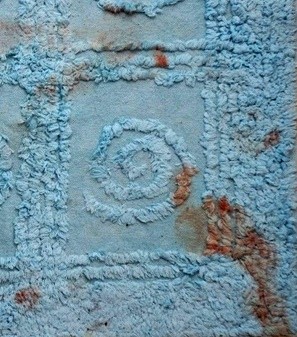
The footprint’s toe obviously balancing on top of the relief decoration.
We think the outline of the “˜toe’ mark of the bloody footprint is affected by the shape of the decoration, in particular the missing part of the toe on the right side, which is remarkably coincident with the margin of the decoration.
So that on that side there is a striking correspondence between the outline of the “˜negative area’ ““ the fabric surface around the spiral, which is lower ““ and the big toe’s outline
This indicates that the outline of that mark on that side was affected by the decoration margin, thus the print there has a “˜missing part’. So the “˜crooked’ bloody area in fact follows the margin of a larger toe.
Because of such coincidence, we can logically assume that the actual shape of the big toe mark appears to be part of a big toe, with larger surface which left its print only partly because part of its surface did not have contact with the fabric, in correspondence of the “˜negative area’.
14. The “negative area”
15. Mat decoration in relief and the toe mark
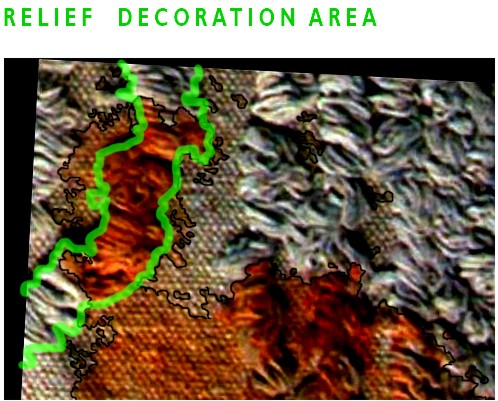
Observe above one single, unitary stain
The remarkable coincidence between the outlines of the decoration in relief and of the toe mark is shown in the picture above.
The rough contour of the print obtained through a smooth curve highlights the shape of the big toe.
Part of the relief decoration outline coincides with the toe mark outline, which shows, highlights and explains how all parts of the red toe mark, that you can see left of the relief decoration, they all belong to one single, unitary stain.
Thus we can deduce that the “missing” area on the right of the toe is determined by the decoration, and coincides with the negative area.
16. Picture (by Kermit) showing a rough shape of the stain
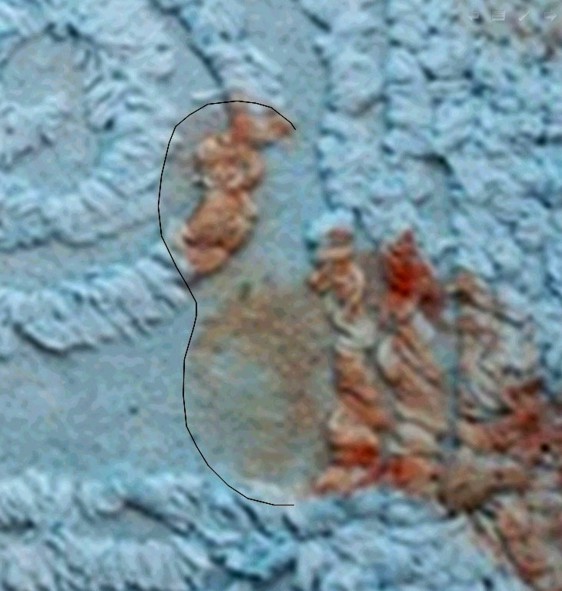
Observe shape, curvature and size
This drawing by Kermit above highlights the rough shape, curvature of left margin and overall size of the big toe.
17. Rudy Guede’s sample print
A copy of this picture together with one of Sollecito’s print at the same scale will be used for comparisons.
18 . Raffaele Sollecito’s sample print
A copy of this picture together with one of Guede’s print at the same scale will be used for comparisons.
19. Part of Rudy Guede’s sample print with Rinaldi’s reference measurements
20. Part of Sollecito’s sample print, with Rinaldi’s reference measurements:
21. Bringing all photographs down to the same scale
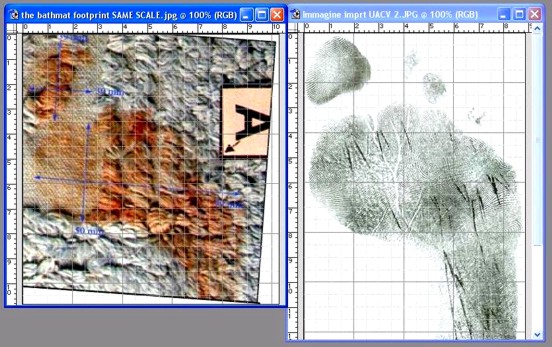
An accurate exercise of scaling was done
This was based on Rinaldi’s referenced pictures. Each one of the Rinaldi’s sample pictures has multiple measurements on several points of reference which allow a high precision determination of their scale and sizes, and thus comparison at the same scale.
In order to further increase scaling precision, the scale was calculated previously and separately for each comparative measurement in the three photos; this was done multiple times for each measurement and the average was picked in order to reduce error as for statistical measurement method.
The resulting final error in the scale is extremely small, far below a threshold of significance that could affect comparison (which was set arbitrarily at 1%, but it’s probably significantly higher, while the actual error is much lower).
In other words, the scale error that may affect your screen pictures will be definitely smaller than any possible perceivable (either significant or tolerated) difference that would be noticed or that may affect the attribution of the stain, when this is compared to the sample.
22. The hand drawn outline is shown again here
23 . The outline (matched scale) overlapped on Sollecito’s sample footprint
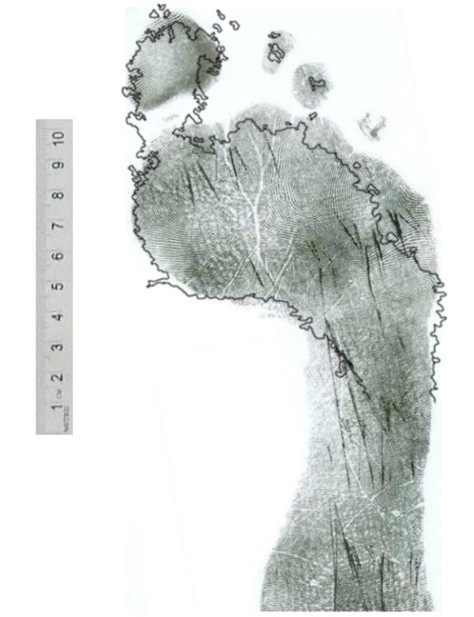
The array of compatibilities with Sollecito
The bathmat stain does not seem to have major incompatibilities with Sollecito’s print; it shows rather an array of compatibilities that can be perceived visually.
One interesting feature is the shape, size and position of a ‘big toe’, that appears as a remarkable coincidence; the toe also has a kind of cleft (see 28 below) on the curvature of its left margin. Another outstanding coincidence is the curvature of the plantar arch on the left.
24 . The same outline overlapped on Guede’s footprint
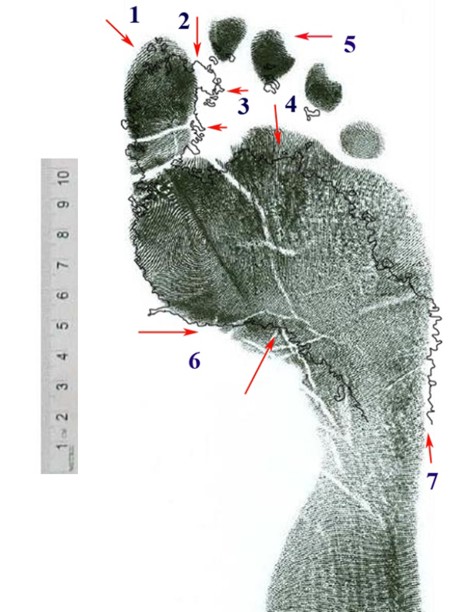
Compare with Guede’s - matched scale.
If you look at the overlapping of the stain outline (see pic 22.) with the sample of Guede’s print (see pics 17. 19.), you may notice 7 major differences, showing a failure of compatibility. Those differences are indicated by numbers (1-7) in the picture .
Each one indicates an area of major difference between the outline of the bathmat stain and the outline of Guede’s sample print. Those measurement differences are remarkably larger than those that can be detected on the overlapping with Sollecito’s sample print.
On the other hand, the compatibility between Sollecito’s print and some very peculiar aspects of the bathmat print (such as a 30mm wide and short toe) were absolutely remarkable.
The differences between the bathmat stain and Guede’s print are :
1) Toe mark of stain is significantly SHORTER than the big toe in Guede’s sample print (a difference of about 7 millimetres). Some people may want to attempt an objection, by suggesting that such a difference may be just a consequence of the position chosen for the overlapping, that maybe the bathmat print was just positioned too low in the picture, the problem may be solved by shifting it up about 7 millimeters so as to make the tip of the bathmat toe ‘coincide’ with the tip of Guede’s print toe.
However, such objection wouldn’t work; it’s a wrong argument. In fact the only possibly correct position for overlapping the bathmat stain outline is determined by the left curvature of the ball of feet and plantar arch (the area of the picture near number 6), which is by the way the most clearly outlined part of the bathmat stain. If you shift the bathmat stain upwards, the outline will miss the match with the curvature of the left margin of the ball of the feet. You will notice that the plantar arch in this area is already very incompatible with Guede’s plantar arch. It tends to become even more incompatible the more you shift the bathmat stain outline towards the toe.
The problem has no solution, since the more you shift the stain outline upwards (in the direction of the toe) in an attempt to make it look more ‘compatible’ with the length of Guede’s toe (or with an upper margin) the more it will become incompatible with the plantar arch. In order to limit the incompatibility of the plantar arch, and in order to keep an overlapping of at least the left margin of the ball of the feet, you need to place it as shown in the picture, this is the position of ‘maximum’ compatibility between the bathmat stain and Guede’s print. Conclusion: the bathmat toe is too short.
2) Toe mark of stain is TOO WIDE (30 mm). It is much wider (30 mm) than Guede’s toe. The number 2. indicates the protruding mark at the upper right, the mark which Giulia Bongiorno desperately insisted on calling a “second toe” mark. In fact, not only would the mark miss completely any hypothetical Guede’s ‘second toe’ in any possible position of the print; also you may notice (highlighted by pics 8. and 9.) how it is not a “mark” itself, but actually it just part of the same area which is entirely continuous in shape and coloration with the rest of the toe mark, and - the most remarkable feature - its right outline is coincident with the outline of the spiral-shaped relief decoration, so that you can reasonably conclude that it is determined by that (the missing area at the lower right of the ‘big toe’ is determined by the existence of the “negative area” of the bathmat decoration).
Conclusion: the bathmat stain has a wider toe mark, however one likes to call it (“big toe”, or “big toe + second toe”) that fails to match any possible part of Guede’s print. The bathmat print is clearly different and incompatible with Guede’s print. It simply cannot be overlapped to any part of Guede’s sample print. Such area is a very significant difference that points outright to incompatibility between the stain and Guede’s print.
3) The toe mark is larger also in the area located at the lower portion of the toe. The toe of the bathmat print in fact has a ‘right margin’ which actually has some additional small marks, small drops protruding towards the right, like droplets maybe produced by the wet cotton fibres of the part in relief which protrude towards the right. This tends to suggest the toe area of the stain may in fact be considered wider: the object that produced it was definitely wider than 22mm, in this area of the toe as well. So also a look at this area confirms that the bathmat stain is wider than 22-23 mm (more towards 30 mm) not just when measured at the upper corner (number 2.) but also at its “lower” parts; here, the small marks caused by the liquid suggest that a larger surface has squeezed liquid from some fabric threads leaving some trace also on the lower area.
4) Bigger incompatibility of Guede on the metatarsus front outline. This area is the front outline of metatarsus: the stain is almost 1cm shorter than Guede’s metatarsus. This happens when you chose the overlapping so as to make the left outline and plantar arch (6.) of metatarsus coincide, as in the picture. Sollecito’s sample print also shows some difference from the stain in this area (pic. 23.) but the difference between the stain and Sollecito’s print is significantly smaller than what you can see in Guede’s print.
5) There are NO SMALL TOES in the bathmat stain. Small toes are completely absent from the bathmat stain (while the tiny blood marks around the stain don’t coincide with their expected position if it was Guede’s print). Such lack of small toes is a peculiarity of the bathmat print. This is a remarkable difference from Guede’s print, and at the same time, a considerable analogy with Sollecito’s print. In fact one outstanding feature of Guede’s print is the evidence that Guede places a big load of weight on his small toes while instead Sollecito has a posture with a weight distribution with the contrary tendency, and obviously he almost does not touch the ground with his small toes.
Thus, Guede’s small toes are all very well pressed on the ground and thus, we can reasonably infer they are somehow naturally likely to get wet if he steps on any wet surface, and anyway they should get wet for sure if the foot is immersed in water or washed (the foot that left the bathmat print must have been immersed in bloody water). The murderer supposedly washed his foot then stepped on the bathmat. In order to attribute the print to Guede we should assume that Guede “forgot” to touch the carpet with his small toes (while instead he puts a lot of weight on them) or that he managed to not rinse them.
6) The outline of the stain has a PLANTAR ARCH that COINCIDES, by curvature and angle, with the plantar arch in Sollecito’s print, while instead it is very different from the plantar arch of Guede’s print.
7) The stain is larger than Guede’s print metatarsus as visible in the right area of the stain. The difference is rather significant, almost half a centimetre, that is bigger than the difference with Sollecito’s print which instead coincides for a trait. This difference cannot be “solved” in any way since, even if one wanted to claim that the scale is wrong and that the stain should be sized down, this would make the toe, already too short (as in 1.) become even shorter.
If instead the toe length is adjusted the metatarsus becomes even less compatible with Guede. We recall that Massei found that Guede’s feet had a print overall more slender than Sollecito’s.
25 . Other features:
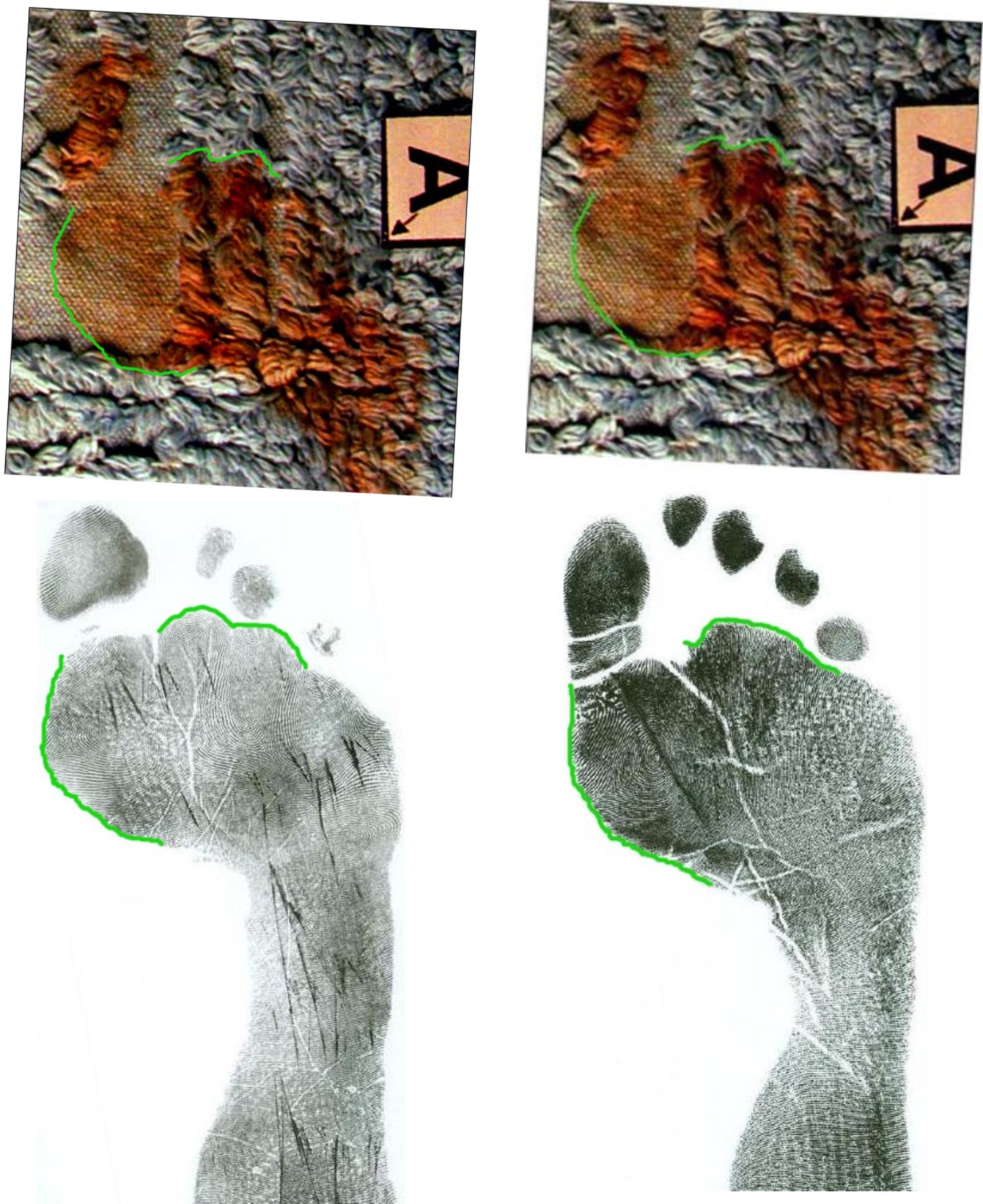
Curvatures of plantar arch are very different
The plantar arch curvature, highlighted in two different drawings (the second highlights also the upper outline “hunches”); the plantar arches in the two sample prints of Sollecito and Guede are shown below. The curvatures of plantar arch are very different.
26. The outline curvature generates different angles
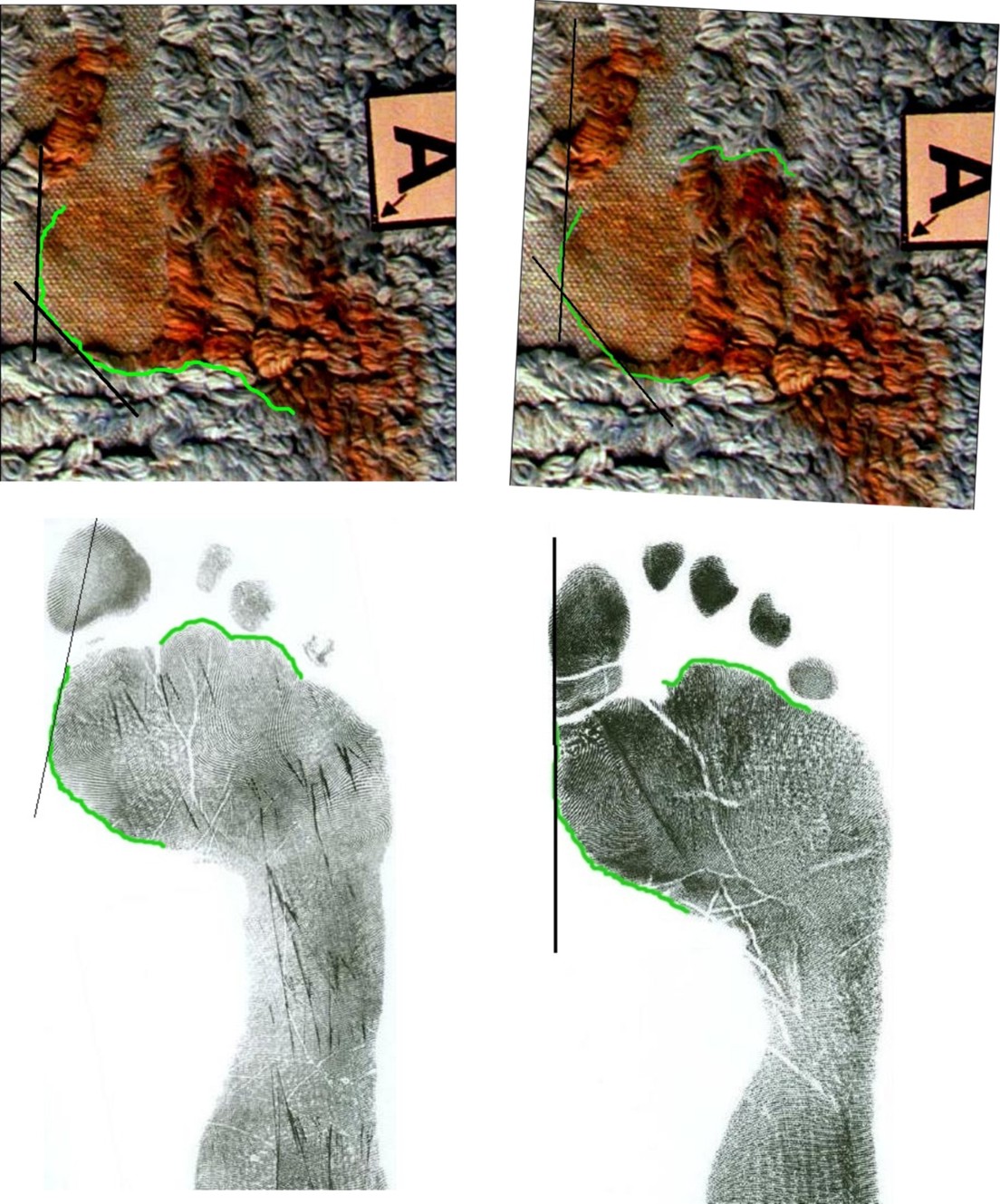
Sollecito’s and Guede’s plantar arch curvatures have very different angles. Also the left outline of metatarsus maintains a different curvature. Sollecito’s outline has an angle (see outline tangent) intersecting the toe (the metatarsus has a “bunion”); in Guede’s print there is basically no intersection, the outline and the toe form almost a straight line.
27 . Plantar arch curvature angle differs between Sollecito and Guede
If you consider the vertical axis of the sample footprint, and its orthogonal line, you may notice how the plantar arch curvatures of the two prints accomplish different angles: the two angles are VERY different, not just three or four degrees.
The (too) narrow angle of Sollecito’s plantar arch probably has a relation with the protruding outline and angle seen in pic 26., and seems related to a hallux valgus (which Guede does not have).
28 . The “cleft” on the left side of the stain
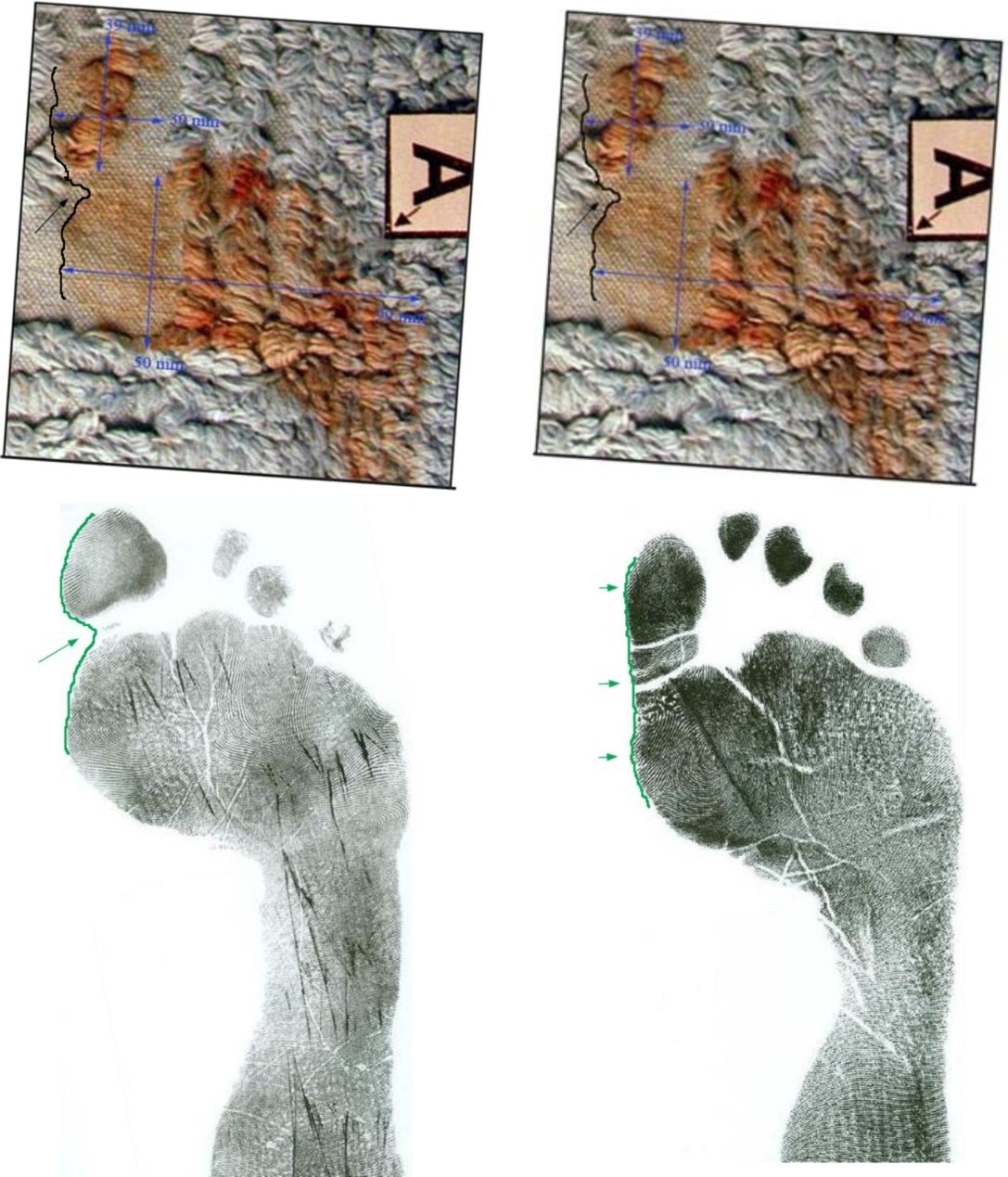
The “cleft” on the left side
This has a correspondence with one sample print, not so with the other.
29 . Table of metric comparison (by SomeAlibi)
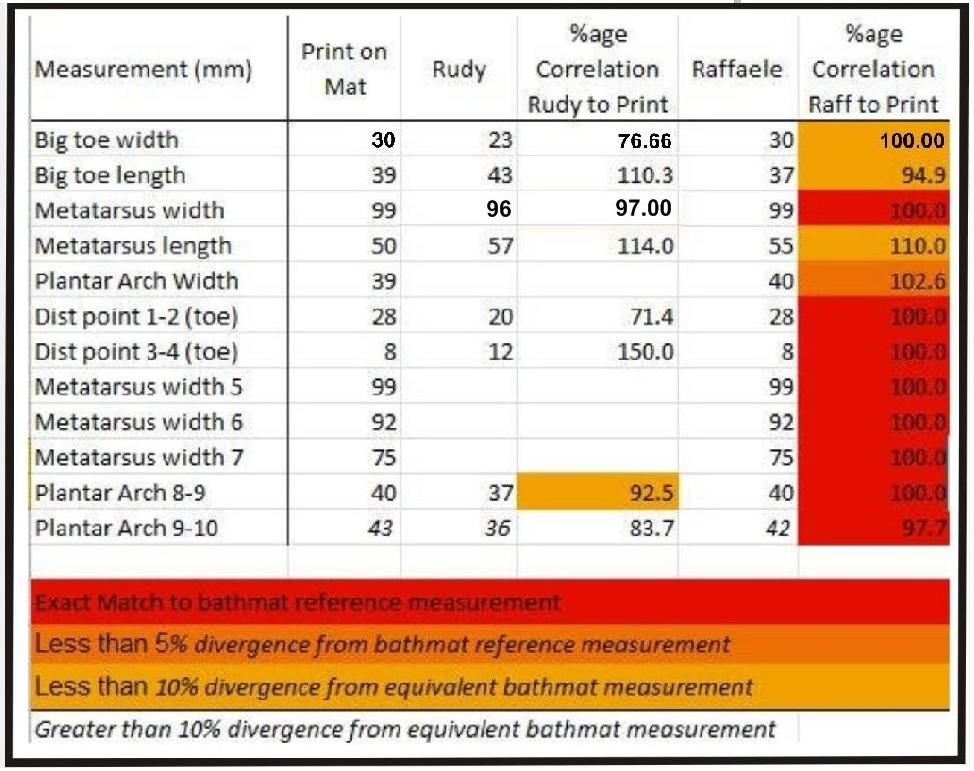
SomeAlibi’s post of a year ago
Comparison of measurements and analysis of correspondence degree of bathmat print, with both Guede’s and Sollecito’s sample prints.
Thursday, April 10, 2014
Sollecito Takes On A New Lawyer To Help Him Work His Way Past The Minefield That Is His Book
Posted by Peter Quennell
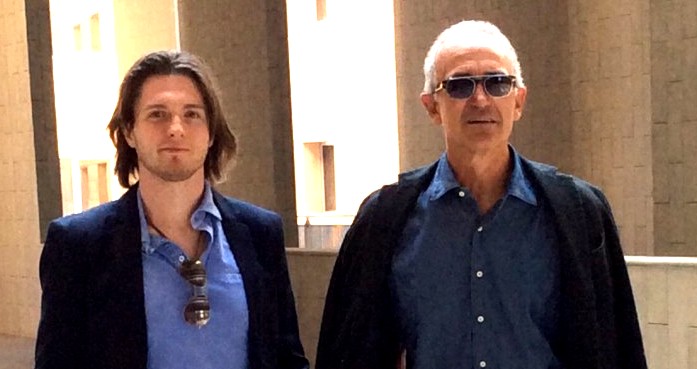
Raffaele Sollecito retained Alfredo Brizioli after he burned his trial lawyers in his book
Both Sollecito’s book and Knox’s book seem to have the primary purpose of poisoning public opinion against the courts.
The serious charges Sollecito and Knox will probably face for those books are of three kinds: (1) the contempt-of-court misrepresentation of the Italian justice system itself; (2) the obstruction-of-justice twisting of the evidence in the case; and (3) the claims of crimes committed by numerous career police and prosecution officials.
If false, in effect a gigantic frame-up that leaves Knox’s framing of Patrick in the dust.
At the eighth session of the Florence appeal court back in January, Giulia Bongiorno engaged in a day-long summation which was peculiar, to say the least.
Like Sollecito and Knox in their books, Giulia Bongiorno seemed to be attempting to put the justice system and investigation and prosecution in the dock.
If false, another gigantic frame-up that leaves Knox’s framing of Patrick in the dust.
Bongiorno’s rant didnt seem to help Sollecito in undermining any of the hard evidence in the case, and it left the judges visibly unmoved. But it was notable how closely it resembled the rants on the justice system and its officials by Sollecito himself in his book. See the examples in the post below.
There are some complex later passages in Sollecito’s book and some recurring themes that we will analyse which would seem impossible for Sollecito to write about in such detail without the extensive help of a lawyer who was in the court.
Who precisely was that?
Reports from Italy now state that Alfredo Brizioli, not Giulia Bongiorno, will be the lawyer the Sollecitos choose to respond to the investigating prosecutor’s report on the book. Perhaps Mr Brizioli (who right now is himself on trial for obstruction of justice in another case) can try to negotiate a way for his client to spread the blame before the charges are set in stone.
The Sollecitos seem weak. Alfredo Brizioli seems weak. Giulia Bongiorno seems weak. And Knox also seems weak - if Sollecito is ever going to back away from Knox (perhaps to try to claim the final murderous stab of Meredith was solely Knox’s crazed idea) there is just this one last chance.
We in no way favor Sollecito getting off lightly without recanting. We do want to point to the potential fireworks a smart prosecution has engineered that might help achieve this.
Although there was a sort of bidding war for both books, not every publisher, having seen what was to be in them, was eager to join in. Some did sit on the sidelines.
Withdrawing the two books ASAP might be the smart move. The mood in the book industry in New York, where both publishers have their HQ’s, seems to be that that move could be the wisest.
